

FREE Vol. 12 No. 2 • December 2011 • info@indianlink.com.au • www.indianlink.com.au MELBOURNE Level 24/44 Market St, Sydney 2000 • GPO Box 108, Sydney 2001 • Ph: 18000 15 8 47 • email: info@indianlink.com.au Sydney • Melbourne • Adelaide • Brisbane • Perth • Canberra Indian Link Radio 24/7 on the net Log on to www.indianlink.com.au Indian Link 24/7 Radio 18000 15 8 47 Talking business Uranium doors to open for India?

2 <> DECEMBER 2011 INDIAN LINK
INDIAN LINK
PUBLISHER
Pawan Luthra
EDITOR
Rajni Anand Luthra
ASSISTANT EDITOR
Sheryl Dixit
MELBOURNE
Preeti Jabbal
CONTRIBUTORS
Sujith Krishnan, Preeti Jabbal, Tracey Holmes, Sai Narayan, Chitra Sudarshan, Noel DeSouza, Roy Lange, Tim Blight, Thomas E King, Geeta Khurana, Malli Iyer, Candice Henriques, Juzer Pendi, Nancy Jade Althea, Sudha Natarajan, Ashita Vadher, L P Ayer
ADVERTISING MANAGER
Vivek Trivedi 02 9262 1766
ADVERTISING ASSISTANT
Nitika Sondhi 02 9279 2004
DESIGN
Danielle Cairis
Indian Link is a fortnightly newspaper published in English. No material, including advertisements designed by Indian Link, maybe reproduced in part or in whole without the written consent of the editor. Opinions carried in Indian Link are those of the writers and not necessarily endorsed by Indian Link. All correspondence should be addressed to
Indian Link
Level 24/44 Market St, Sydney 2000 or GPO Box 108, Sydney 2001
Ph: 02 9279-2004
Fax: 02 9279-2005
Email: info@indianlink.com.au

Note to uranium sale detractors
While India has hailed Australia’s announcement of a fresh look at its uranium policy, there are many detractors right here in our own backyard. They are already making their voices heard as the debate about the Prime Minister’s initiative takes the forefront for the upcoming Labor Party National Conference. Those against this proposal will urge India to use renewable energy to meet its growing requirements, without fully understanding the ground reality of the demands from a rapidly expanding middle class. Given the sheer numbers that the Indian government has to provide for, the nuclear option seems to be a better bet. The fact that it is cleaner and a move away from dependency on dirty coal, also seems to be in line with the Australian government’s commitment towards a cleaner, greener future.
Other detractors will bring up the Non Proliferation Treaty (NPT) and India’s refusal to sign it. India’s argument, that its military nuclear programme serves only as a deterrent, is not given credence. Having suffered in a major war with one neighbour (who, according to recent reports is shoring up its military along the borders again), and having fought no less than three wars with another, perhaps India’s right to defend itself can be understood?
BY PAWAN LUTHRA
Moreover, as the NPT stands today, it clearly divides the world into those who have nuclear capability and those who do not. The NPT binds signatories to never achieving nuclear capability, while putting no such conditions on the five countries that already have nuclear weapons such as the United States, United Kingdom, Russia, China and France. The NPT needs to be reviewed and made into a progressive one, which could well signify the destruction of all nuclear weapons harboured by these five nations. Is that likely to happen?
I think not!
Yet other detractors will ask whether the Australian government’s “good for our economy” reasoning is sound. At last count, there was talk of an additional 1,000 jobs in the uranium industry. For a country the size of Australia, these could be considered substantial figures to be added to the work force.
What the detractors will not consider is the advantages for Australia to engage with India over the coming years. One of the country’s foremost international
experts from the Lowy Institute, Rory Medcalf has, in The Australian, stated that while it will not be an “absolute disaster” in relations with India if Labor fails to change policy in December, “but a decision to stick with the old policy will convince India’s political elites that Labor is never going to be a natural partner for a rising India… it will be a signal that Labor simply does not trust India. This is a real shame.”
When the Prime Minister announced the commissioning of a White Paper on engagement with Asia in September, it was but logical that India would play a major role in Australia’s Asian push. This would be impossible if Medcalf’s analysis regarding distrust of India rings true in political circles in Canberra.
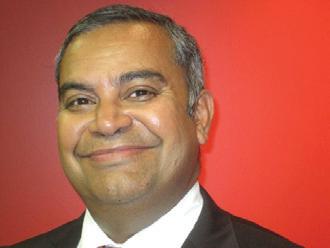
Whatever the outcome of Labor’s national conference vote on allowing uranium sales to India, the local Indian community needs to let their voices be heard either in appreciation or condemnation by raising the issue with their local politicians through 2012. For those more keen, a letter to the editor in mainstream papers or calls on talkback radio will be a good way to express their opinions. Better still, open the discussion with local Australians who can then get a wider perspective on the issue.
Be vocal, be loud, be strong!
DECEMBER 2011 <> 3 INDIAN LINK www.indianlink.com.au EDITORIAL
25 years and still cooking
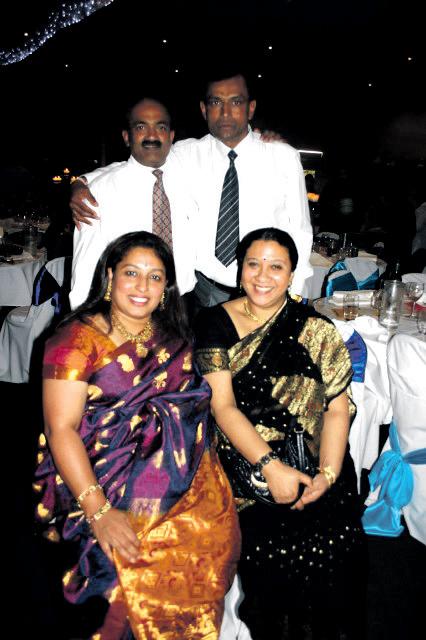
It was an evening of good times, good fellowship, reminiscing with old friends and finding new ones at the hospitality industry reunion held recently at Café Saffron in South Morang, Melbourne. In the fast changing and turbulent hospitality industry it can be difficult to keep in touch or interact regularly with peers, and there is no other event better suited to help relive past memories than a reunion. Keeping that in mind, the ex-students of Home Management & Catering Technology (HMCT) organised the second Alumni event in Melbourne in November. The first Alumni event was held in Sydney in July 2010.
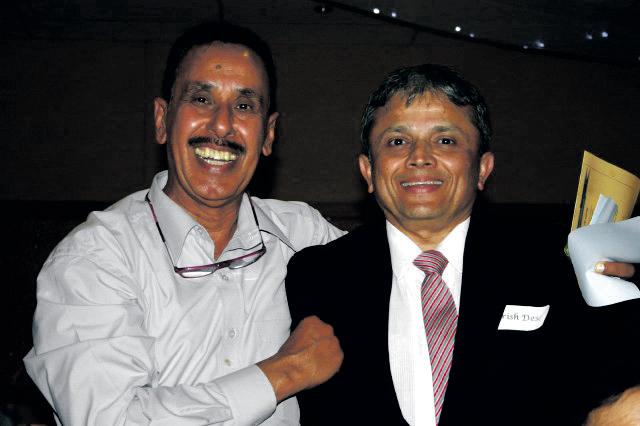
Passion is the driving force that keeps the challenging hospitality industry alive, and it was passion that got this group to migrate to Australia to seek better opportunities. Back then they were students new to the world of hospitality, now they are proud professionals who carry the spirit of the industry throughout the world. Some have since chosen to work outside the industry; however it was evident from the packed event that a majority still held nostalgic memories of their hospitality days. People travelled from Brisbane, the Gold Coast, Sydney, Adelaide and Canberra to attend this event. Over185 people attended the reunion this year, including some visiting colleagues from India.
Reunions don’t just happen. As with weddings, there are lots of details that have to be ironed out before the event. A voluntary committee worked hard for four months inviting guests, finding locations, planning activities, collecting the money and managing expenses to ensure that the event
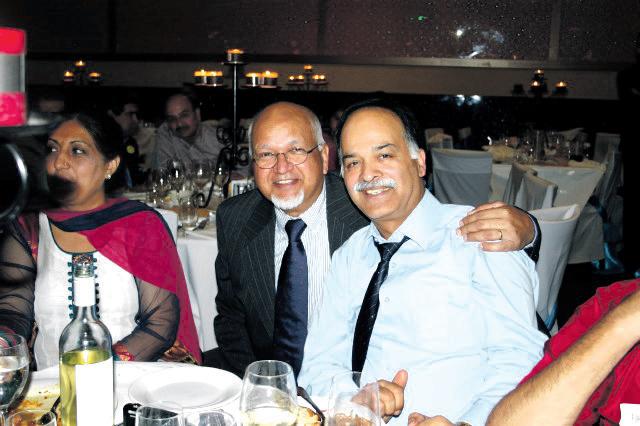


ran smoothly. The committee comprising of Abhay Kher, Anand Tak, Andani Hatrote, Anshu Malhotra, Sudhir Lad and Sunil Kokare along with their partners, put in commendable efforts to make this event a success.

The Lord Mayor of Whittlesea, Cr Rex Griffin was one of the chief guests for the evening. He congratulated the organizers for bringing the best of the hotel industry professionals from hospitality and catering colleges in India and Australia under one roof, offering them a fantastic opportunity to catch-up. T he Principal of IHM Pusa, Delhi and author of many cookery books, Mrs Krishna Arora and former student of Mumbai HMCT, and author of recipe books used in the catering classes Mr. Gopal Kulkarni were also acknowledged for their considerable contribution to the hospitality industry and the Indian community in Australia.



MC Sudhir Lad threaded the proceedings together with aplomb as he formally introduced the entertainment and awards for the evening. A peppy bhangra - performed by Swinburne Punjabi Club, a zesty Bollywood medley by Main Nachungi Dance Club (MNDC) and the popular DJ - ClubMinistry (Arya) kept the audience entertained. Raffles and prizes were handed to the winners and the sponsors were duly acknowledged. The overall feedback was very positive as many guests expressed their pleasure at meeting old friends and colleagues, and discovering how some things never change, while some things can change you forever.
Preeti Jabbal
COMMUNITYSCENE
HEAD CHEF - WILL SPONSOR
Head Chef required with experience in european cuisine for an upcoming new restaurant
ìCHICCIî in MACKAY, QLD Opening Soon!
WE WILL PROVIDE THE RIGHT CANDIDATE
• Excellent Pay Package depending on experience


• Accomodation
• Sponsorship
• Performance Bonuses
POSITION REQUIREMENTS
• Ability to handle fast pace enviroment
• Work well under pressure
• Calm demeanour
• Experience in European Cuisine is a MUST
If this sounds like you and you need a change with exellent $$$, Then we would like to hear from you! email your resume to chicci.mackay@gmail.com or have a chat with Ricky on 0433 222 062
RESTURANT + BAR
AUSTRALIA INDIA V


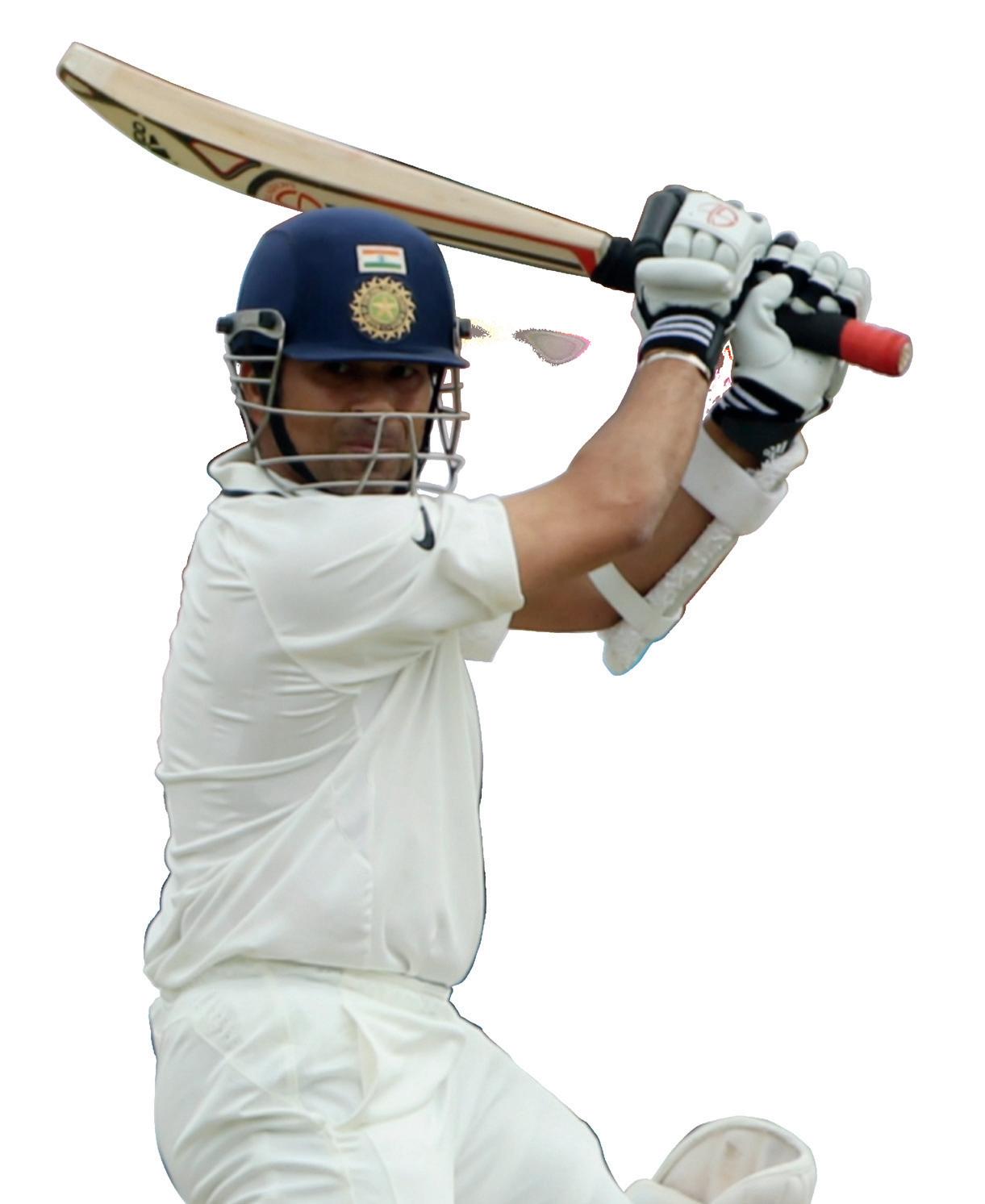

DECEMBER 2011 <> 5 INDIAN LINK
Book your tickets now at cricket.com.au
The all-conquering Indian team are chasing their first ever Test series win in Australia. Don’t miss your chance to see if Aussie stars Clarke, Ponting and Watson can hold off Indian heroes Tendulkar, Dhoni and Sehwag, on their quest to conquer their final frontier.
VODAFONE BOXING DAY TEST. december 26–30. MCG
CLARKE MCRI0278_Ethnic Press_180x260_Mel.indd 1 27/10/11 3:39 PM
TENDULKAR
The Inner East Social Inclusion Initiative aspires to build a greater sense of belonging in the community, irrespective of cultural background, age or gender and Opening Doors is a programme commenced in 2009 with the sole objective of confronting the barrier of social isolation in the community. The programme is designed to bring people together from varying backgrounds detached from the community, to help them develop self-esteem and leadership skills. It also offers support to make them
community closer in every way she could, and that was the sole reason behind her taking up the leadership programmme. Indian Link was fortunate to have had a chat with her and this reporter was blown away by her sheer resolve and ceaseless desire to lend a helping hand. It was this tenacity that spurred Ms Arora on to bigger achievements. She has held the presidential post at the Indian Seniors Citizens Association (ISCA) and continues to work actively for the Federation of Indian Associations of Victoria (FIAV). Moreover, she has been honoured with the
Mayor is one of us!
BY GEORGE THAKUR
Indian Senior Citizens (ISCA) forum meet was a full affair, to the extent that MC Andy Shome felt obliged to apologise for being a ‘bad time manager’. Associations are allocated a time-slot of two hours on weekends at the hall of Federation of Indian Associations, Victoria (FIAV), conveniently located by the Dandenong railway station and bus terminus. For the benefit of the Chief Guest, Lord Mayor Roz Blades of the City of Greater Dandenong, Andy elaborated the attributes of Diwali, painting a picture of India taken from outer space on Diwali night, for visual effect.
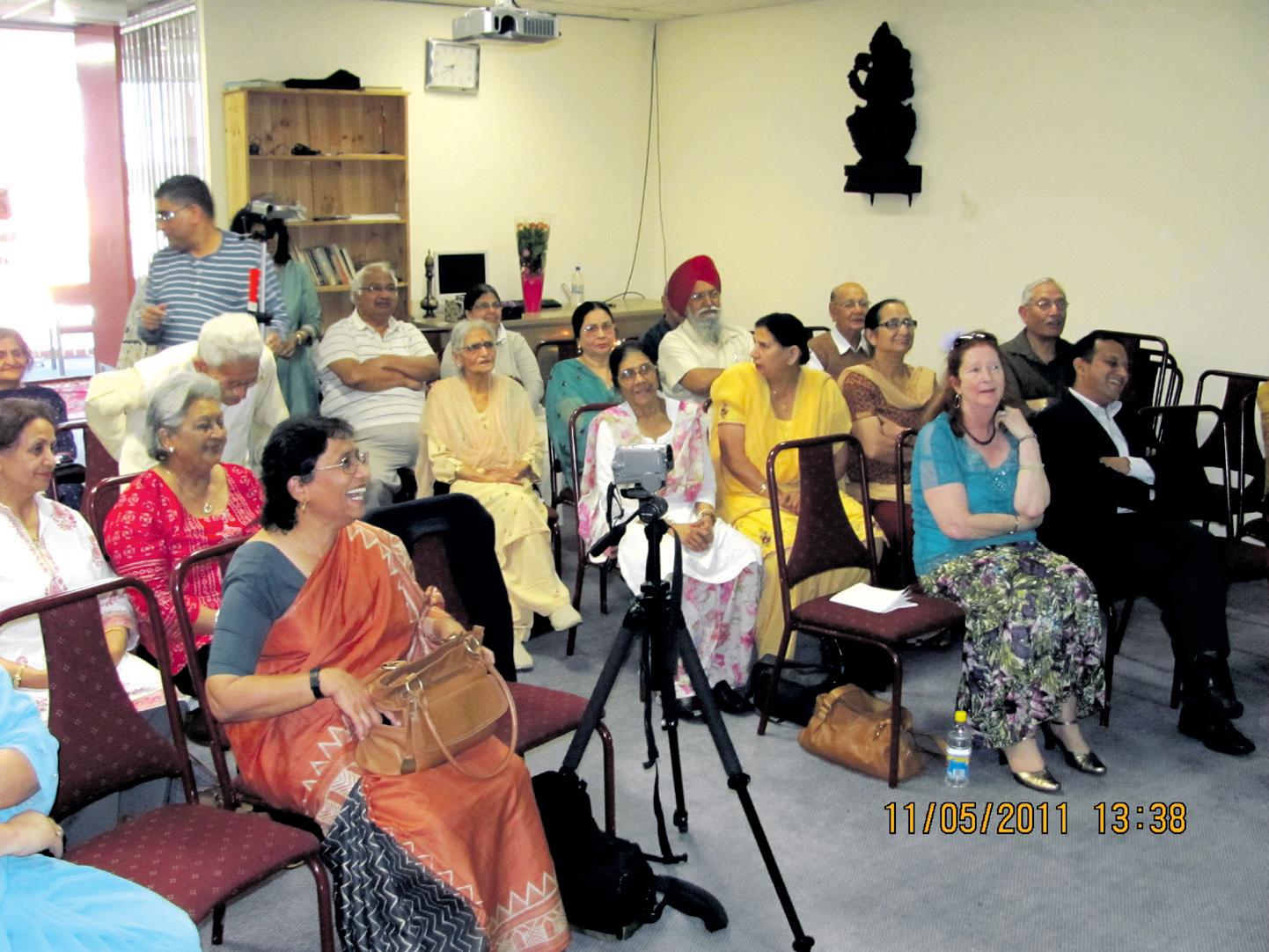
Andy, thanking the Lord Mayor for sparing his weekend to attend, welcomed 30-odd members and invited the Mayor to say a few words. Roz, in a most delightful manner, related that she was a ‘boat person’ with endless trouble with the Aussie accent when moving here, besides the local idiom and the English language in general. Because no-one could pronounce her Polish surname and as she worked for Gillette, she was allocated the nearest appropriate surname “Blades”, which she adopted since 1969. She recounted other episodes of her experiences in Australia, including coming to terms with the concepts of ‘bring a plate’ and having to ‘Glad Wrap’
her lunch, much to the delight of the audience. She was also ‘diddled’ by the used car salesman, who took her for a ride ‘literally’, like the estate agent when buying her first house. She failed to comprehend why an entire city must stop functioning in December and when she was invited to an Indian function, she asked the Consul General next to whom she was seated if the CG understood the language the actors spoke. When the CG said she did not, Roz heaved a sigh of relief and commented, “That makes two of us!” She cracked jokes about her parents conversing with the Aussies in Yiddish the only language they spoke, and overall made us Indians feel so much more at home! Roz was truly one of us, staying through the event and meeting each of us individually. A delightful discourse from a friendly ‘new Australian’ Mayor! Guru Deepika Shome presented a bouquet of roses to the Mayor, along with token gifts for FIAV President Vasan Srinivasan and Shri Auplish, the Forum’s founder.
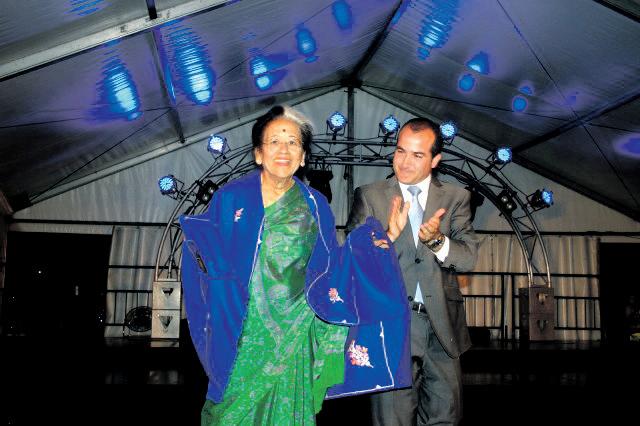

President Vasan detailed his plans to construct a 108-bed village for Indian seniors, and a hall to accommodate 400, to be used for Indian festivals and social functions. For the purpose, he travelled to Canberra and met the Federal Minister in charge. Vasan is actually trying to get a certain city boundary re-demarcated, which in my lay opinion is a monumentally difficult task, so that he may buy a 3-acre block he has in mind for the dual purpose. An indication of his persistence was in following up for seven years with a city council to have water connected to the Carrum Downs temple, until it became a reality. “50,000 hardworking Indians live in a 20 km circle in Greater Dandenong.
28 associations from Kashmir to Kanya
Victorian Senior of the Year award and has also been rewarded for her contribution to multicultural affairs in the state. Ms Arora says, “You’re never too old to learn and never too old to try something new”. A strong believer in the potential of food to unite people, she is now developing a community kitchen wherein seniors can gather, discuss recipes and cook together for the neighbourhood. There is so much we can learn from the dynamic Ms Arora, a
woman on a mission, who gives the younger generation a run for their money with her enthusiasm, perseverance and craving to live life to the fullest in the most righteous manner.
Opening Doors has now changed the lives of 75 individuals so far, and helped develop 50 community projects since its inception. We congratulate the organizers and wish Ms Arora the very best for the future.
SUJITH KRISHNAN
Kumari, are represented by FIAV,” he stated. 180,000 Indians live in Victoria, related Vasan. While Melbourne’s Greeks boast 250 associations and Italians have just 3, India has only one association: FIAV, that keeps us all in togetherness. “Indians form a larger portion of new arrivals for we are law abiding, dedicated to our causes and sincere,” added Vasan. In 2008 alone, 11,000 Indians migrated to Australia!” Informative discourse indeed!
Teenager Subhangi now rendered three karaoke songs; all fairly complex, but immaculately rendered to the extent that some attendees felt, with eyes shut, that they could hear Lata Mangeshkar of the mid-seventies singing.
Next, Neeru talked about SEVA International which collects funds for the underprivileged in India and elsewhere, and requested donations. SEVA was started in the UK to help the 1991 earthquake victims, and now functions in 57 countries. SEVA also participates in the Clean Australia movement and in motivating young people to donate blood. Subroto sang some familiar Hollywood oldies, and tea, coffee and snacks were served.
The Forum holds its monthly meetings at two venues; in Dandenong on first Saturday

Indian Senior Citizens Association’s biennial AGM in September in which members elect future Working Committee was postponed for some members raised an objection that, in contradiction to rules, ISCA has been electing its Working Committee without a formal Returning Officer. Hence, Mr. Prem Sinha was appointed as independent Returning Officer and election carried out in the November meet. The new Working Committee consists of: Dr. Prem Phakey, President. Dr. Jasbir Bedi, Vice President against serving VP Dr. Suresh Sharma. Mr. Bhim Sud, Treasurer. Mr. Om P. Sharma, Assistant Treasurer. Mr. Kaushal Srivastava, Secretary. Mr. Khalid Ally, Assistant Secretary. Mr. Dinesh Sood, Newsletter Editor. And Mrs. Nirmala Pandey, Mrs. Parminder Jabbal, Mrs. Usha Phakey, Mrs. Krishna Arora, and Mrs. Yasina Khandwala, Members.
There was a hired Security Guard at the gate. Did we expect violence, and consequently an independent eye-witness?!
GEORGE THAKUR
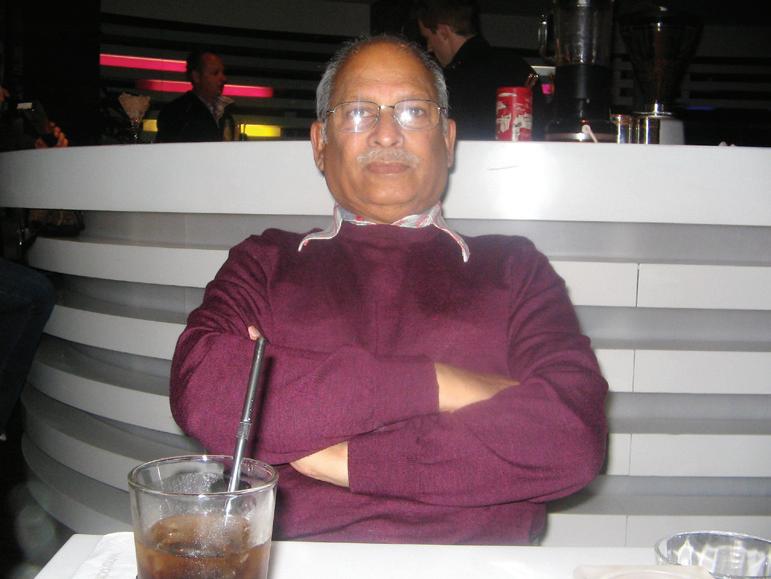
6 <> DECEMBER 2011 INDIAN LINK
www.indianlink.com.au
COMMUNITYSCENE
not cultural affiliation or promotion. Most migrants are here to make a living first and the Government needs to invest more in upgrading skills, training and developing programmes that can help new migrants in securing employment”. This and many similar comments were voiced recently by speakers at the South Asian Community Engagement Forum, hosted by the Hon. Daniel Andrews MP, Leader of the Opposition and Shadow Minister for Multicultural Affairs.
The forum allowed members of the community to express their opinions and discuss issues of importance with the Opposition Leader. The intent was to build strong communities by bridging the divide between communities and future policymakers at the state level. A cross section of people from various South Asian communities were invited to contribute to the discussion on topics ranging from foreign students, jobs and employment, aged care services and government services. The forum was chaired by Dr Manjula O’Connor from the Australia India Society (AISV) of Victoria.
Guests were divided into groups, each with a facilitator who managed the discussion, took

Forum discusses aged care, employment issues
main points that came through, in relation to foreign students, were the need for a central body to overlook the registration of international students, credibility of education, better orientation, community based support and revival of the international students legal advice service. Regular and appropriate checks were suggested for all colleges including private operators to ensure the welfare of foreign students.
According to the participants, people should get a ‘fair go’ with jobs and employment opportunities, irrespective of their background. Social security support should also be offered to them during their initial struggling phase, rather than two years later. The overseas workforce can be utilized more effectively by offering refresher induction courses and by networking with private companies to provide additional training to newcomers.
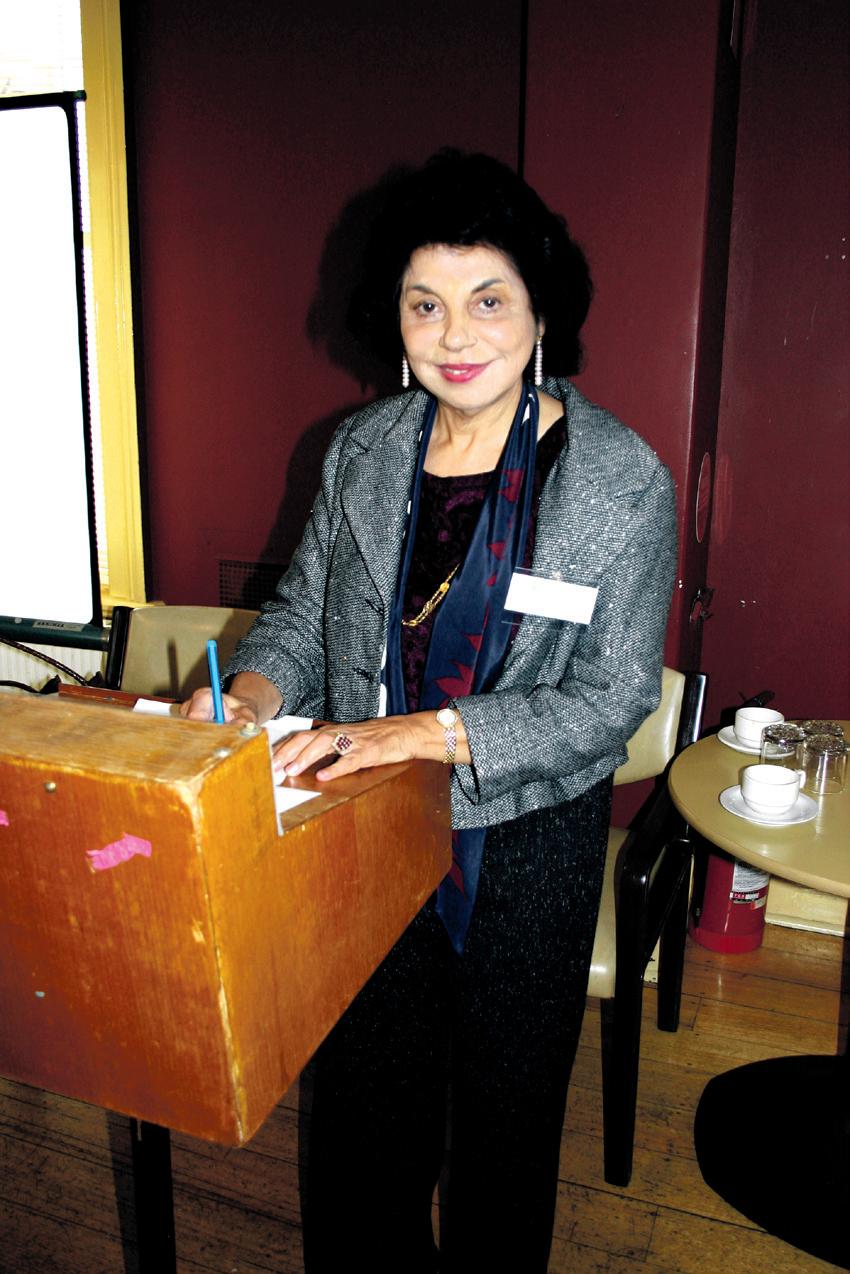


Aged care and its unique challenges were discussed in the context of food, language and religion. According to the discussion, community services could play a vital role to create culturally sensitive aged care facilities with the support of the government and the Multicultural Commission. A suggestion was
made for the Australian government to change workplace policy to include a mandatory 10% intake of migrants in the workforce, similar to countries like the US and UK. A government funded community centre was also proposed to cater to the Indian community in Melbourne.


To conclude the event, Opposition Leader Daniel Andrews said, “We are determined to stay engaged with the communities and reaching out to the public cannot be a oncein-three-years event, it should be the core business of a political movement.” Jude
Perera, MP Member for Cranbourne thanked the participants for their opinions saying, “You could have chosen to be fence sitters or naysayers; however you have contributed actively to this discussion and that is much appreciated.” According to Mr Perera, a similar forum is being planned next month that will involve foreign and local student community representatives.
Preeti Jabbal
DECEMBER 2011 <> 7 INDIAN LINK www.indianlink.com.au
COMMUNITYSCENE
Time to modernize our platform
Australia
is seeking
a fresh perspective on the issue of uranium sales to India
BY JULIA GILLARD
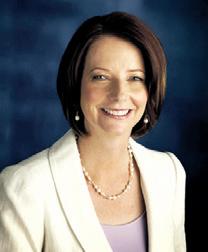
Australia and India are natural partners. We share a common region and a commitment to democracy, human rights and the rule of law. We are both global in our outlook.
Our strategic partnership is underpinned by our fast-growing trade and investment links which last year saw two-way goods and services trade reach more than $21 billion.
Australian investment in India is moving from strength to strength, with almost $4.8 billion invested there last year. Our negotiations for a Comprehensive Economic Partnership Agreement could broaden our trade and investment relationship even further and open up new opportunities for businesses in both countries.
However our relationship is not limited to the world of trade and economics.
We have significantly strengthened cooperation in education, science and research and in energy, climate change and water.
Australia and India also share significant people-to-people links that underscore the closeness and warmth of our relations. These links exist at all levels through government, business and individuals. More than
300,000 Indian born people are currently living in Australia and more than 65,000 Indian students are currently studying here. Australia, like India, is a culturally diverse and welcoming country and our shared values of acceptance, inclusiveness and openmindedness have allowed us both to forge vibrant multicultural societies.
Yet despite these links, in one important regard we treat India differently. We will not sell India uranium for peaceful purposesthough Canada is preparing to - while policy allows us to export it to countries such as China, Japan and the United States.
Playing the
Pacific game
The newly formed Indo-Oz-US alliance may seem like a good strategic move, but keeping one’s regional neighbours happy is a better option
BY ROY LANGE
The endless run of Asia Pacific conferences attended by the region’s powers has founded a deeply troubling new paradigm, with the US insisting that China must be contained by the multitude of smaller states that surround her.
Sound familiar? A muggy cold war? Beijing the new Moscow?
India plays no small part in this US obsession with the meteoric rise of China, who in ten years will enjoy a GDP that will surpass that of America, who sees India as a wonderfully heavy counterweight to the Red menace.
This has manifested itself with Gillard declaring, without consulting Rudd, her Foreign Minister who vehemently opposes the policy, that Australia will indeed supply India with uranium. This was hot on the heels of Gillard meeting with Obama, Australia’s Commanderin-Chief in Hawaii.
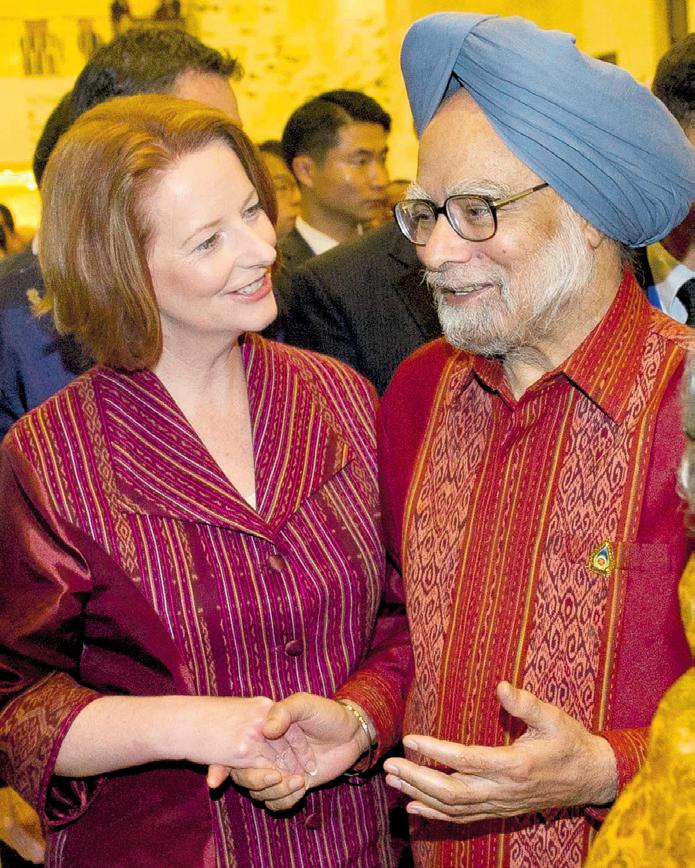
The State Department will not be devastated by India being armed to the teeth with nuclear
weapons vaguely pointed at Shanghai, and even less concerned if Indian manufacturing is better fuelled by nuclear plants.
Obama and Gillard’s announcement of the establishment of a new US marine base in Darwin has ramifications. It embitters an Australian-Chinese relationship that means so much more to Australia than it does to China.
The Australian mining sector has a steadily increasing trade with India but it is still a fraction of the coal and ore exports to the devouring dragon. The marine base is a celebrated snub to China. Australia is playing with fire and has not appreciated just how catastrophic a Chinese response would be for this country.

Chinese wealth is matching her military power, but her real immediate power is economic. She is offended by Australia having a foreign policy that is lazily xeroxed from the US. If China decided to flex her tail and discourage Chinese importers of Australian minerals, the US would be in no position whatsoever to help. Regardless of how many garrisons dot the coast.
If China does exert economic pressure, Australia will backtrack shamelessly and will
I believe it is time for the Labor Party to modernise our platform and enable us to strengthen our connection with dynamic, democratic India.
With a rapidly developing economy, India is looking to increase its development of nuclear energy into the future. This provides Australia and India with an opportunity to strengthen our economic ties, and promote clean energy development in the region.
I know this may be a controversial subject for some people. That is why we must, of course, expect of India the same standards we do of all countries for uranium export – strict adherence to International Atomic Energy Agency arrangements and strong bilateral undertakings and transparency measures which will provide assurances our uranium will only be used for peaceful purposes.
The Australian Labor Party strongly believes in the economic growth of our region. It is in our mutual interests for our neighbours to prosper. India’s continuing growth demands security of domestic energy supply. It drives things like communications networks, which drives ICT development, which in turn drives innovation, prosperity and jobs. With around 40 per cent of India’s population currently having access to electricity for less than 12 hours a day, the logic of using Australia’s uranium to provide
strongly reassess her role in the effeminate constraining of China. She cannot afford to do otherwise, because when elections are at stake, ANZUS be damned!
Can India afford to help tame the dragon? High on the agenda in this long season of expensive talk shops, was the fact that China has laid claim to the better part of the South China Sea.
This area is sickly rich in oil. India’s thirst for black gold is desperate as she increases her reach in exploration by scouting for new partners in the region. This Chinese claim of the sea confidently challenges that. It will be strongly in India’s interests to side with the region’s powers against this stake.
The Chinese claim has also scared the living daylights out of the US. Her navy’s 7th Fleet have used the South China Sea as her own by perpetually patrolling the area for decades in enormous convoys.
Paul Keating, former Prime Minister of Australia, recently made the observation that China had good grounds for this claim as the predicted US reaction to the equivalent, the Chinese Navy patrolling off the coast of Florida, would not be polite.
I believe that it should not be a given that India sides against China. In fact, India should take a leaf out of Singapore’s former dictator Lee Kwan Yew’s wizened diplomacy. My father asked him why he let the Russian fleet in after the Americans had barely just set sail out of Singapore’s docks. His answer was, “Oh David, you are so young!”
He was a statesman who knew how to play each superpower off the other. India could benefit enormously from this. A month of being Washington’s darling and the next, up for anything with Beijing. India must not be bullied into playing this counterweight role to
With around 40 per cent of India’s population currently having access to electricity for less than 12 hours a day, the logic of using Australia’s uranium to provide base load clean, reliable electricity is part of a virtuous cycle
base load clean, reliable electricity is part of a virtuous cycle.
India is a good friend of Australia and an important and valued member of the community of nations. The breadth and potential of our relationship is enormous as we continue to strengthen our ties. Together, we have a bright future ahead in this Asian Century.
China just because it fits into the US’s motives so beautifully.
India should not get involved in this game that is the same manure in a different bucket. For all the buzz that this is a new Asia Pacific stand off, China and the US have a long and bloody relationship in our region. Korea, Malaya and Vietnam were deathly conflicts that extinguished millions of civilian lives and Korea ploughed the ground for a future global nuclear war. This is plainly evident in North and South Korea.
Comically, the US’s Asia Pacific policy during those conflicts was strongly motivated by their determination for communism to not threaten the capitalist way of life. Now their motivation is to stop China being so shamelessly capitalist and threatening the US-entrenched policy of living beyond her means. Which, coincidentally, is only made possible by China being by far, the largest buyer of US treasury bonds.
India has its own destiny to reclaim and cannot be distracted by signing up as the US’s wingman in this fast developing geopolitical nightmare.
8 <> DECEMBER 2011 INDIAN LINK COVERSTORY
India must not be bullied into playing this counterweight role to China just because it fits the US’s motives so beautifully.
Are Indo-Oz relations ever going to take off ?
Despite the pros strongly outweighing the cons in Australia’s decision to sell uranium to India, internal politicking may well upset its precarious balance
 BY DARSHAK MEHTA
BY DARSHAK MEHTA
The proposed reversal of the ALP’s policy on uranium exports to India has been long overdue. It has caused considerable damage to the bilateral relationship, as India failed to understand or appreciate how Australia could sell uranium to countries like Russia and China, who, despite being signatories to the nuclear Non-Proliferation Treaty (NPT) have sullied non-proliferation records, whilst refusing to sell uranium to India.
In contrast, India has been a highly responsible nuclear power - despite scorning the NPT and refusing to sign, as it believes the NPT to be discriminatory.
The role of the United States in “persuading” Australia to reverse the policy may never come to light, but it is certainly being speculated as a part of the US effort to contain and checkmate China. This is certainly one important step in their regional jigsaw – a strong, nuclear-powered India to hold any future Chinese hegemony in check.
There has been some glaring hypocrisy practiced by Australia. On one hand it bemoans the rising carbon emissions from developing countries, but is quite happy to keep selling them as much coal as can be shovelled out. On the other hand, nuclear energy is amongst the cleanest sources of power, but for ages Australia has pursued a dogmatic, tunnel-visioned and damaging approach on this issue.
It needs to be pointed out that permitting export of uranium to India will give a great fillip to ties between our two countries which have suffered from prolonged political neglect in Delhi.
India is not desperate for Australian uranium right now, but there was a feeling in New Delhi that the Australian government did not appear to trust it, and obviously this has been a sore point (though glossed over by both sides!)
Food and energy security are the foundations based upon which there can be greater engagement between our two countries.
Now, the last hurdle on closer engagement between the two countries might be overcome and a new chapter awaits.
Or does it?
Prime Minister Gillard still has to pilot the policy change through the ALP’s National Conference beginning this weekend, and already some from the party’s endangered (some say, extinct!) left faction are making loud noises opposing this initiative. Sen. Doug Cameron has been particularly voluble.
Then, there is the poisonous relationship between the Prime Minister and her Foreign Minister, Kevin Rudd. It was extra-ordinary (though, not surprising!) that the proposed reversal of the policy was announced without even consulting the Foreign Minister. More astonishing still are the statements Mr Rudd is making about the overturning of the export ban not being a sure thing and dependent on a
bilateral nuclear safeguards agreement. Indeed, if anything, it has been the previous Rudd regime which dealt with India sanctimoniously on several issues, including uranium. The interests of the country may still be sacrificed at the altar of the ALP’s internal politicking.
Indeed, Australia has managed to score selfgoals before on more than one occasion, in its dealings with India. Everyone remembers the shrill response of (then) Foreign Minister Downer in 1998 to India’s Pokhran nuclear tests. That certainly cooled relations for a few
What exactly has Australia done when Russia and China have been proliferating nuclear technology or personnel to the likes of Iran, Libya, North Korea and Pakistan?
Nothing! Uranium exports continue as these countries are signatories to the NPT. That is all that matters. Sign up and no questions asked ever again!
Now it is not often that as Indian Australians, we get the opportunity to play a role in helping the passage of a policy dear to most of our hearts.
Nuclear energy is amongst the cleanest sources of power, but for ages Australia has pursued a dogmatic, tunnel-visioned and damaging approach on this issue.
years. And the air-play in India of the students’ bashings two years ago has seen Australia pilloried.
It was thus pleasing to see an unexpected and surprising good news Australia story from Australia – the Prime Minister’s uranium U-turn, which created a lot of goodwill back in India.
But, the Rudd response now queers the pitch and is virtually throwing down the gauntlet to Gillard.
Rudd’s megaphone diplomacy in the past has upset China. His words will be carefully pored over in North Block and may yet come back to haunt Australia. Astounding to see a Foreign Minister conduct policy and send messages through the media, and not through the usual diplomatic channels.
When will Australian leaders realise that a change in mindset is required? They fawn over the US and the UK, but lecture the rest of the world.
But it is time for the Indian community to make itself heard on this and we now need to act urgently and directly.
We need to write/email the Foreign Minister and those Members of Parliament and the Senate in the ALP who have been vociferously opposing the sale of uranium to India and some, who, though not as strident, have misgivings and are likely to oppose it anyway when the National Conference of the ALP votes on this issue between December 2 – 4.

We should be writing to these MPs and saying to them how much it means to us. We should emphasise India’s proud and impeccable record on nuclear non-proliferation and that already the Nuclear Suppliers Group of 46 countries have agreed to supply India with uranium. India can be trusted to do the right thing.
And, it should certainly be pointed out that this uranium issue is the issue which is the stumbling block to much greater engagement between Australia and India.
It was thus pleasing to see an unexpected and surprising good news Australia story from Australia – the Prime Minister’s uranium U-turn, which created a lot of goodwill back in India.
DECEMBER 2011 <> 9 INDIAN LINK www.indianlink.com.au
Alarming facts revealed on domestic violence
Domestic violence is one of the most entrenched and pervasive forms of violence in our society today. By piecing together various statistics, some idea of the seriousness of the problem can be gleaned. Statistics on violence against women remains disturbing, with one in three homicides related to domestic disputes. Research conducted in Victorian indicates that among people in the age group of 1544, partner violence is responsible for more deaths and health risks than any other factors. At least 77% of victims are girls and women, and one woman is killed almost every week by an intimate partner due to domestic violence.
A multi-ethic White Ribbon day was organized recently by the Australia India Society of Victoria Taskforce against Domestic Violence, at the Langham Hotel.

men break the silence on family abuse and domestic violence? An eminent panel of speakers touched upon topics like religious interpretation, gender bias, and role of the mother, education of youth, mental health and social research related to domestic violence. The panelists comprised of Cranbourne MP Jude Perera, Dr. Nandini Kumar from India, Prof. Ajay Kapoor, Kashif from Pakistani Students Association, CSIRO’s Najmul Alam from Bangladesh, Regional Recruitment Manager (South Asia) Deepa Matthews from CQ University, Amit Tiwary, Ananth Gopal, Sri Lankan Marketing student Jeewan Rathnayaka, Jaswinder Singh Siddhu from RMIT University, and Ash Dixit and Dinesh Nettur from Victoria Police.
The youth voice of White Ribbon Day and Bollywood starlet Divya Dhingra was the MC for the evening. She started by offering an insight into this social problem, and then invited the chief guests to speak briefly on the topic. The Counsel General of India Dr S. Behara offered his support to the White Ribbon program and said that there is an urgent need to sensitize the Indian community and other people in order to prevent this problem. Ms Heidi Victoria MP (Parliamentary Secretary to Premier Ted Baillieu) said, “We need to go further than simply responding to the problem; we need to stop it in its tracks and stem it before it happens. This can be done by engaging more people and introducing the concept very early among boys that violence is just not acceptable.”
Prof. Amitabh Mattoo, Director Australia India Institute, University of Melbourne concurred with Ms. Victoria. According to him, “Awareness needs to begin at the school level and the UN Declaration of 1993 should be included in school curriculums across the country.”
Research predicts that children between
the ages of 8 and 12 are at a stage when intervention could be successful, before the impact of violent role modelling has become entrenched in their behavioural and social learning processes. The introduction of anti-domestic violence programmes into school curricula would have the added benefits of targeting all children through a non-stigmatising process. It would also help promote new attitudes against violence, positive attitudes towards women and equality in relationships. “To understand the scope of this we need to first recognize the scale of this problem,” said Mr. Colin Brooks MP (representing Mr. Daniel Andrews, Leader of the Opposition).

The Chairman of AISV Taskforce Dr Manjula O’Connor presented her research findings on domestic violence with relation to Melbourne’s Indian community. Lord Ganesha was invoked through the Tandava dance item presented in classical Odissi style by Mrs. Rajshree Behera. The proceedings were interspersed with entertainment provided by folk dancers from Rajasthan and Punjab, and afternoon tea was also provided. CQU’s Deeepa Matthew and SBS Punjabi Radio’s Manpreet Singh summed up the panel discussions. Praising the efforts of AISV’s taskforce Ms Singh said, “We need to continue to work to enhance the safety and security of women and girls in their homes, their communities, and in disaster and conflict situations. We should focus on enhancing community-based services for women who have experienced violence, as well as building support through the health, law and justice systems.”

10 <> DECEMBER 2011 INDIAN LINK www.indianlink.com.au COMMUNITYSCENE
PREET JABBAL





DECEMBER 2011 <> 11 INDIAN LINK online www.indianlink.com.au at home / in car Subscribe to Indian Link Radio for $9.95 each month * Conditions apply: Minimum 12 months subscription, $ 50 refundable deposite call us 1800 015 847 24/7 masti Talkback News
The youth view
on healthy food
A young student proves her expertise at health research, by winning a prestigious and coveted award
BY SITARA RAMAKRISHNA
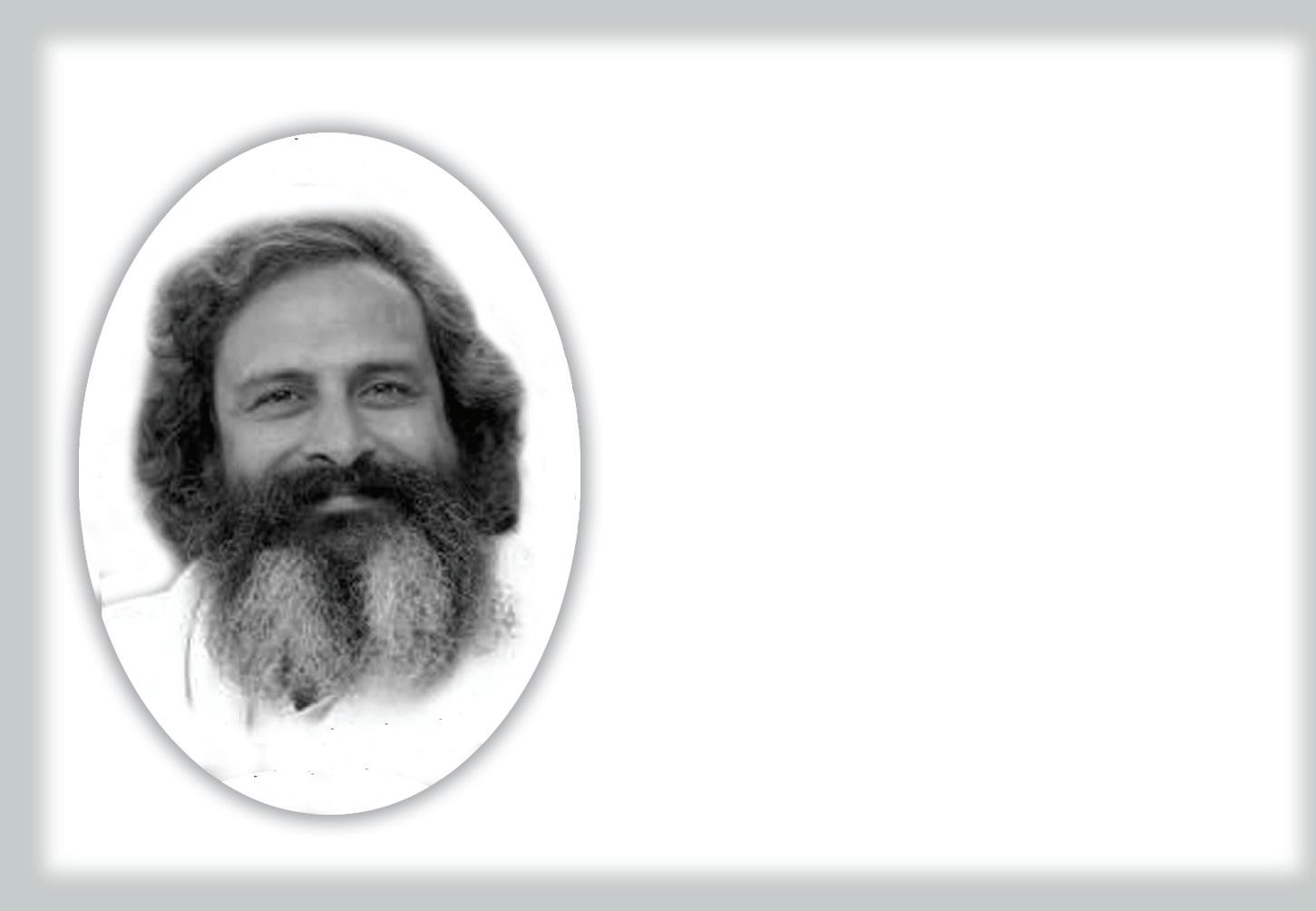
Simran Dhaliwal, a Year 9 student at Penrith Selective High School, has been named ‘National Youth Ambassador for Health Research’, following her analysis on Research Australia’s 2011 question, “How does science help make what you eat more healthy?”
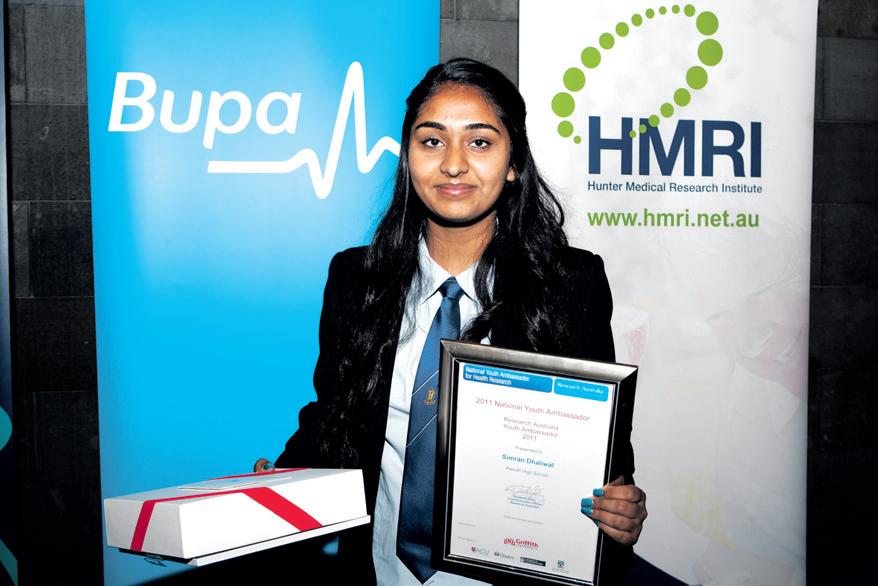
Simran was presented the award by Elizabeth Foley, Chief Executive of Research Australia at the 2011 Research Australia Awards on November 16, in a ceremony at the National Gallery of Victoria.
A significant achievement
The Youth Ambassador program developed

by Research Australia was established to involve the youth of Australia in health research and promote a career in science through its network of 170 alliance organisations. Says Simran about her initial involvement with the project, “I was looking for an organisation to work with, and I found Research Australia on the net, with details about the ‘Youth Ambassador of the Year’ program. Following further research, I became interested in the health fields.”
Now in its fifth year and with over 2000 schools competing for the 2011 title, the Research Australia Youth Ambassador program targeted Year 9 and 10 students, and sought to recognise future leaders to deliver a resilient youth voice on health issues to the community, business and government. Students are required to submit essays or YouTube videos focussing on the ‘science’ in food. They then select State winners and from them, the national winner. Simran had prepared her essay with passion and knowledge, and took the final award.
“I wrote on the discovery of super foods and their health benefits. I also spoke about Genetically Modified Foods, the debate over them and why they are in fact a good food option,” explains Simran. “As the competition ended, I wrote about the future of nutrition and the ‘meal in a pill’, which is a pill developed in the UK that reportedly gives the health benefits of a Mediterranean diet. I also included the way the media wrongly influences the public opinion on scientific innovations. One day they tell you a tomato can cure cancer and the second they say it causes
and territory winners from all over Australia came together in a teleconference and developed a consensus statement on behalf of the Australian youth on health research and nutrition. The statement was sent to state health ministers, parliament and Research Australia stakeholders. Says Simran, “We answered the questions they asked us like, what would you do as the National Youth Ambassador? We also talked to each other about our encounters on the topic and based on our speaking abilities as well as our essay or video submission, the National Youth Ambassador was selected. Last year’s WA winner recently had the opportunity to meet Prince Philip and the Queen with the WA Premier, because he was so impressed that he invited her, her family and CEO of Research Australia. So, State winners also have a lot of power.”
Research Australia’s CEO, Elizabeth Foley presented Simran the award at the National Gallery of Victoria, alongside world-renowned scientists and Nobel Prize winners, and interestingly, she was the only female scientist to receive an award through the ceremony. “When I wrote the essay, I had no idea or even thought of winning. I got a phone call saying I was the state winner and then after the telecon meeting, I found out I had won the National Youth Ambassador title,” reveals Simran.
The award has opened up an array of incredible opportunities for this young lady. “After receiving my award, I was approached by AusBiotech who wanted to put me in their magazine. I was also asked to meet the Greens and Labor parties to share my views,” says Simran enthusiastically.


“The Research Australia Youth Ambassador Program provides an ideal avenue to draw out the observations of some of our finest young students and introduce them to the wide array of career opportunities in health and medical research, ranging from the traditional lab roles to new areas such as health economics, science engineering and biomathematics,” explains Ms Foley.
A bright future
extremely limited access to healthcare. Where I live, there are probably a hundred doctors in a 5km radius!”
Simran has also inspired many young people to follow their passions, informing Australian youth about nutrition awareness, an essential prospect to consider currently, keeping in mind the alarming increase in obesity rates and exercise-free lifestyles. Being only in Year 9, who knows what her full potential could be and just how far she could go in the future. We wish her all the best.
After being chosen as the NSW winner, Simran, along with state
Evidently Simran has an exciting life ahead of her, with the highly recognised award opening up new pathways to a career in science. On top of her academic excellence, the young lady is talented in athletics, violin and the piano. She still holds on to the dream of a career in science, particularly in the field of medicine. Simran says, “In the future, I hope to become a doctor in a less fortunate country as people in other developing countries have

KNOW THYSELF AS SOUL FOUNDATION
12 <> DECEMBER 2011 INDIAN LINK
YOUTH
As the competition ended, I wrote about the future of nutrition and the ‘meal in a pill’, which is a pill developed in the UK that reportedly gives the health benefits of a Mediterranean diet
Simran Dhaliwal
Simran with Prof Peter C Doherty (who won the Nobel Prize for physiology/medicine in 1996)
Sitara Ramakrishnan, a Year Ten student of Girraween High School, wrote this article as part of her work-experience with Indian Link newspaper in the month of October 2011.
Mentoring in Mumbai
BY PREETI JABBAL
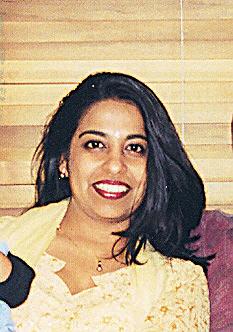
Do you remember the time when local newspapers in India carried reports of Indians who were heading to foreign countries to study or work? The reports generally featured a photograph of the beaming offshore bound travellers sporting an auspicious garland and vermilion mark, and the text marvelled at their wonderful achievement and wished them well for their future. Similar sentiments were echoed when Melbourne businessman Prakash Menon, or PK as he is known, decided to walk out of the safety net of his brilliant career in Australia to grapple with the emerging, albeit challenging Indian market.
Having lived in Australia for 21 years, PK has been through the typical migrant grind to reach the top echelons of the retail supply chain in Melbourne. PK started his career in hospitality with Taj Hotels and Resorts, and within 6 years became the Food & Beverage Manager. He met his soul-mate and wife Manisha while working there and together they migrated to Sydney in 1990, with only $ 500 of borrowed money in their pockets. Initially Prakash struggled to find a job and lived on cCoke and McDonald fries. He cleaned toilets to make ends meet, but he persevered and got a job in junior management for Manager Director for Myer Pty Ltd, Australia’s leading department store chain. Within 8 years he became the Director of Supply Chain, followed by Director of Logistics with the renowned retailer. He worked for Myer for 16 years, until August 2011, when he left to start his own entrepreneurial journey.

PK is currently a Non Executive Director at OKMe, Director and Investor at Shooii, CEO and Business Mentor, and an accredited Thought Leaders Mentor. PK has authored three books due for release in the new year including his memoir, Driven: From Mumbai to Myer, a business book called Harnessing the Retail Revolution, and a close look at some of the most influential and
What’s On
Brush Strokes of Essence
Upto Friday 16th December from 10am – 5pm (Mon-Sat) at Fo Guang Yuan Art Gallery, 141 Queen St, Melbourne. Jayshree Leigh, Visual Artist will display her second solo exhibition. Enquiries: Andrea Makris 9417 6777 events@multiculturalarts.com.au
NRISA picnic
Sunday, 18 December from 11am onwards at All Nations Park, Northcote, Separation Street, Northcote. Meet at 18-A Bent Street,
successful business leaders and mentors around the world, and the tactics and leadership characteristics that have put them where they are today. PK’s latest venture is to base himself in Mumbai to develop Thought Leadership Mentors and offer expert retail advice.
PK’s decision to shift his strategic sights back where he came from roused curiosity. Given the booming economy in India, is it the perfect executive advancement? Is it a combination of altruism and keen business acumen? Or is it due to his propensity to rollercoaster career rides where he reaches giddy success, only to start from ground zero again? What is the driving force behind his unconventional decision?
“I believe that keeping within our security blankets inoculates us against connected thinking. It is time to engage with contemporary movements and acknowledge the profound changes that are happening in the world, and India is in the thick of that dynamic, forward-looking, and competitive space. Quite simply, India is the place to be,” he said. “Real progress and achievement is about genuine long term commitment. For me this isn’t just a short trip to test the waters; I intend to stay and I have already got myself a place in Mumbai,” shared PK enthusiastically. “My stay is indefinite at this stage and the plan is to develop amazing Thought Leaders, however long it may take” he added.
Prakash’s profile lists him as CEO and Business Mentor, Thought Leader Mentor, Keynote Speaker, Entrepreneur and Retail Supply Chain Specialist. His multifaceted skills are being honed and tested in a country that has long moved on from when he left. With its unique combination of economic orthodoxies with rapid innovations, the Indian market is a tough turf from which to operate. Before he headed off to India, PK’s life was about giving speeches, writing books, attending meetings and consulting. Now it is all that and fielding with unpredictability. “I already have enough material to launch my fourth book on the trials and travails I have faced with beaureaucracy in the month that I have been here” he said with a touch of amusement.
Not one to be deterred, PK is very enthusiastic about the upcoming launch of Thought Leaders India/UAE in Delhi and Mumbai in the middle of December. Hotel Hotel Thought Leadership is based on the premise that our ability to capture, package and deliver ideas for greater commercial success is the key to achieving competitive advantage in business today. The Thought Leadership Advantage programme, at entrepreneurial level, helps business owners to develop intellectual property that creates an exponential lift in the quality of their sales and enquiries. It also helps large organizations, at an intrapreneurial level, to attract, retain and develop talented people.
Father of two boys, PK has the rare
capacity to charm, inform and influence at the same time. According to him he is on a journey of fulfillment and wants to leave a legacy; and what better opportunity than to go back to India which has only recently announced promising reforms within the retail sector. “We are in a transitional moment culturally,” said PK. “We are moving towards a network model where we use the internet, multiple groups and like-minded individuals to look for new ideas and question the old. At Thought Leaders it is all about sharing knowledge, not hoarding it. This is what I am here to do and I am energized by this change, and really optimistic about it,” concluded Prakash.
Northcote (Mel. Ref.: 30 D7), then walk to the park or meet us at the park directly. Bring your own hamper of food and drinks.
New Year Eve dinner
Saturday, 31 December from 8pm onwards at Asha Indian Restaurant, 937 Plenty Road. Melway Ref. 19 D7. (Tram Route Number 86, Stop No. 59). Cost: $27 Adult, $13.50 for 5 to 10 Year olds, free for under-5. Entrée, buffet and dessert
with BYO drinks (no corkage charges). Organised by NRISA. To book please call or email Rajender Chopra on 0401 681 330, 9440 5339 or Dr. Nalin Sharda on 0402 108 512, NalinSharda@gmail.com
“India is...” Global Video Contest
Upto December 31, launched by the Ministry of External Affairs (Public Diplomacy Division), New Delhi. Global video contest, make a short video on the theme of ‘India is….’ A reputed jury will
select the best entries, winner announced in March. For more details visit www.indiais.org
Shankar, Ehsaan, Loy concert
Saturday 25th February 2012, 7 pm onwards at the Plenary Theatre, Convention Centre. For the first time in Melbourne, Shankar Mahadevan, Ehsaan Noorani and Loy Mendosa will perform live. Tickets: $195 and $145. For prime seats contact: Anita on 9846 2595
DECEMBER 2011 <> 13 INDIAN LINK COMMUNITYSCENE
A dashing entrepreneur takes the innovative concept of thought mentoring to key cities in India, with the determination to succeed
Helping the deprived through sport
The Sport4all Foundation comprises of a group of individuals who help the underprivileged in society throughout the world. What makes this organization atypical is that its objective is to empower the disadvantaged using sport as a medium, which they believe helps establish a sound state of mind and wellbeing that adds to the welfare of the community. Indian Link met Biju Philip, Chairperson of the Sport4all Foundation who, apart from being a certified Accountant, is also an accredited soccer coach with the Football Federation of Australia (FFA), currently coaching juniors at FC Bulleen in Melbourne. Biju’s ambition, apart from his humanitarian work, is an aspiration to see India grow into a major force in the world of soccer in the future. Moreover, he is conducting research, as part of his PhD program in 2012, on how sport influences an individual’s wellbeing, for which he intends to travel to different parts of the world.
The mission of the foundation is to instil a structured knowledge of sport in order to empower people from all walks of life, and in particular the low socioeconomic communities across the globe. The Foundation has successfully carried out junior soccer and athletics programs in Chennai and Costa Rica this year, with many more global destinations in the
pipeline. They also hope to implement a ‘Continuous Sports Development’ programme in the near future, to offer structured training for coaches. “We have been taught to give something back to the community when we can, and that is what I attempt to do through Sport4all,” says Biju, who would like to reach out to the deprived communities both locally as well as internationally, through the Foundation.
When asked why a sport and not basic necessities such as food, education and shelter for the disadvantaged in society, Biju explains, “Sport can improve an individual’s state of mind, health and well-being, which lays the foundation for self-esteem and confidence, thereby, adding to the welfare of the community.” To prove his point, he pointed out that apart from his coaching activities, Biju runs an informal soccer training session for children and has had parents compliment him for bringing about improved conduct in their children. Even though the main target of the foundation is the deprived, Biju reinstates that the programmes are open to anyone.
However, in their quest for global reach, organizing finances is one major obstacle the foundation faces time and again. They have to manage travel and other expenses when abroad from their own pocket, which compels them to plan social work during their holidays.
When I posed arguably the most challenging question as to why the Foundation has chosen soccer over cricket in a country like India, he says, “Cricket is popular because it is the result of an effective foundation and youth cricketing programmes. However we need to and aim to imbibe the same values and provide efficient grassroot level coaching facilities in soccer.” On the future prospects of soccer in India, he points out that India should draw inspiration from the African footballing nations. He says, “Soccer is for everyone; every child should have a ball. It’s a ripple effect that we hope to bring about.”

Biju’s undying determination comes to the fore again when he mentions that in future he intends to approach the state soccer associations in the country to improve the nature of the sport here. However, at the moment, he hopes to spread the word about Sport4all and its programmes. Despite having faced outright denial from many quarters, Biju says, “It has not dented my confidence and I keep trying because I believe we have the potential to offer the sport so much more, provided we start making the right moves
now. My experience with the Foundation has given me a feeling of accomplishment in life that is superior to my professional achievements.”
Biju Philip is truly a humble, yet motivated person doing the best he can in a discreet manner and should be commended for his persistent efforts. For those interested in more information about the foundation and its programmes, visit the website on www.sport4allfoundation.org
Biju is currently in India trying to initiate coaching programmes in Kerala, Tamil Nadu, Andhra Pradesh and Orissa. We wish him and Sport4all the very best.
SUJITH KRISHNAN
Rocks remain unbeaten in cricket tourney

Ulhas who remained unbeaten, scoring 23 runs. Ramanand and Sriram were the most successful bowlers.
There was a sense of déjà vu in Tuskers’ chase who at one point were cruising towards victory. Mandar, Nitin, Ramanand and Sriram got off to reasonable starts, but failed to stick as the innings progressed. The match might have scripted to a different finale had one of them taken the responsibility of seeing the team through to victory. Ultimately, the Tuskers were bowled out for 84 runs in the penultimate over. Satish was the most successful bowler for Jai Hind.
Jai Hind beat the Tuskers by five runs
Opting to bat first on match day 3, Jai
Hind scored 88/5 in 25 overs. Openers
Arun Sarve and Shantanu made a sedate, yet effective start to the innings. Arun played a typical Dravidesque innings, top scoring with 32 runs. The other major contribution came from the dependable
Despite losing on the day, it was a wonderful gesture by the entire Tuskers team to give Arun a standing ovation for upholding the true spirit of the game by recalling Mandar earlier in the day after a dubious LBW decision.
Southern Rocks beat Strikers by 36 runs Batting second has proved to be the tournament’s Achilles heel so far, therefore, it was a gamble by Mihir, captain of Strikers, opting to bowl first upon winning the toss.
Openers Mastaan and Subbu combined well to put up an opening stand of 31 runs but with the score a fragile 3/49 after 15 overs, anything close to 100 runs by the end would have given the Rocks some respite. However, Ashok played a gem of an innings scoring a belligerent 45 runs altering the entire scenario. Pradeep, Senthil and Raghu also joined the party and their contributions proved vital as well. By the end of the innings, Rocks had piled on an imposing 133 runs. Strikers must be lamenting the dropped catches and run out opportunity early on in the innings which might have changed the course of the innings.
Needing a blistering start, Strikers lost both openers early, credit going to the dynamic opening bowling duo of Pradeep and Subbu. Anil and Nanda put on a good partnership, but were unable to muscle the run rate in their favour. Despite being marginally ahead of the Rocks by the 15th over mark in terms of run rate, the Strikers failed to score big runs thanks to a fine combined bowling performance by the Rocks. Mihir scored a well-complied 21 runs and any hope of victory was snuffed out with his dismissal. Strikers ended their innings scoring 8/97 in 25 overs. In the end, Ashok’s performance with both bat and ball was the decisive factor behind the Rocks’ comprehensive win.
Rocks beat Jai Hind by 21 runs
As anticipated on match day 5, this match between the top two sides in the competition proved to be an enthralling contest.
Electing to bat first, Mastaan (19 runs) and Pradeep (40 runs) did well to keep the score ticking for the Rocks with the odd boundary and by stealing crucial singles and twos. Later on in the innings, Ashok (33 runs) and Pradeep took charge of proceedings and combined efficiently for a rapid partnership of 66 runs. Jai Hind managed to pull things back in the last five overs of the innings, leaving the Rocks to settle for an impressive 131/8 in 25 overs. For Jai Hind, Tushar was the most effective bowler.
Chasing 132 for victory, Jai Hind got off to the worst possible start losing their captain and versatile batsman Arun early. Jay (23 runs) and Sparkal (17 runs) kept the runs flowing but were dismissed in quick succession. Tushar scored an aggressive 39 runs, threatening to take the match away from the Rocks and victory was in sight for Jai Hind as long as he was out in the middle. Tushar and Ulhas went on a rampage, scoring 13 runs in the 21st over off Ashok to narrow down the victory target to 25 runs off 24 balls with five wickets in hand. However, Subbu bowled a magnificent 22nd over to dismiss Tushar and then Vardhan off consecutive deliveries, and the momentum swung back in the Rocks’ favour. With 22 runs required off the last 18 balls, Ashok outfoxed the remaining batsmen leaving Jai Hind high and dry with a total of 110 runs with 13 balls to spare. It was another fine all-round performance by Rocks who at this stage of the tournament are the team to beat.
SUJITH KRISHNAN

14 <> DECEMBER 2011 INDIAN LINK
COMMUNITYSCENE
Three matches of the Amba Bazar cricket tournament were played in the month of November.

DECEMBER 2011 <> 15 INDIAN LINK
Prof Rao reveals India’s scientific challenges
 BY SUJITH KRISHNAN
BY SUJITH KRISHNAN
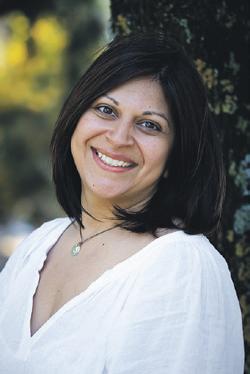
Keeping with the drift of consolidating relations between host nation Australia and India, the Australia India Institute (AII) in collaboration with the RMIT University and the Victorian Government, organized an exclusive lecture on Science: Its future in India, presented by the scholarly Prof CNR Rao, Linus Pauling Research Professor & Honorary President of the Jawaharlal Nehru Centre for Advanced Scientific Research in Bangalore, and Chairman of the Science Advisory Council to the Prime Minister of India. Words fail to encapsulate the eminence of Prof Rao who has not only immersed himself in the field of research in the last 60 years, but has also worked as a Professor for nearly the same period. In his discourse, Prof Rao took us through a journey that touched upon the amplification of science in India from the 1950s to the present, and also the imminent challenges that lie ahead for the nation.
Once science was acknowledged as an engaging and influential subject of study in India in the 1950s, further progress in sectors such as banking, business & institutional funding in the 70s and 80s paved the way for a steady growth
in the number of universities, facilities and resources, all contributing to the advancement of science in India. However, Prof Rao pointed out that India has failed to make any substantial progress since the 80s, which is why our contribution to science on a global scale is a meagre 2.5%. Comparisons with China are inevitable today as China, along with other Asian nations such as South Korea and Singapore, have been effective competitors in the province of world science.
According to Prof Rao, “India has to reassess her focus on the capacity of the nation first before competing with the likes of America and China because the country lacks the quality, talent and resources at the moment to play a significant role in science.” He attributed this to the declining standards of universities in the country, along with lack of interest by people in considering science as a viable career option. We have also had to grapple with long-standing issues of population, agriculture, climate, water and energy.
However, in his discourse, Prof Rao failed to offer solutions to these challenges, which made the topic seem incomplete. He vaguely referred to creating opportunities for innovation, furthering investment in energy and the importance of education, as solutions to improve India’s role in science without going into further detail. A fascinating topic indeed, but cut short due to time constraints.
Children’s Day celebrated through song and dance
The Hindi Shiksha Sangh (HSS) is an organization that advocates the Hindi language and upkeeps the culture, values and tradition of India in Australia. On the eve of Children’s Day in India (Nov 14), HSS organized an event aptly titled ‘Bal Diwas’ at the Indian Consulate in Melbourne on November 12, to celebrate the occasion.

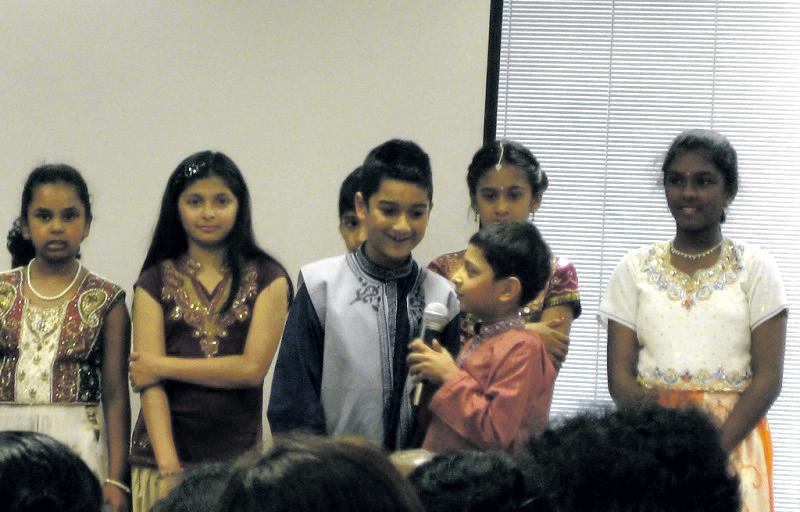
It was refreshing to witness an event where the Hindi language was the favoured medium of communication with the audience, and it was equally appealing to come across many students speaking
the language fluently. The emcees did a commendable job and the evening featured an array of performances such as poetry, skits, orations, dances and songs by the students. It was pleasant to watch students from all age groups perform and the performing arts teachers should be commended for persuading all the students to participate. The parents and families who stayed on till the end of the evening to show their support to the children deserve a pat on the back.
While the performances showcased young talent, the sound system playing up caused
some uncomfortable moments. The event continued for over three hours, but still could not accommodate some performances and the awards presentation. However, the students and their energizing performances added a fair bit of entertainment to the
evening. The performances were varied, from the talented to the amateur, but it is commendable that the HSS allowed all the children to participate and enjoy their moments in the spotlight.
SUJITH KRISHNAN

16
INDIAN LINK COMMUNITYSCENE
<> DECEMBER 2011
High honour from
alma mater for Tanya
Tanya Pinto’s dedication towards the cause of helping underprivileged children in India, has won her the John Curtin Award for 2011
BY SAI NARAYAN
Tanya Pinto, the founder of Baal Dan, a charity which works for some of India’s poorest and disadvantaged children, was announced recently as the winner of the John Curtin Medal for 2011. Named after one of the country’s greatest statesmen and the Prime Minister of Australia from 1941 to 1945, it is awarded by WA’s Curtin University to “people who have exhibited John Curtin’s qualities of vision, leadership and community service and who have made a significant contribution in their chosen field”.
Baal Dan, the charity Tanya founded, provides food, education, medical treatment and essential supplies - from books and pencils to toilets and ceiling fans - to disadvantaged children and their families.
In 2005, after living in India, Dubai, Perth - where she completed an Honours degree at Curtin University - and the United States, Tanya took a three-month sabbatical from her successful and demanding advertising career to volunteer at the Mother Teresa Orphanage in Calcutta. It was here that her belief in the power of an ordinary person was reinforced, through her experiences, and symbolically, through a sign on the wall of the orphanage that read: “If you can’t feed a hundred people then feed just one.” That advice, a $50 donation from a friend, and the realization that in India, such a small amount can buy so much for its under-privileged children, were the impetus for Tanya’s vision for the street children, slum children and orphans of India, notes the citation on the Curtin medal.
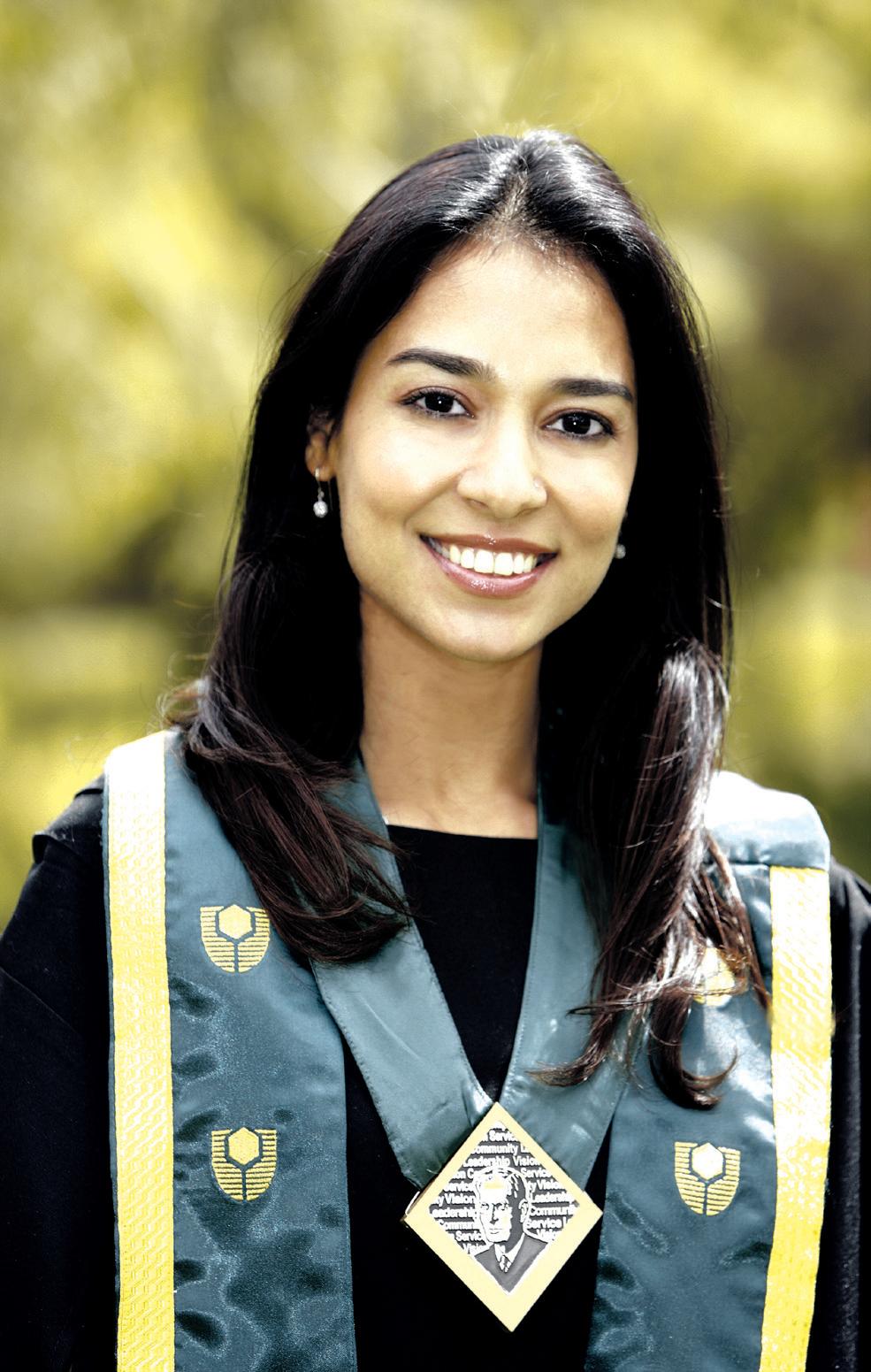


“I was deeply affected by the poverty I saw and children living on the streets,” Tanya told Indian Link. “I have a successful career in advertising and thought I could use my business skills to raise money to help children in need in India, and so I decided to start Baal Dan in 2006”.
She was back in her home town of Perth after more than 12 years, to receive the honour, the highest non-academic award presented by the Curtin University.
Since its inception in 2006, Baal Dan has provided aid in 12 cities to more than 3,000 of India’s most disadvantaged children. It feeds at least 1,000 children a day and sponsors 45 children in private education. Three medical camps have immunized 200 children and provided medications to 300 children and women, and its first school was built in 2011. Fun activities are also a key part of the charity’s work, making sure these children are able to experience some of the simple joys of childhood.

“I don’t really set goals for Baal Dan,”
Tanya said as she explained how the organisation works. “I like to focus on the core mission which is to continually focus on helping to help street children, slum children, and orphans in India as directly and efficiently as possible, while investing in ways to provide these children with an education. I hope that we can do more to help children in the slums with health programmes, and also do more to provide impoverished children with quality education”.
The supposed red tape and the corruption in India don’t really faze this plucky youngster as she strives to make sure that funds are utilized properly.
“There could be corruption in any country, especially when dealing with extreme poverty and destitution. Baal Dan tries to maintain exacting standards for the selection of our projects and the people we give grants to - all with the focus of getting aid as directly to the children as possible. By building strong and pure partnerships, Baal Dan seeks to avoid collaborations with disreputable organizations. That being said, Baal Dan conducts un-announced audits on all of its projects to confirm the project is reporting information correctly. I also personally travel to India at least 2 to 3 times a year and develop close relationships with the people who manage the projects, to oversee that our standards are being met”.
So how is Baal Dan different from existing global charities like World Vision?
“We are a very small charity compared to World Vision. We have no big offices
worldwide or a staff of thousands. Baal Dan is run with a virtual office, dozens of volunteers based worldwide, and a small and committed donor base. We have none of the expensive overheads that a big charity has, and that allows us to help children as directly and as efficiently as possible, while maintaining very high standards and transparency. With Baal Dan, you can be assured that more than 95% of the funds donated are going to help the children and not to pay for costly administration. This is a major differentiator from other charities”.
An Australian chapter of the charity will be launched in Perth soon. While friends and volunteers have already offered help, Tanya is proud to have her entire family chipping in.
“My dad helps with my travel arrangements in India, my mother supports me too. My sister heads the New York Chapter of Baal Dan with her husband, and hosts an annual fundraiser. My brother has worked tirelessly on maintaining the Baal Dan website, newsletters and University fundraising chapters, while my sister-in-law does the editing for the Baal Dan videos. In addition, I have friends who support me with fundraisers, give me advice and encouragement, and most of all, love and keeping faith in what I have set out to do with my life. I am truly blessed!”
The aims are that the Australian chapter will hold regular fundraisers for Baal Dan’s work in India.

“Indians living abroad can be put off giving to charities in India because of corruption and lack of assurance that the money is going to those who need it the most. I would like to assure anyone that supports Baal Dan that I am doing this work with pure intentions, meticulous attention to how best to use my donors’ funds and a clear passion and commitment to helping children in need in India, and changing their lives through food and education. It is easy to be cynical, but if you take a look at what I am doing and Baal Dan’s track record for the last 5 years, you will see a charity that is truly unique and pure”.
In 2010, Tanya was named ‘Woman of the Year’ by Harvard University’s Women’s Empowerment Conference and Convention, and in 2007, she was awarded the Sri-Sri Ravi Shankar Award for ‘Uplifting Human Values’. Baal Dan is the two-time winner of ‘Charity of the Month’ by Search Kindly, a Google company, and has been named ‘Hunger Charity of Choice’ by The Hunger Site and Greater Good Foundation.
To learn more about Tanya’s charity, go to www.baaldan.com
To get involved with the Australian chapter of Baal Dan, write in to her at Tanya@baaldan.com
DECEMBER 2011 <> 17 INDIAN LINK
www.indianlink.com.au PEOPLE
“I would like to assure anyone that supports Baal Dan that I am doing this work with pure intentions, meticulous attention to how best to use my donors’ funds and a clear passion and commitment to helping children in need in India, and changing their lives through food and education”.
Tanya Pinto
Cooking
for the community
A team of RAIN senior citizens join hands to prepare Indian dishes for the Meals on Wheels program
BY SUDHA NATARAJAN
Time, energy, willingness to help, public consciousness, civic sense, moral ethical values… all these go into what motivate volunteers into social work. But perhaps more than these, they have a genuine love for fellow humans.
To a certain degree we all have it in us, but we also have our excuses: “I am too busy with work”, “My weekends are spent with the children”, “You know it is not easy to have family commitments, a career and to do voluntary work”. Agreed, volunteering is not easy. Placing the needs of others before your own can never be easy, but there are a chosen few who do it - willingly, regularly and with devotion and commitment.
The Meals on Wheels community service program is one place where you observe volunteers tirelessly working. I frequently visit Hurstville Community Food Services where meals are prepared, packed and taken to homes for the frail aged who are unable
to put a meal together for themselves. Under the able management of Nahed Soliman, the Hurstville Community Food Services caters for the needs of frail and elderly in the surrounding region.

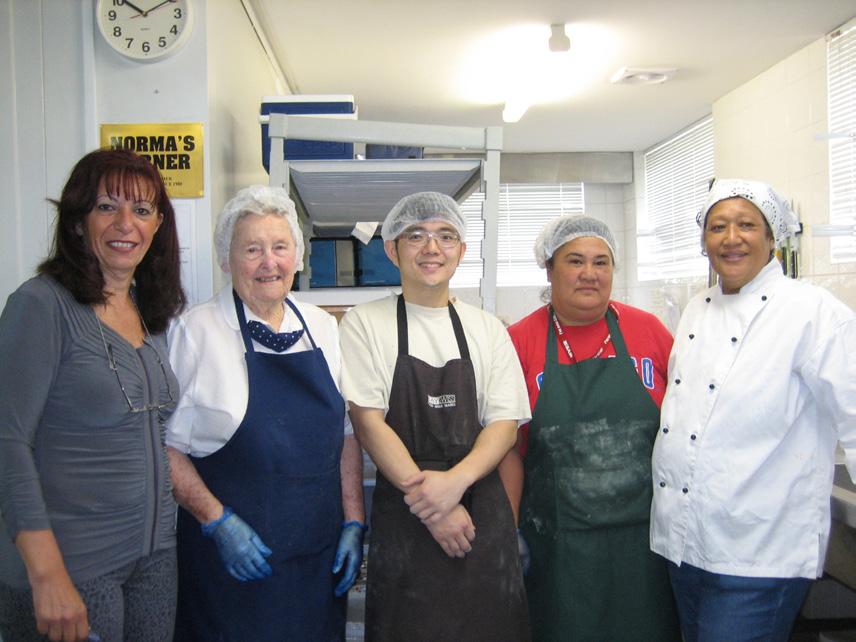

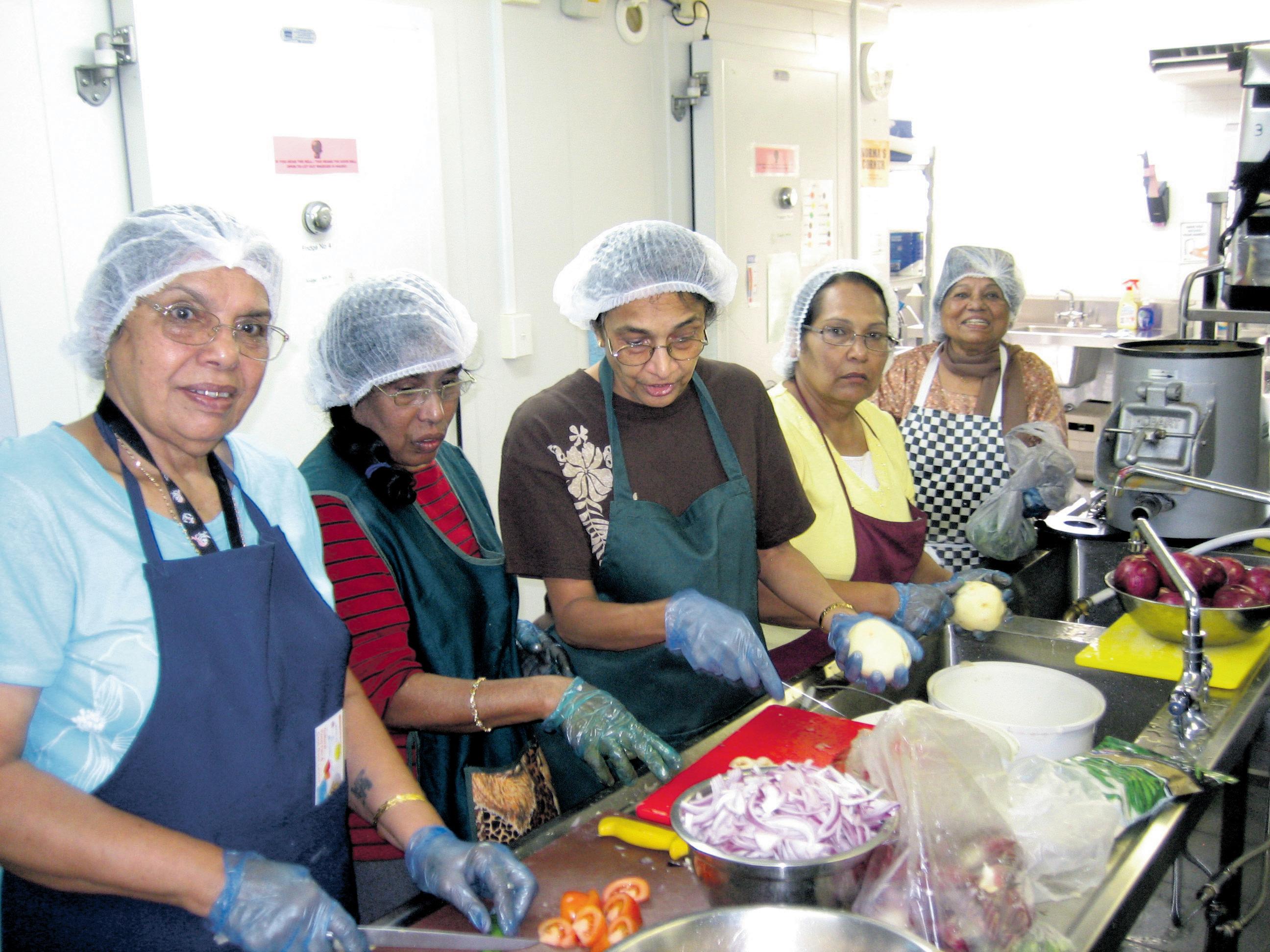
The service centre becomes a beehive of activity right from 8am with volunteers starting to cook under the expert supervision of Malia, who has been a Chieftain in her village. Following the rules, they adorn a clean apron, a cap and after careful and thorough washing of hands, they start their kitchen chores. Patrick Malia’s efficient assistant guides the volunteers as they go on cheerfully cutting vegetables and getting the ingredients ready to cook.
As we go around the spotless kitchen, we find a corner - Norma’s corner. Norma Palmer is 93 years old and has been a volunteer for over 30 years. Our hearts lift as Norma greets us with her hearty laugh and her cheerful face. She is decorating beautiful little cakes for the lonely older people and disabled who are restricted to their houses and cannot cook for themselves. Honouring her tireless service, the Hurstville Community Food Services has named the

dessert corner
‘Norma’s corner’.
What makes her so committed, particularly taking care to be punctual and regular and adhering to rules of the place? It is the passion for helping others and doing something useful for the community, and her love for fellow humans. We can see it in her laughing, cheerful self.
Norma is the inspiration for our RAIN (Resourceful Australian Indian Network) volunteers who work in the kitchen to produce Indian vegetarian meals on a regular basis. Tara Surti, Sita Subramaniam, Vimu Patel, Radhamani Natarajan, Manjubehn Hirani, Rita Devmurari and Smeeta Samji together with Nisha Hunt assisting them, are the regular volunteers who are there despite their commitments to their own families.
They take turns in cooking, making it a variety of vegetarian delights ranging from Gujarati to South Indian dishes. They get advice and help from Nahed, the manager of Hurstville Community Food Services and the expert Chef Malia and her assistant Patrick.
The RAIN volunteers (the ‘food team’) have undergone specific training and have been briefed on food safety rules and what they should and shouldn’t use when in the kitchen.
Tara is a grandmother with a family to take care of, who also has the additional responsibility of taking care of her own frail mother.

Sita has a young grandson who she drops off to school in the morning before coming to the kitchen. Her close friend Vimubehn is there to offer her expertise in cooking Gujarati kadhi and the mouth watering potato and capsicum special - their friendship dates back to their younger days in India. These two come in on alternate Thursdays cooking for a group of older people and the food is also taken to homes where there are needy Indian elders of disabled.
Radhamani is eighty this year and loves cooking. She takes pride in cooking south Indian delicacies and this week I think it is tomato rice and avial, a speciality from Kerala with all the vegetables cooked with ground coconut and chilli.
Manjubehn and Nisha are a happy team. They have their own specific treats which range from special Chapathi preparations to potato poha and chutney specials. Smeeta is younger with a load of commitments, including taking care of her mother, a growing family of youngsters and managing her own business. Well, she is still there helping out! We hope to find many more youngsters who can come forward to assist
18 <> DECEMBER 2011 INDIAN LINK
www.indianlink.com.au SENIORS
Clockwise:
RAIN team at work at Hurstville Community Food Services Vimu and Sita’s Gujarati kadhi Norma Palmer at her corner The great staff team at HCFS
RAIN volunteers at HCFS
My top 3 of 2011 radio moments
Indian Link Radio anchors take stock of the year that was
Uzma Beg
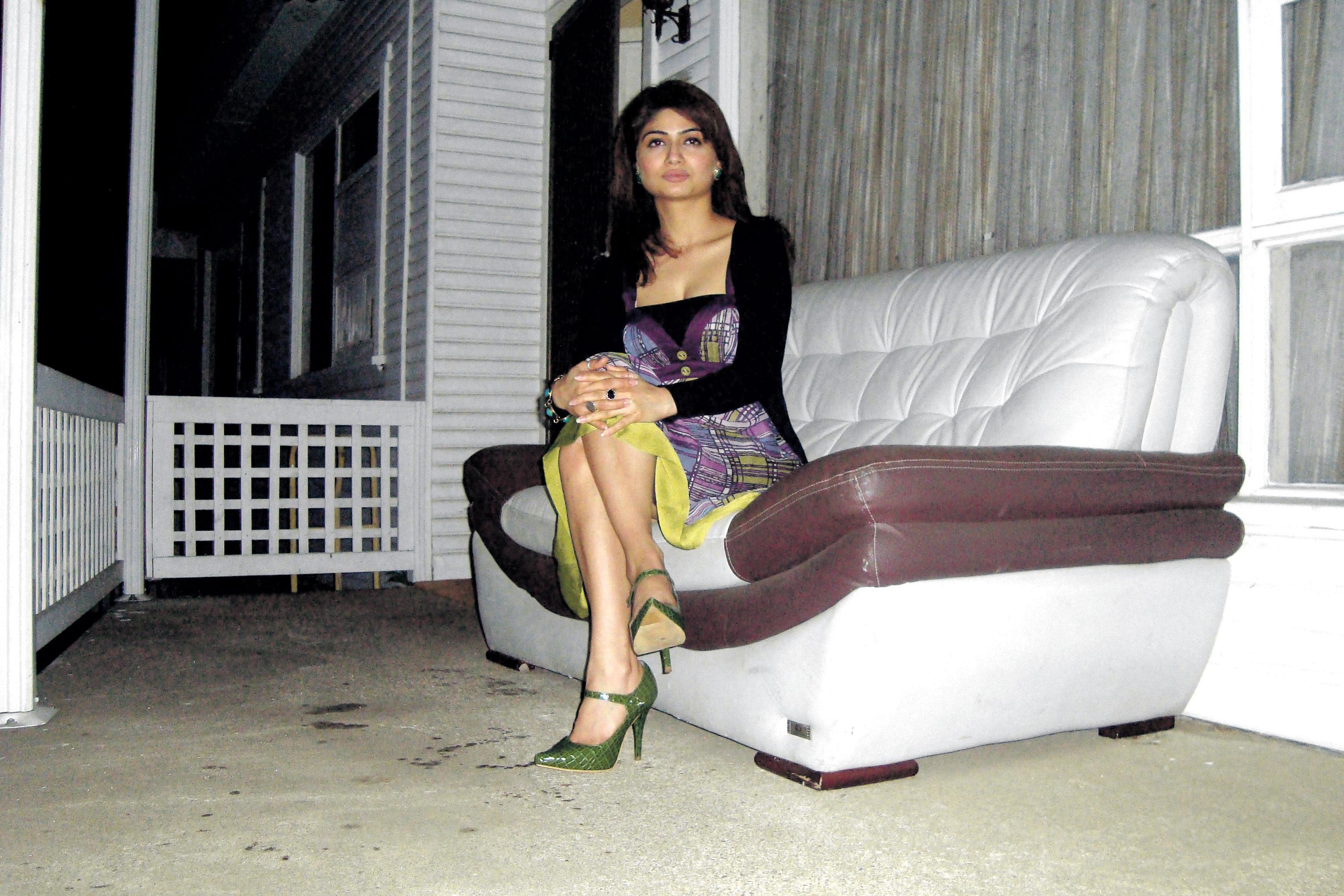
1. The happening discussions on my regular show Morning Masala. With topics like “How much should grandparents involvement be in the life of kids?”, “The new tattooed Barbie - is it politically correct?”, “When were you a bad parent?” The discussions

Anup Kumar
1. Every moment of my last seven years with Indian Link Radio has been a top moment! Yes, even when I have had to use my voice for 4 hours straight, despite cold, sore throat and flu!
2. Feeling the special connections between
were hot, heavy and controversial!
2. Sharing memories of Jagjit Singh after his sad demise this year. Enjoyed playing his ghazals in the week of his death, as my personal tribute to him.
3. The callers – all of them! The highlight for me was getting a call from listener Ajeet
people during my show Love Song Dedications, and laughing the afternoon away with my on-air partner on Comedy Hour during the show Hastu hardam, khushiya yaah gham.
3. The stunning views out of my window as I sit spinning tunes (and a yarn!). Our studio is located high up in the Westpac Building
1. When a 12-year-old listener rang in to say how much he loves my show and waits to tune in every Saturday... he is a fan for sure!!
2. When another regular listener said, “You’ve almost become one of the family!” I loved that: we are family....

Ajay Bisht
1. Definitely my first solo show! Introvert that I am, it was quite challenging to talk by myself, and that too to a wide audience. I found myself slipping into English often... but hey, I loved it so much I decided to stick with it for that evening! Waise, baaton baaton mein, hinglish bhi try ki jiye...what say?

Sagar Mehrotra
Love every moment I’m on air… but if I had to pick three, they would be:
1. A recent show I did on the lost art of letterwriting. To my surprise, many callers said they miss writing letters in today’s tech-savvy world… one young listener, 10-year-old Parthil
Manoj Menon
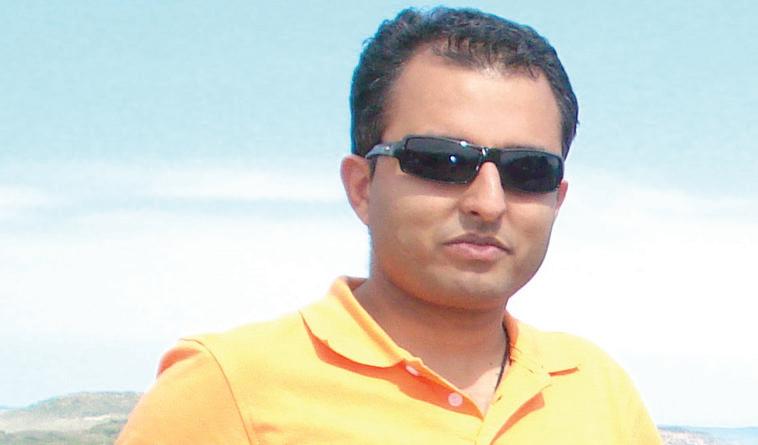
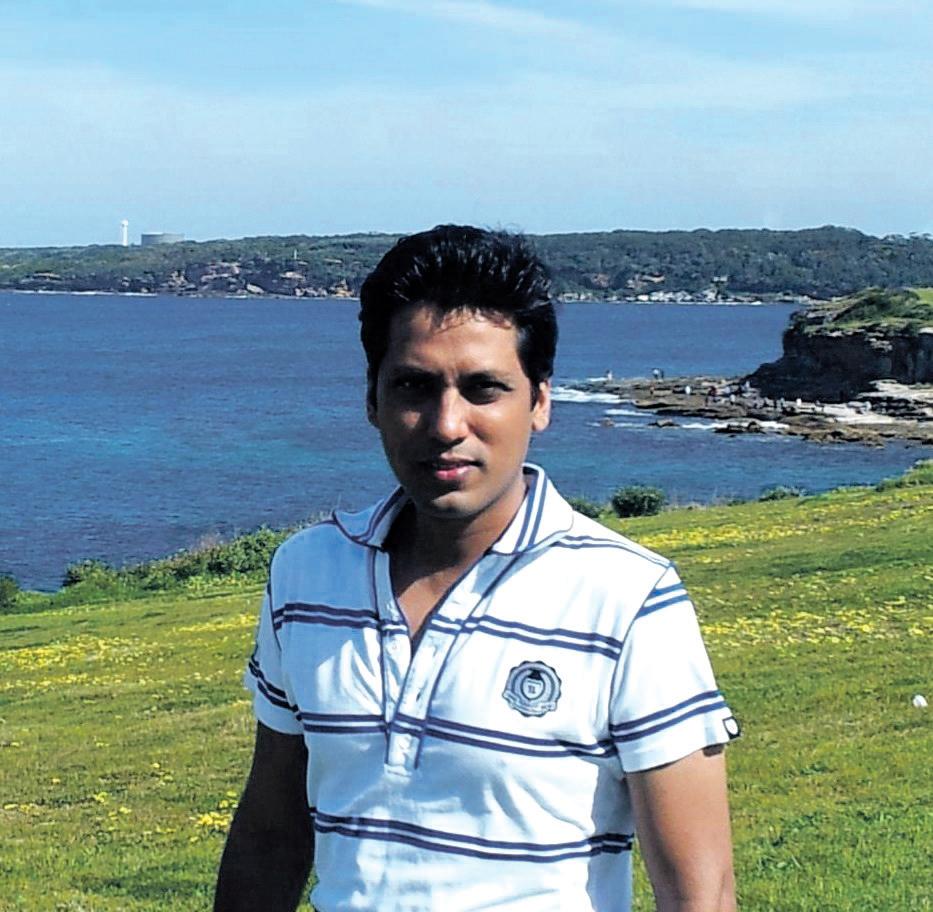
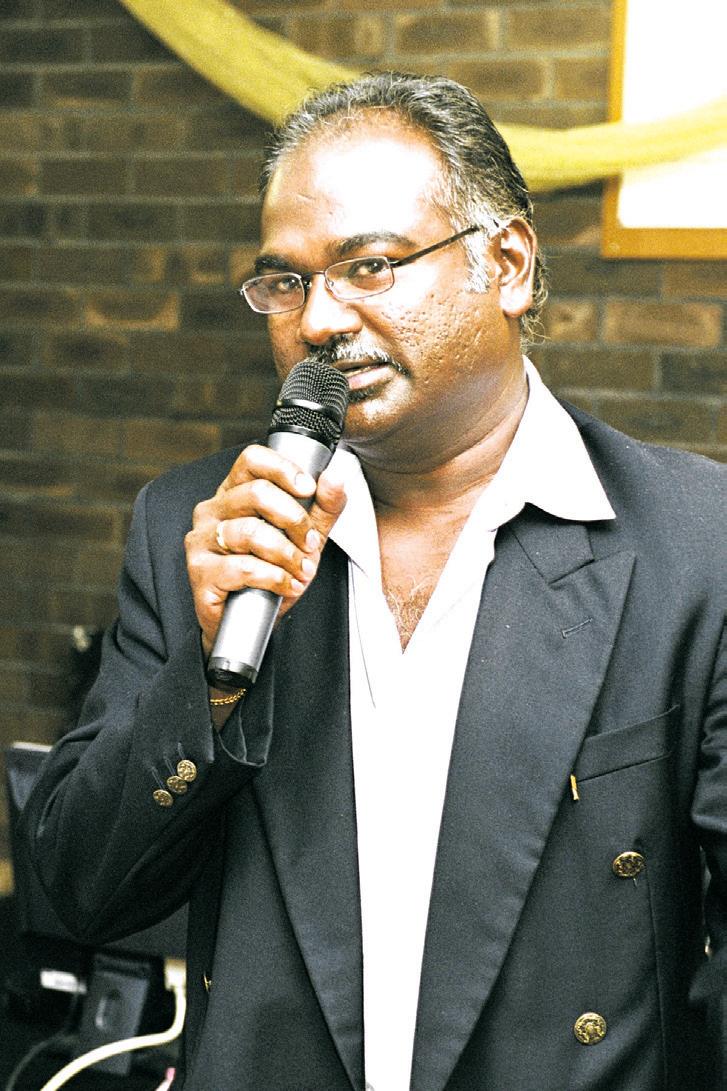
1. This year, definitely interviewing Aamir Khan on air, my all-time favourite entertainer. I kept calling him “Aamir Sir”... and well, down to earth that he is, he put me at ease instead!!!
3. When I did a show on cosmetic surgery and a listener rang in with her own story – her cosmetic surgery had gone horribly wrong, and she warned us all of how unsafe the procedures can be.
2. My first caller! Rajesh from Campbelltown ended up speaking with me like he knew me for ages. Both Mumbaikars, we bonded well.
3. Bringing in little-known details about various musicians and singers, from my


from Harris Park, came on to say he writes regularly to a friend, and they both love it!
2. My regular on-air chats with Shri Jatin Kumar Bhat ji, priest of Shri Mandir, Auburn in NSW. The wisdom he shares with us all is just incredible.
2. Singing live on the radio – was pleasantly surprised as to how well it turned out (because it is different from singing on stage), and I might give in to listeners’ requests and give it another go!

1. My interviews with the stunning Deepika Padukone who loves Australia, the thinking girl’s favourite actor Manoj Bajpai (who was such a pleasure to have on air), and the very hot Shiamak Davar who changed the way dance is depicted on screen.
2. When a listener rang in to say, “I just tune in to listen to your infectious laughter”. Now I just can’t seem to stop...
3. When I was dancing around to a peppy song on air, not knowing that the rest of the office was having a peek-a-boo - and a good laugh at my expense…!
in the City, overlooking a portion of downtown Darling Harbour and Anzac Bridge. Nothing will ever surpass the euphoria it gives me to watch the day go by, as I work (which is not really work, in the traditional sense!).
connections with them from back home. Listeners call and ask me “Aapko yeh sab kaise pata hai?” I’m all smiles then.
3. The shayari of listener Lakshmiji and the poetry of listener Vimlaji. I love providing a platform for listeners to show their talents – come on, all you kalaakaars out there, tune in to aapka host aur aapka dost, Sagar!
3. Making my mark on the airwaves back home: I got a chance to be a guest RJ on India’s leading FM station.
Hakku all the way from Jammu! I feel really touched when people go to all that trouble to participate. I know you all so well, but can’t list all of you here! Thank you all for listening - I thrive on your love and affection! INDIAN
Rachita Saini
www.indianlink.com.au
ANUP KUMAR
AJAY BISHT
RACHITA SAINI
UZMA BEG
LINK RADIO
only 24/7
radio station
to subscribe
month)
log on to www.indianlink.com.au to listen live
Australia’s
Hindi
Ring 1 8000 15 8 47
($9.95 a
Or
RASHMI CHAUDHRY
Rashmi Chaudhry
RADIO

20 <> DECEMBER 2011 INDIAN LINK

DECEMBER 2011 <> 21 INDIAN LINK
in India Barry O’Farrell
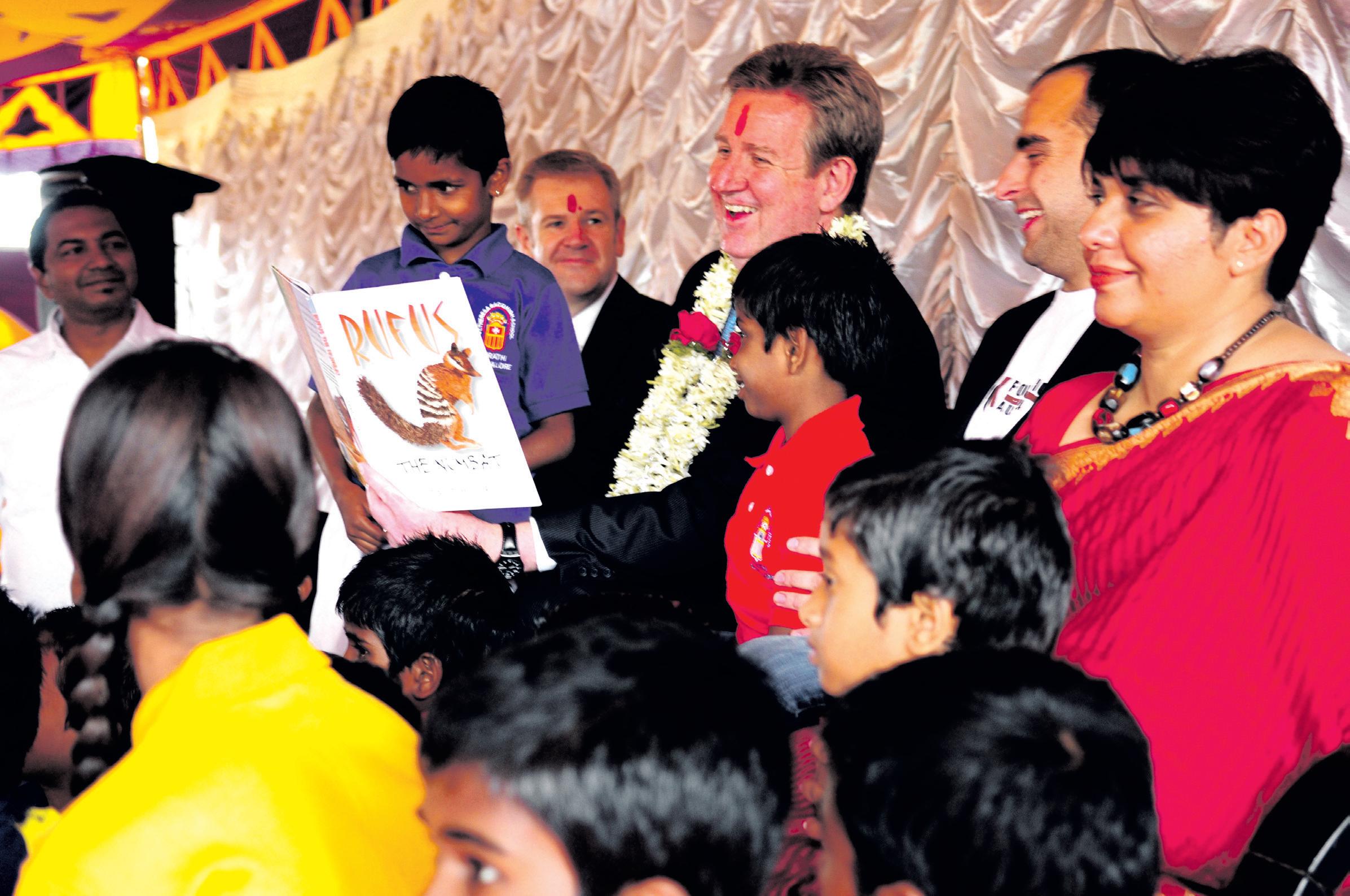
strong linkages between Australia and India in the public health arena especially in blindness prevention and the twenty five years of close working relationship between the Brien Holden Vision Institute and the L V Prasad Eye Institute. He added that “this initiative will make a positive difference for India in dealing with the needs of over 100 million Indians who are unable to be productive due to un-corrected refractive error”.
Vinod Daniel, CEO and managing trustee of IVI said “This formal agreement will transform the Indian optometry education and industry sector”. The IVI will support research, education and technological development that will advance India to a world platform for health care in vision correction, eye disease and blindness prevention.
Mr Barry O’Farrell announced operational support for the India Vision Institute to the combined value of $350,000; and to award up to 50 higher education scholarships over the next five years valued at $7,500 per scholarship, a total of $375,000.
Education
The Premier continued to push NSW as an education destination, the students’ issue of 2009 notwithstanding.
NSW Premier Barry O’Farrell undertook in mid-November a tour of India, leading a senior delegation of industry and business leaders.
As part of a key strategy in the NSW Government’s efforts to rebuild the State’s economy, the tour included meetings with leading Indian government officials, business leaders and investors in Mumbai, Delhi and Bangalore. The 30-strong delegation was built around NSW’s competitive strengths in education, ICT, resources, financial services and infrastructure.
Commerce
Mr O’Farrell’s message at the World Economic Forum – India Economic Summit in Mumbai (with which he started off his tour), was simple and direct: he was looking for a foot in the door of India’s booking market.
“In 1799 our first export was to India, a shipment of coal to Calcutta,” Mr O’ Farrell said. “As our societies have changed, so has the range of our commodities. But our message will not change under a NSW Liberals & Nationals Government, NSW is open for business”.
“India is a long term trade and investment target for NSW,” Mr O’Farrell said. “India has the world’s fastest growing middle class and NSW businesses and institutions are well placed to meet its demands for more products and services, particularly in the areas of education, insurance and health care”.
Joint venture partnerships with some of India’s signature companies formed a central
part of the mission. These included the Tata Group, Jindal Steel and Power, Essar, Godrej and two airline companies.
“We have established a Multicultural Business Advisory Panel and a senior Export Advisory Board to ensure NSW competes for Indian investment with the same vigour as we are applying to forming effective partnerships with India –improving our State’s export performance” Mr O’Farrell said.
The premier also launched the new Australian Centre for Finance and Regulation in Mumbai.
Laservision for Shirdi shrine
The Premier also announced the success of Sydney company Laservision in winning the contract to develop a large-scale multi-media attraction at the shrine of Indian spiritual leader Shri Sai Baba at Shirdi, near Nasik in Maharashtra.
Laservision beat strong global competition to win this $5.5 million export deal.
The high tech spiritual theme park, which will be the first of its kind in India, will display the interactive teachings of the spiritual leader to the 20 million devotees who visit the shrine every year.
For the multi-media presentation, Laservision will use a combination of aqua-screens, high-powered light-ray laser systems, high definition video projectors, surround sound and a variety of special effects – all of which will be synchronised and controlled by unique technology developed by the company.
The research, development and creative work will be done at Laservision’s
headquarters in Dural, where the show will be built, then dismantled and shipped to Shirdi for construction, commissioning and testing during the middle of next year.
Mr O’Farrell said Laservision’s success highlighted the strength of NSW’s ICT sector, “an essential driver of NSW’s services-based economy”.
Laservision, which exports 97 per cent of its services, is an innovative and creative leader in the entertainment sector and a great example of how NSW companies are competing and winning in the global marketplace. Its work is seen in more than 20 countries, including Marina Bay in Singapore, Everland in South Korea, and the world’s largest light and sound show; ‘A Symphony of Lights’ at Victoria Harbour in Hong Kong.
India Vision Institute
The premier also witnessed the signing of an MoU between the Hyderabad-based L V Prasad Eye Institute and the NSW-based Brien Holden Vision Institute, to establish and support the India Vision Institute (IVI). IVI’s objectives are to upgrade the Indian eye care education sector and assist in the development of a vibrant vision industry in India. The MoU was signed on Nov 16 by Prof. Brien Holden, CEO of Brien Holden Vision Institute and Dr G N Rao, Chairman of L V Prasad Eye Institute, at the Australian High Commission New Delhi. The Australian High Commissioner Mr Peter Varghese and the Vice Chancellor of the University of New South Wales Prof. Fred Hilmer were also present.
Mr Peter Varghese acknowledged the
“India has committed to skilling 500 million people by 2020 – an enormous undertaking which presents a significant opportunity for our world class universities and TAFE,” he declared.
Several education agreements were signed.
University of Wollongong in India
An MoU was signed between the ViceChancellor of UOW Prof. Gerard Sutton and Mr Jagatramka (Chairman and Managing Director of Gujarat NRE Coking Coal, the Illawarra-based subsidiary of Indian company Gujarat NRE Coke), to explore the options for establishing a higher education institution in the city of Ahmedabad.
Mr Jagatramka and the university are currently working on a more indepth educational services collaboration agreement that will detail the university’s involvement in the proposed institution’s teaching and learning programs, academic staff development, scientific information and materials, research, conferences and symposiums, and other related activities.
NSW education standards exported to Indian schools
NSW Premier Barry O’Farrell also announced a formal agreement for NSW schools to provide high quality, professional training to schools in India.
Mr O’Farrell visited the Holy Child Auxilium School in New Delhi where 90 local teachers and executive staff attended a training session conducted by NSW teachers from the Association of Independent Schools of NSW (AISNSW).
An MoU was signed according to which the Association will provide training to five schools – Holy Child Auxilium School, Vibgyor High in Mumbai, the Suncity World
22 <> DECEMBER 2011 INDIAN LINK
SPECIALREPORT
With philanthropist Clary Castrission at 40K Foundation’s Banyan School in Bangalore
School in Gugaon, the Samhita Academy in Bangalore and Saraswathi Vidyalaya in Trivandrum.
“This initiative not only provides the best of the NSW education system to Indian schools, but also helps NSW teachers gain insights into different educational contexts and practices.
The AIS is a well established training provider, delivering education, training and leadership programs in NSW, Malaysia, Singapore and Papua-New Guinea. It is the peak body representing the independent schooling sector in NSW, advocating on behalf of more than 440 schools and 175,000 students in NSW.
Mr O’Farrell also presented the Holy Child Auxilium School with books from the Premier’s Reading Challenge – an important initiative to promote reading and improve literacy among students in NSW.
Cricket
An exciting new partnership in cricket was also announced, between two of the world’s leading domestic cricket organisations, Cricket NSW and the Mumbai Cricket Association.
A new Twenty20 series between NSW and Mumbai, will be played every two years, between the Premier’s XI and the Chief Minister’s XI.
“I’m delighted to announce the first match of the NSW-Maharashtra Cricket Cup will be played in Sydney in November 2012 with the proceeds to be directed to charity,” Mr O’Farrell said.
The first charity to benefit will be the NSW-based 40K Foundation which runs the Banyan School for disadvantaged kids in Bangalore
The partnership between the two peak cricketing bodies will also include a coaching exchange and tours by young male and female teams.
The Chairman of Cricket NSW, Harry Harinath said the partnership was the start of a new era for the sport in NSW and India.
“Cricket NSW is delighted to enter into a partnership with the Mumbai Cricket Association,” Dr Harinath said. “Both organisations have an outstanding history in the game and have provided excellence and leadership within their respective countries.
Social work
Mr O’Farrell also visited the NSW based charity the 40K Foundation in Bangalore.
“I was moved to see firsthand the work of the 40K Foundation at the Banyan School, where education and support is provided to hundreds of severely impoverished children whose parents work in nearby quarries,” Mr O’Farrell said.
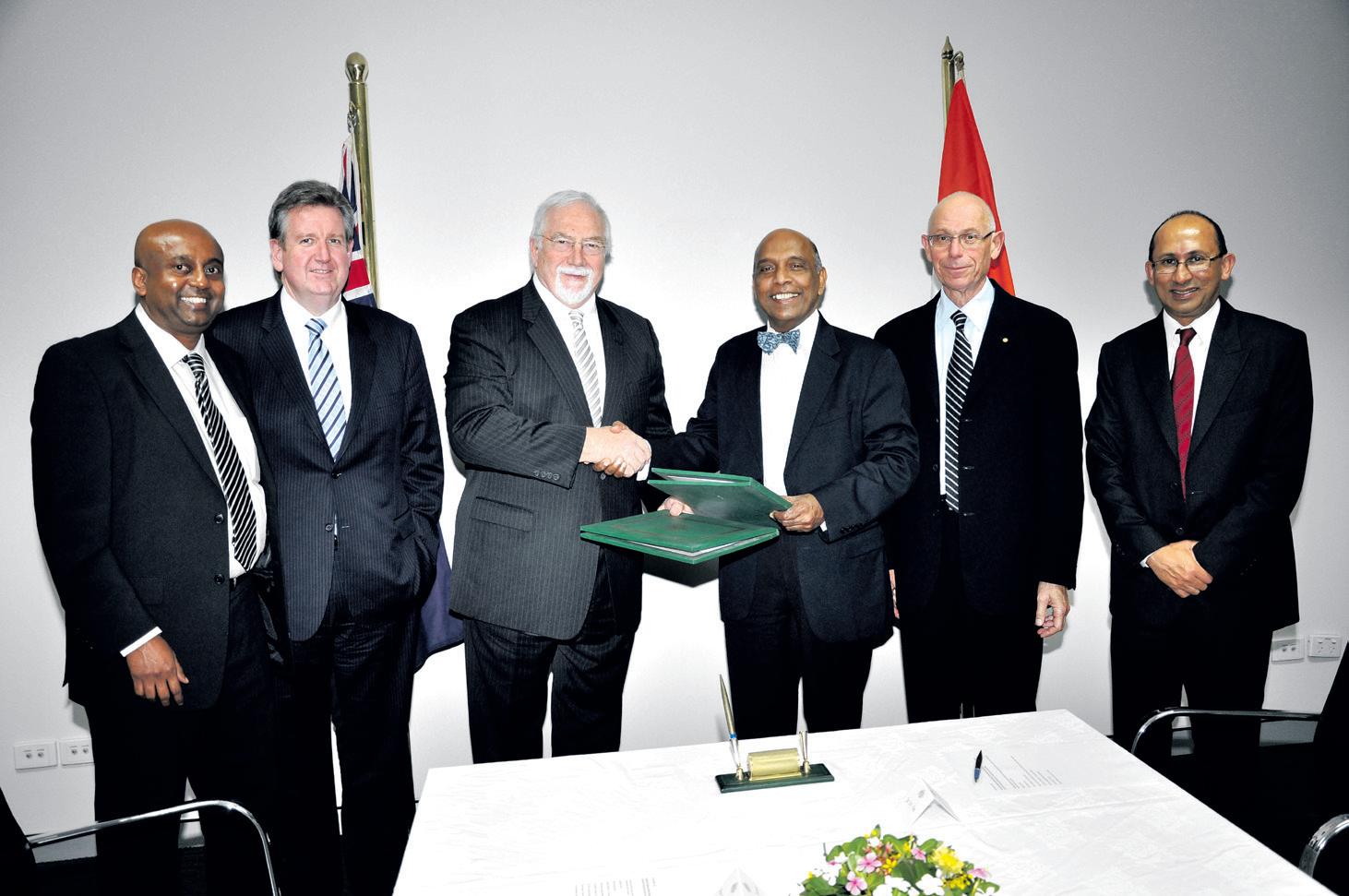
The Foundation’s CEO Clary Castrission welcomed the announcement of the cricket charity saying education remained central to opening up new possibilities for families in the region.
“An education is hope for a better future. It can change the whole trajectory of a person’s life and we’ve already seen glimpses of that in the first graduates from the Banyan School,” Mr Castrission said.
Mr O’Farrell also launched a volunteer program being run by the 40K Foundation that will see about 100 NSW university students travel to India each year to work on education projects with the charity.

“This is a great initiative will not only boost support to the children of the region’s quarry workers but will also see NSW
students using skills they are developing at their universities to make a genuine difference in the lives of these families,” Mr O’Farrell said. “These volunteers can make an invaluable contribution to the communities where they will be working, as well as enhancing the mutual goodwill between NSW and India”.
The University of Technology Sydney, the University of Wollongong, Macquarie University, the University of NSW and TAFE NSW have confirmed that some of their students will take part next year, with other universities poised to join the initiative.
Other facets
Mr. O’Farrell also announced the establishment of the Australia India Youth Dialogue, which will provide a formal opportunity for young people in both countries to share their perspectives on key issues and help strengthen the relationship between the two countries. The NSW government, as founding partner of the dialogue, “will host 15 of the best and brightest young minds of each country at an annual conference”.

Mr O’Farrell also met Mr Anand Sharma (Minister for Commerce and Industry) to discuss the India Australia free trade agreement and closer economic relations with NSW; Mr Kapil Sibal (Minster for Human Resources) on how NSW can help India meet its education needs with the projected increase in the number of Indian children going to college, and Mr Montek Singh Ahluwalia, Deputy Chairman of the Planning Commission.

DECEMBER 2011 <> 23 INDIAN LINK
At the Indo-Australian Chamber of Commerce with Indian-Australian businessman Arun Jagatramka
At the signing of the agreement between Hyderabad-based L V Prasad Eye Institute and the NSWbased Brien Holden Vision Institute, to establish and support the India Vision Institute (IVI).
Visiting the Holy Child School in New Delhi
At a panel discussion at the World Economic Forum
Skilled Migration for Australia’s economic needs
Chris Bowen, Minister for Immigration and Citizenship, presents the National Address at AIBC’s Canberra Chapter
BY ARVEEN SHARMA
The Australia India Business Council (AIBC) Canberra Chapter facilitated an excellent relationship building exercise at the highest level in Government on November 2, at the Australian Parliament House.
Chris Bowen, the Minister for Immigration and Citizenship, delivering a keynote address entitled “Skilled Migration: Geared for our economic needs”, outlined the reforms the government has undertaken in recent months in relation to its skilled migration program, many of which will have direct relevance to members of our community.
In his welcome address, the President of AIBC’s Canberra Chapter, Deepak Raj Gupta commented on the opportunities available from developing nations such as India and other countries that have in the past produced an excellent set of skills and skilled migrants, who have helped in shaping many nations, including Australia.
Deloitte, one of sponsors for the event produced an informative document titled “Building the Lucky Country (Business imperatives for a prosperous Australia): Where is your next worker?”. Deloitte’s document commented on Australia’s response to skills shortage and how this will impact on its economy and business. It provided valuable commentary on positive actions that businesses and the Government can take to maintain momentum in the face of a looming national skills shortage.
Sujatha Singh (High Commissioner of India) commented on the excellent Indian work ethics, which mainly contributes to the success of Indian migrants. While talking about her extensive local visits, Mrs Singh commented on the number of Indian doctors she has come across in many hospitals around Australia. She particularly mentioned Townsville Hospital (which, she said, reminded her of an Indian medical institute), and Alice Springs – where 60-80 percent of doctors and nurses are Indians. Mrs Singh has also noticed the high number of Indians in public service in Canberra.
In his speech, Minister Chris Bowen comprehensively elaborated on government initiatives in relation to the education sector, skilled migration, latest reforms and addressing short term skills shortages.
Education sector links
In April 2010, Australia and India produced a Joint Ministerial Statement to deepen the cooperative education relationship between the two nations. The Joint Statement has resulted in the establishment of the AustraliaIndia Education Council, the Bureau of Vocational Education and Training Cooperation, the new Australia-India Higher Education Exchange and the Shadowing Faculty Exchange pilot program.

A very comprehensive review of Australia’s student visa system was conducted with extensive consultations throughout the education sector, including a visit to India, as well as to China and Malaysia. The Government is determined to act on all of the recommendations received, the Minister
said, with some modifications and additions.
The reforms have two objectives:
* to enhance the integrity of Australia’s Student visa program; and
* to strengthen the competitiveness of Australia’s international education sector.
The Government is also introducing reforms specifically targeted at postgraduate students, including streamlined processing and enhanced work rights.
Latest reforms
The Government has undertaken some serious reform in relation to its skilled migration program over the past few years, with some further key developments announced for implementation in the year ahead. Some of the key reforms include:
* rebuilding public confidence in the temporary skilled worker visa, known as the 457 visa;
* introducing flexible State Migration Plans to address the unique skills needs of different regions; and
* overhauling the independent skilled route, by focusing on key occupations and implementing a new points test last July.
The main reason for these reforms is to better enable Australia’s skilled migration program to meet its ongoing and often changing skills needs. In this year’s Budget, the Minister announced an increase of up to 125,850 places in the skilled migration program for 2011-12, in response to the economic outlook and growth over the year ahead.
Addressing short term skills shortages
The temporary skilled migration program, the 457 visa, remains essential in supporting business and meeting immediate skills gaps. Indian citizens now make up the second largest group to use the program, after the United Kingdom. The new $10 million 457 visa centre in Brisbane will make substantial progress in improving 457 visa processing times. The Government aims to see 457 visas processed within 10 days.
The Minister announced the introduction of a new accreditation scheme for 457 visa sponsors from 7 November 2011, which would recognise businesses with an excellent track record of compliance with workplace and migration laws. This new
scheme will give accredited sponsors access to priority processing for all future nomination and visa applications, which would result in the fastest possible processing times for those businesses. Accredited businesses will also qualify for double the regular sponsorship approval period, from three to six years.
Minister Bowen reiterated the importance of 457 program being responsive to the economic cycle and the provision of a flexible avenue for employers to fill immediate and short-term skill vacancies, while maintaining opportunities and conditions for Australian workers.
Employer Sponsored Visas: The
flagship program
To make the permanent skills migration program more responsive to labour market demand, the permanent employer sponsored options have assumed greater significance in the skilled program. The Minister has asked his department to review the employer sponsored category with a view to making it more streamlined, especially when considering the transition from a temporary to a permanent visa.
SkillSelect
SkillSelect has been introduced as the most significant step in the Government’s skilled migration reforms. This will commence from 1 July 2012 and apply to independent and state sponsored visas. That’s almost 60 per cent of the Skills program – or around 72,000 visas. It will be a major change in the way this program is managed.
There are two parts to SkillSelect – an internal process to select migrants and an external database that employers can also use. The first part of the program is a twostage process for the Government to select migrants. Prospective migrants will initially submit their claims for migration through an Expression of Interest. The Government will then invite people to apply for a visa if the points test identifies that they have the best combination of skills and attributes for Australia. This will ensure that the limited Skilled Migration Program places are allocated to the best possible candidates.
Of particular interest to business is the SkillSelect external database that will contain information from the Expressions of Interest lodged with the department. This free, searchable database will allow
SkillSelect, the most significant step in the Government’s skilled migration reforms, will commence from 1 July 2012 and apply to independent and state sponsored visas. That’s almost 60 per cent of the Skills program – or around 72,000 visas.
Chris Bowen
employers to connect with, and if suitable, to sponsor through the Government’s employer sponsored programs, skilled people interested in migrating to Australia. This is particularly useful for small businesses as it provides easy access to a database of skilled workers making the search easy and recruitment costs low.
Continuing links with India

Minister Bowen, a former Lord Mayor of Fairfield in Sydney, congratulated the AIBC on its 25 years of service, which promoted closer economic and business ties between Australia and India. He provided a brief description of Australia’s investment of over $407 billion in India in areas such as manufacturing, telecommunications, hotels, minerals and food processing, oil and gas, and in the automotive sector. Last year twoway trade of goods and services totalled over $22 billion. India is Australia’s fourth largest export market with import of Indian services totalling $660 million in 2010. In the same year, Australia exported $3.1 billion worth of services to India, with 84 per cent of those exports in the education sector. New prospects continue to emerge, in areas like ICT, biotechnology, tourism, health, film, and insurance. This demonstrates that with such a significant economic relationship for Australia, India features prominently in its skilled migration program. Therefore, skilled migration program needs to reflect responsiveness to Australia’s economic needs.
Neville Roach, Chairman of Emeritus and Vice President of AIBC in his vote of thanks commented that the event stood out as one of the best by AIBC.
Earlier on, Deepak Raj Gupta had acknowledged the support of the sponsors for their continued support. The evening’s principle sponsor was Tata Consultancy Services, with Silver sponsors being the ACT Government and the High Commission of India.
It is excellent to see a migrant community working hand in hand with the Government of its host country to ensure a brighter economic future. This kind of relationship building at the highest level further enhances the community’s respect in the Australian society.
24 <> DECEMBER 2011 INDIAN LINK www.indianlink.com.au FOOD BUSINESS
From left: Senator Kate Lundy, Minister for Immigration Chris Bowen, High Commissioner of India Sujatha Singh, and President AIBC (Canberra chapter) Deepak Raj Gupta
Nobel Laureate
Har Gobind Khorana revolutionised biotechnology
Nobel Laureate Har Gobind Khorana, the Punjab-born Indian American scientist who died in the US last month, “revolutionised biotechnology” and his work “continues to propel new scientific discoveries”, a professor at America’s University of Wisconsin-Madison has said.

Khorana died Nov 9 in Concord, Massachissetts, aged 89, the UW-Madison, where he did his Nobel Prize winning pioneering work in DNA chemistry, announced.
Aseem Ansari, UW-Madison professor of biochemistry, said: “He revolutionised biotechnology with his pioneering work in DNA chemistry. The work that he did in Wisconsin from 1960 to 1970 continues to propel new scientific discoveries and major advances.”
Khorana, who was born in India in 1922, in a small village in Punjab that is now part of Pakistan, came to Madison in 1960 to serve as co-director of the UW Institute for Enzyme Research and a member of the department of biochemistry. His work at Wisconsin on the mechanisms by which RNA codes control the synthesis of proteins led to the Nobel Prize for physiology or medicine in 1968, which he shared with Robert Holley of Cornell University and Marshall Nirenberg of the National Institutes of Health.
In 1970, shortly after he left Madison to join the faculty of the Massachusetts Institute of Technology, Khorana and colleagues announced that they had synthesised two genes crucial to protein-building work.
In 1976, they completed the synthesis of the first fully functional manmade gene in a living cell. The technique they pioneered laid the groundwork for subsequent research on how the structure of a gene influences its function.
In an autobiographical note written upon winning the Nobel Prize, Khorana wrote: “Although poor, my father was dedicated to educating his children and we were practically the only literate family in the village inhabited by about 100 people.”
Indian Americans grow to 3.2 mn, top in income
Some 3.2 million Indian Americans, including Asian Indians of mixed race, lived in the United States in 2010 as South Asians led all Asian groups in population growth in the last decade. They led all Asian American households with highest media household income.
At 3,183,063, Indian American made up 18 percent of the Asian American population in 2010, up from 16 percent in 2000, according to a new compilation of 2010 census data.
According to 2007 to 2009 data, Indian Americans led all Asian American groups in the country in median household income at $86,660. The next highest total was $77,596 for Taiwanese households.
Taiwanese and Indians also led in per capita income among Asian American groups, with $38,312 and $36,533, respectively, followed by Malaysians ($33,264) and Sri Lankans ($32,480).
Bangladeshi Americans had the biggest percentage increase over the decade, skyrocketing 157 percent, according to the study, “A Community of Contrasts: Asian Americans in the United States, 2011,” by the Asian Pacific American Legal Centre and the Asian American Justice Centre.
The Pakistani population had the second highest population bump with a 100 percent rise. The Sri Lankan and Indian
280,000 were from the Philippines, 200,000 from India, 170,000 from Korea and 130,000 from China. India’s total was down from an estimate of over 275,000 in 2005.
From 2005-09, Hindi speakers in the US were estimated at 527,481. Numbers of speakers of other South Asian languages were: Urdu, 326,310; Gujarati, 304,102; Punjabi, 209,835; Bengali, 188,452; Telugu, 171,015; Tamil, 132,573; Malayalam, 116,486; Marathi, 53,436; Kannada, 37,377; Nepali, 37,240; and Sinhalese, 22,336. Only 22 percent of Indian Americans five years of age and older from 2007-09 were limited English proficient, compared
legislative and administrative remedies, says former attorney general Soli Sorabjee.
“With a large number of Indian migrating abroad and the nomenclature of nonresident Indians, people of Indian origin and overseas citizens of India coined by the government of India to describe them, their problems and grievances have proliferated, sans any legislative remedies or administrative redress,” Sorabjee said. He said this while launching the book Indians, NRI and the Law, authored by Anil Malhotra and Ranjit Malhotra.
The book, which says there are 30 million NRIs settled in 180 countries, touches upon subjects like marriage, divorce, spousal maintenance, child abduction, domestic and intercountry adoptions, succession, inheritance, immigration, citizenship and even surrogate motherhood.
Sorabjee handed over the first copy of the book to British High Commissioner to India Richard Stagg.
Stagg said that with a growing diaspora, the need for some authentic reference material on the NRI problem was the need of the day.
Stagg said: “As the Indian footprint expands across the globe, it is ever more important to understand the impact of this change in terms of law and judicial systems.”
“The Malhotras’ book is, therefore, well-timed to meet the growing needs,” he said.
A member of the British House of Lords, Diljit Rana, said the book, which he described as a milestone in the history of NRIs, would go a long way in resolving the problems of NRIs worldwide.
As president of the Global Organization of People of Indian Origin (GOPIO), Rana said: “I am immensely happy with this ready reference of law written in such simple words.”
Introducing his book, Anil Malhotra said: “Time and people have changed, laws have not.” As a consequence, the overburdened legal system is attempting to dispense justice by culling out permissible relief on a case-to-case basis, he said.
American populations increased 85 percent and 68 percent, respectively.
Among the South Asian groups, Pakistanis had the highest rate of naturalization at 57 percent, while just 50 percent of Bangladeshi Americans, 47 percent of Indian Americans and 43 percent of Sri Lankan Americans were naturalised.
About 200,000 Indian legal permanent residents were eligible to become citizens in 2008.
The leading six Asian countries for immigrant visas issued from 20012010 were: Philippines, 350,694; China, 286,008; India, 267,403; Vietnam, 193,049; Bangladesh, 84,643; Pakistan, 69,202.
The report estimated that in 2010 there were about one million undocumented immigrants from Asia in the US About
to 46 percent for Bangladeshis and 28 percent for Pakistanis.
Taiwanese and Indian Americans led all Asian groups in higher educational attainment, with 73 percent to 68 percent, respectively, having a bachelor’s degree or higher.
The percentage of Indian Americans living in poverty was 8 percent in the 200709 time period.
Both Indians and Pakistanis in the US had 9 percent of the seniors ages 64 or above living in poverty. In the Bangladeshi community that figure was 16 percent.
Experts call for statutory remedies to NRIs’ problems
The problems and grievances of a large number of non-resident Indians (NRIs) have proliferated in the absence of
“Though the solutions are embedded in bringing legislative changes for evolving an NRI jurisprudence, the pace and consciousness levels with which lawmakers are moving is alarmingly slow,” Anil Malhotra said.
He said human trafficking, the question of nationality and citizenship, including dual citizenship, voting rights and human rights, including the right to live with family, are the emerging areas of new NRI jurisprudence and they find no legislative recognition and are not on Indian statutory books.
International commercial arbitration has acquired new dimensions and the outdated Indian corporate immigration laws need to be revisited and revised to match present day requirements, Malhotra underlined.
DECEMBER 2011 <> 25 INDIAN LINK www.indianlink.com.au
IANS
DIASPORA
Dr. Har Gobind Khorana (1922-2011)
Kalam stresses integrated, balanced approach for nuclear invincibility
Each nation can accomplish invincible nuclear security individually and collectively through eternal vigilance, expansion of new energy technologies, coherence, dynamism, self sufficiency among others, said former Indian president A.P.J. Abdul Kalam recently in Chennai.
“Invincible nuclear security can be accomplished by every nation individually and collectively through eternal vigilance, continuous expansion of new energy technology options, coherence, dynamism and strength, freedom, indestructibility and self sufficiency not only in the immediate term but remain sustainable in the long term for the survival and growth of the human race on planet Earth,” Kalam said.
He was presenting his concept paper for the Eminent Persons Group (EPG) chaired by South Korean President Lee Myung-Bak for the 2012 Seoul Nuclear Security Summit.
The paper has been uploaded on Kalam’s website.
“Political negotiations, conventions, treaties and the use of arms have not succeeded in creating a long lasting state of world peace and the problem of nuclear insecurity due to terrorism and proliferation may rise again and again at weak moments that humanity invariably passes through, unless all nations achieve invincible security,” he said.
“Time demands that the security of every nation should be completely independent of anything outside the nation, but every nation concurrently and generously sharing its special and unique strengths, skills and resources (its core competencies) with other
manner,” Kalam said.
According to the former Indian president and defence scientist, only such a concept of integrated and balanced independence and interdependence alone can raise the collective invincibility of the human species. Kalam said invincible nuclear security in the 21st century can be achieved through sharing of information and intelligence
“by real time environmental and situational awareness systems and technologies”.
Coherence in formulation and implementation of an international and national nuclear security vision; freedom of every nation to develop evolutionary, creative, democratic socio-economic development process which is not injurious to other nations; indestructibility of society and its critical institutions through creativity and self-sustaining growth using perennial, limitless, sources of clean energy are some of the core principles to be followed for achieving nuclear invincibility by nations, Kalam remarked.
According to him, opting for nonweaponisable thorium route for power generation and nations becoming responsible for nuclear safety and security once they become nuclear power are also important principles.
India presses for urgent UNSC reform and expansion
Reiterating that reform and expansion of the UN Security Council are essential to reflect contemporary reality, India has called for pursuing early reform with renewed vigour and have it urgently enacted.
“Such an outcome will enhance the Council’s credibility and effectiveness
Singh Puri said recently during the eighth round of intergovernmental negotiations on the issue.
During the recent session of UN general assembly world leaders once again highlighted the importance of the UN reform, particularly the Security Council, he noted.
Puri recalled Indian Prime Minister, Manmohan Singh had told the general assembly, “The reform and expansion of the Security Council are essential if it is to reflect contemporary reality.”
“Change should usher in a new order. The new order has to assume responsibility,” he said.
“Once such responsibility is effectively discharged the Security Council will be taken seriously on all issues, and not merely on those in which by a conspiracy of factors unrelated to the maintenance of international peace and security some of the powerful are able to agree!” Puri said.
“We can witness more effective and efficient functioning of the Security Council if and when the Council is able to utilise the energies and resources of its most willing and most capable member-states on a permanent basis,” Puri said.
“Along with membership will have to come responsibility, along with responsibility will come the willingness of burden sharing including where the costs are beginning to pinch and hurt the permanent members,” he said.
Bringing positive life to positive children (Dec 1 is World AIDS Day)

They sit on a mat in a modest building,
and Amar (names changed) are as talented and active as anyone else their age but have been discarded by their kin for being HIV positive.
Parvati is a student of Class 6 in a Karnataka government school and has been the topper of her class while Amar is the captain of his school.
For 35 children living in Makkala Dham, a hostel for children with HIV/AIDS, life is about the struggle to get their right to dignity. Most of them are orphans, shunned by relatives.
But now fighting for them is a man who himself has the virus.
Mahantesh Mali, 38, is founder of the Spandana Network of Positive People, an organisation dedicated to supporting people with HIV/AIDS which runs the hostel.
The organisation won the Women and Child Development Ministry’s National Award for Child Welfare this year.
For Mali, who has been fighting HIV/ AIDS and the discrimination as well, meeting the financial requirement for his hostel is the biggest challenge. He gets some grants from NGOs and pools the resources from individual donors.
“We find individual donors, some may give ration for a month or two, some pay the electricity bill. Some doctors help us by looking after the children,” Mali said in an interview.
The only support from the government is a promise to provide Rs.500 per month for every child, but the promise is still trapped in red tape.
Such is the financial condition of this social crusader that when Spandana was awarded by the ministry, he had to borrow
26 <> DECEMBER 2011 INDIAN LINK
Fashion designer Manish Arora and journalist Vir Saghvi at the Delhi Queer Pride parade in New Delhi on 27 Nov 2011
Spandana on Nov 14 could not be cashed till now as there are no branches of Patiala Bank, the issuing bank of the draft, in Belgaum.
“It will take some time, I will have to send the draft to Delhi to get it cashed,” Mali said.
As he continues with his struggle for the rights of others suffering from HIV/AIDS, his own story is no less interesting. He had a happy life working in a local factory. But shortly after his marriage in 1993, he was detected with HIV/AIDS.
Mali was soon reduced to a mere skeleton, without any hope. In 1994, he weighed only 28 kg, and could not even drink water. His wife became his main support and motivated him to live positively and come back to a normal life.
Gradually, with help from counsellors at the district hospital, Mali started Spandana, a network of people with HIV/AIDS. The Makkala Dham was started by Spandana in December 2008.
With the hostel running now in a rented accommodation, his dream now is to have his own building for it.
“If we have our own building, we can accommodate more children,” he said, adding that he has not been able to pay the rent for the present building for the last two months.
The children at the hostel go to local government schools and are trained in painting, music, yoga and spirituality by volunteer teachers at the hostel.
For these kids discarded by all, Mali and the others here are their family. One of the girls is in fact going to be married, her groom being HIV positive as well.
“We have a child whose parents had died and he lived in a temple. The neighbours would give him some leftovers. Another girl had gone to her relatives a few weeks back; she was beaten by her uncle and sent away,” an emotional Mali said.
“One boy was turned out of a child welfare committee hostel when they came to know he was HIV positive. These children need extra care, they have to be given medicines every 12 hours, they have so many health problems; who will take care of them?” he asked.
Mali himself is now living with minimum medication. His wife Rama, who is also HIV positive, runs a beauty parlour at Chikori, 60 km from Belgaum in Karnataka. The couple has an HIV negative son.
“Nobody dies of AIDS, they all die of fear and stigma,” Mali said, adding, “it is our job to spread awareness and things are changing”.
He said over 300 children have been tracked in Belgaum alone who need support, but due to dearth of resources, they are unable to help them.
“The government should step in to provide support to these children,” he added.
A queer carnival in Delhi
Donning rainbow-coloured scarves and attire and gyrating to drumbeats, hundreds of people from the Lesbian, Gay, Bisexual and Transgender (LGBT) community created a carnival-like atmosphere recently at central Delhi’s business and shopping hub of Connaught Place, as they marched in the fourth edition of the Delhi Queer Pride Parade.
The parade that commenced from Barakambha Road and culminated at Jantar
Mantar caused a major stir as passersby and traffic came to a halt trying to catch a glimpse of the colourful participants.
A giant rainbow-coloured flag was the centre of attraction as many danced around and under it while posing merrily for the shutterbugs.
Like each year, free masks, rainbow coloured scarves, flags, badges, whistles, candies etc. were distributed. The masks were particularly for closet gays -- those who have not disclosed their sexual orientation or gender.
For 25-year-old Anshuman Singh, the masks were a must till last years’ parade as he was a closet gay. But after revealing his sexual preference to his family earlier this year, he has “broken the shackles”.
“I am proud of who I am and I don’t fear anyone now. I am confident and have broken the shackles of society,” Singh said.
Agreed Rene Khan, an 18-year-old lesbian who said that society needs to change its perception towards the LGBT community.
“We have this one day in the year when we walk the roads wearing our sexual orientation on our sleeves. Why can’t we do this everyday?
Why can’t people leave us alone?” said an emotional Khan.
Meanwhile, as per the organisers, the rally was not all about amusement and wanted to address some serious issues.
“Queers in India face violence, discrimination, forced marriages, blackmailing and do not enjoy health services. We need the government to take some serious actions,” Mohnish Malhotra of “Queer Delhi” stated in an interview.
The participants will have more reason to celebrate as a rock concert was held in the evening at the newly-opened Leela Hotel.
It was organised by Engendered -- a New York based NGO working on gender and sexuality issues.
On July 2 2009, the Delhi High Court struck down provisions of Section 377 of Indian Penal Code which criminalised gay sex, saying that it violated the fundamental right of life and liberty and the right to equality as guaranteed in the constitution.
Suneet Varma to bring Armani Junior to India
Designer Suneet Varma believes in keeping pace with changing times. So he has turned into an entrepreneur and is bringing Armani Junior, a subsidiary of international luxury fashion label Giorgio Armani, to India.
“I have bagged the Indian franchisee for Armani Junior. I wanted to do something in luxury but I was sure it had nothing to do with shoes and bags. Then I zeroed in for children’s wear, as it is a niche segment and there is tremendous scope in this area,” Varma said in an interview.
“We had approached them in March, met in May and finalised the deal in July. I have already been to Italy to have a look at the stock we would be keeping at the India store,” he added.
The Delhi-based designer has opened a private firm, Unique Eye Luxury Apparel Pvt Ltd, along with a few partners and has signed a three-store deal with the label.
Their first store will open in luxury mall DLF Emporio, Vasant Kunj in March next year.
For the designer, who has been in the industry for over two decades, the decision came naturally as he believes creativity lies
not only in making good clothes, but in exploring business avenues as well.
“I have been in this business for 25 years and I have good knowledge about the retail space in the country. So we understand the mindset of people and the market condition. And it is a business which one has to understand from the core and fortunately, my experience in the industry gives me an edge over others,” said Varma.
“The idea is to think a little bit ahead and be creative about your business. For me, creativity goes beyond making creative saris or dresses. Yes, there is different fun in this, but one has to be creative enough with the business ideas as well to grow in this field,” he added.
One of the pioneers of the Indian fashion industry, Varma wants to ensure this project is equally creative like his designs. Hence the store would be more than just a regular kids’ wear shop.
“We have got big space. We want to make it a concept store. So we have plans to have regular art appreciation, music appreciation classes for kids here. We are also planning to bring in theatre personalities to interact with the kids,” he elaborated.
“So yes, I am quite excited,” he signed off.
Dalai envoy praises India’s ‘free democracy’
The Dalai Lama’s envoy here lauded India’s “free democracy” and said New Delhi has done “the right thing” by letting the Tibetan spiritual leader to speak at the Buddhist conference.
“India is a free democratic society. China is a closed society; that’s why they are reacting in a paranoid manner,” Tempa Tsering, chief representative of the Dalai Lama, said when asked about Chinese objections to the Global Buddhist Conference held recently.
Tsering protested against what he said was a Chinese design to give political complexion to a religious event, saying by refusing to cave in India “has done the right thing”.
“The Dalai Lama has been a guest of India for 52 years. It would have been unusual if the Dalai Lama, regarded the world over as a spiritual leader and head of Tibetan Buddhism, will not attend this conference,” he said.
“The government of India has done the right thing to let the Dalai Lama speak at the conference,” he said.
Tsering, a participant, underlined the religious nature of the Buddhist conference which he said was aimed at evolving a Buddhist response to key global challenges.
“They (conference) have no other motive other than to bring Buddhist scholars together to discuss Buddhist philosophy and share experiences of how the Buddhist teachings can help humanity,” Tsering said at Hotel Lalit where some sessions of the conference were held.
Tsering’s comments came even as China said it was opposed to any country that “provide[d] a platform” for the Dalai Lama and his “anti-China activities”.
Beijing claimed that the Dalai Lama “is not a purely religious figure but the one who has been engaged in separatist activities for a long time, under the pretext of religion”.
Around 900 Buddhist scholars and followers from several countries are participating in the Buddhist conference that began in New Delhi on November 27.
India looks at opening new waterways with Bangladesh India will soon conduct a survey for new waterways with Bangladesh, a move that would facilitate the movement of goods between the two countries.
State-owned RITES (Rail India Technical and Economic Services) will conduct the survey for the new waterways between India’s Tripura state and Bangladesh, a top official said in Agartala.
The waterways would be rivers that would have navigation facilities for smooth movement of vessels.
“RITES had earlier this year conducted a preliminary feasibility study to make new waterways between Tripura’s Gomti and Howrah rivers and Bangladesh’s Meghna and Titas rivers,” Tripura transport department secretary Kishore Ambuly stated.
He said: “Now RITES would conduct an in-depth study for the purpose and submit a detailed project report (DPR) to the Tripura government.”
RITES is a mini-Ratna company under the railway ministry.
India and Bangladesh share 2,979 km of land border and 1,116 km of riverine boundary. The two neighbours share 54 rivers, including eight rivers flowing from Tripura.
The official said that after getting the project report from RITES, a detailed proposal would be submitted to the union ministry of shipping and other ministries concerned to formally initiate the process to open new waterways between the two neighbours.
The official added that the North Eastern Council, a regional planning body, may provide funds for preparing the DPR under the centrally sponsored scheme for development of waterways in northeast India.
Currently, Indian and Bangladeshi waterways connect West Bengal and Assam states and the Inland Waterways Authority of India (IWAI) and Bangladesh Inland Water Transport Authority (BIWTA) are operating vessels on these routes.
The Tripura government had submitted a proposal to the central government for declaring Gomti river as a national waterway keeping in view the potential of linkage with the inland waterways of Bangladesh.
“As advised by the union ministry of shipping and transport, an inland waterways transport wing has been set up in the transport department of the Tripura government,” said Ambuly.
Tripura and other northeastern states are surrounded by Bangladesh, Myanmar, Bhutan and China on three sides and the only land route access to these states from within India is through Assam and West Bengal. The lengthy route through Assam passes through hilly terrain with steep roads and multiple hairpin bends.
India has for long pressed for using Bangladeshi waterways and ports, especially for easy transport of Indian goods from Kolkata and other mainland cities to northeastern states through that country.
Oversized heavy turbines and other heavy machines for ONGC’s (Oil and Natural Gas Corporation) 726 MW capacity Palatana power project in southern Tripura, carried on massive 132-wheeled trucks, had recently reached the site from Haldia port in West Bengal after being trans-shipped through Bangladesh waterways, using Ashuganj port.
DECEMBER 2011 <> 27 INDIAN LINK
IANS
2011 has been full of significant events, making it another memorable year, but let’s not kid ourselves, we have experienced more than a fair share of mishaps – some natural and some manmade. However, the world ploughs on, making the most of positive events. As SREEDHEVI IYER and SHERYL DIXIT look at the issues that shaped 2011, let’s hope that 2012 rights the balance and that we have more positive world events to make it a happier one for humanity.

THE WORLD VIEW Middle East resurrection
Starting in December 2010, the burst of protests and civil disobedience in the Middle East continues, involving over 18 countries. Governments have been overthrown and regimes have changed, while brutality continues in some countries. However, this tsunami-like wave of protests, utilizing social media and seeking freedom from government corruption, autocracy, and free and fair elections, picked up momentum (and probably even indirectly influenced the London riots in some way). The world is watching - will 2012 bring in a new era of freedom in the Middle East?
7 billion: A frightening figure

It’s official, global population has hit the 7 billion mark. The world now faces a daunting challenge in providing amenities like food,
shelter, medical aid and education for its people, with depleting resources. Future predictions indicate a further 2-3 billion people on the planet in the next 50 years – the fastest growth rate in human history!
The GFC
Let’s not go there, we’re kind of OD’d on the subject! Obama said, “I think it expresses the frustrations the American people feel, that we had the biggest financial crisis since the Great Depression, huge collateral damage all throughout the country.” And the world, of course. However, the one good thing that has emerged out of the mayhem is the rise of China and India – and boy, is the world taking notice! Fingers crossed for 2012…
Occupy Wall Street
Adbusters, a Canadian activist group, began protesting social and economic inequality in Zucotti Park on Wall Street, New York City’s financial district, attracting thousands of Americans, spreading to different American cities, and also affecting some Australian cities. Protestors adopted the model of leaderless protests with the slogan “We are the 99%”.
Tragic times
2011 has had its fair share of tragic events, like the great east Japan earthquake which hit Tohoku with a 9.0 magnitude. It was the most powerful earthquake Japan had seen,
and the fifth most powerful in the world. It triggered powerful tsunami waves of up to 10 metres, reaching more than five kilometres inland. Losses were estimated at US300 billion, including market crashes. It recorded a staggering 15,839 deaths, 5950 injured and 3642 missing. The tragedy also sparked a nuclear crisis as the Fukushima nuclear power plant was severely damaged leading to a leak in radioactive material, the effects of which are still being dealt with months later. In another natural disaster, Chile’s Puyehue volcano erupted after being dormant for more than 50 years. The cloud of ash from the volcano stretched up to 10,000 kms, caused air travel chaos and stranding thousands of passengers.
Pakistan’s floods in the monsoon season swamped the Sindh province, killing more than 434 people and affecting a staggering 5.3 million. International aid helped, but waterborne diseases were widespread. President Asif Ali Zardari was heavily criticized for making a trip to Europe during the disaster.

Two earthquakes near the city of Van in eastern Turkey caused 604 deaths and left 4152 injured, with a possible 60,000 people left homeless.
Closer home, we had floods in Queensland, NSW and Victoria which resulted in the loss of lives and property, and disruption in essential services.
Bomb blasts in Mumbai in July killed 26 people and injured at least 130, proving that the metropolis is still not immune to terrorist attacks. The blasts, coordinated to go off in some of the city’s most populated locations, led to a slew of arrests.
Adieu Osama and Gaddafi
When US President Obama announced that the September 11 mastermind and Al-Qaeda leader Osama Bin Laden had been shot dead in Pakistan, the world heaved a sigh of relief and Americans celebrated, drawing criticism and mild protests at the US’ failure to bring bin Laden into a court of justice.

Libyan dictator Colonel Muammar Gaddafi was shot dead by rebels after being found cowering in a drainpipe, bringing to an end a long era of torture, violence and dictatorship spanning 42 years.
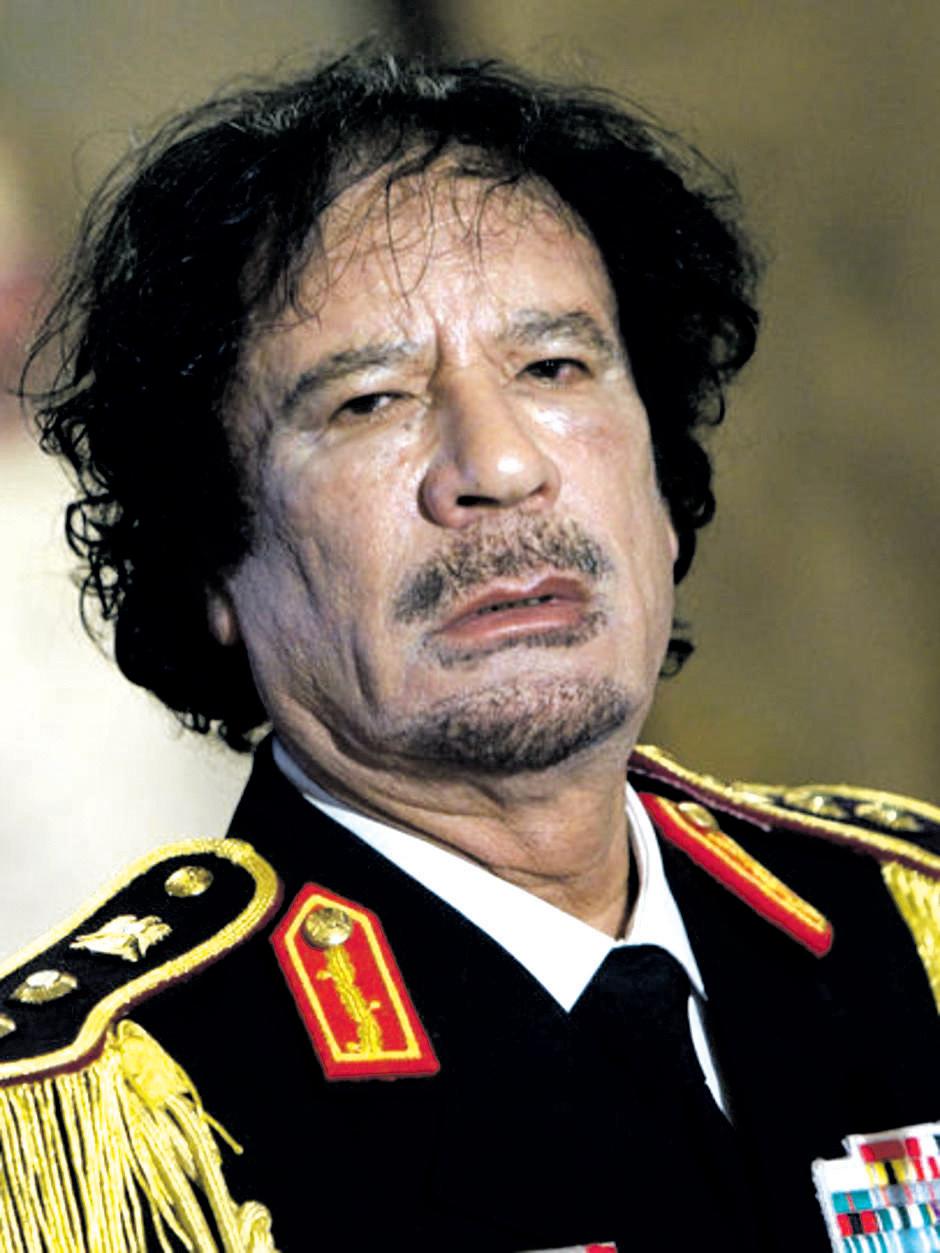
Thank you and goodbye
London’s News of the World newspaper shut down after 168 years, having phone hacked into people’s personal lives to obtain “scoops” for crime stories and celebrity scandals, as an enquiry continues into who knew what and when in the sorry saga.
A royal wedding… and that backside
The media stirred themselves up into a frenzy at Will and Kate’s wedding, which was a grand affair watched by an estimated 140 million
28 <> DECEMBER 2011 INDIAN LINK SPECIALREPORT
people worldwide. And it was the first time ever that a bottom made headlines and stole valuable media space from princesses and politics. But the bride’s sister’s bum did the job. Pippa Middleton has a fan club for her posterior, as the media continues to faithfully follow it around.

AT HOME IN AUSTRALIA
Quirky Qantas

Qantas’ surprise decision to ground all their passenger carriers on October 29 took the country by storm. Industrial disputes with three unions led to the decision which affected 68,000 customers worldwide, and let to a financial impact of $20 million per day. Negotiations continue to fail, paving the way for arbitration in Australian industrial courts to resolve the conflict.
Oh, Obama!
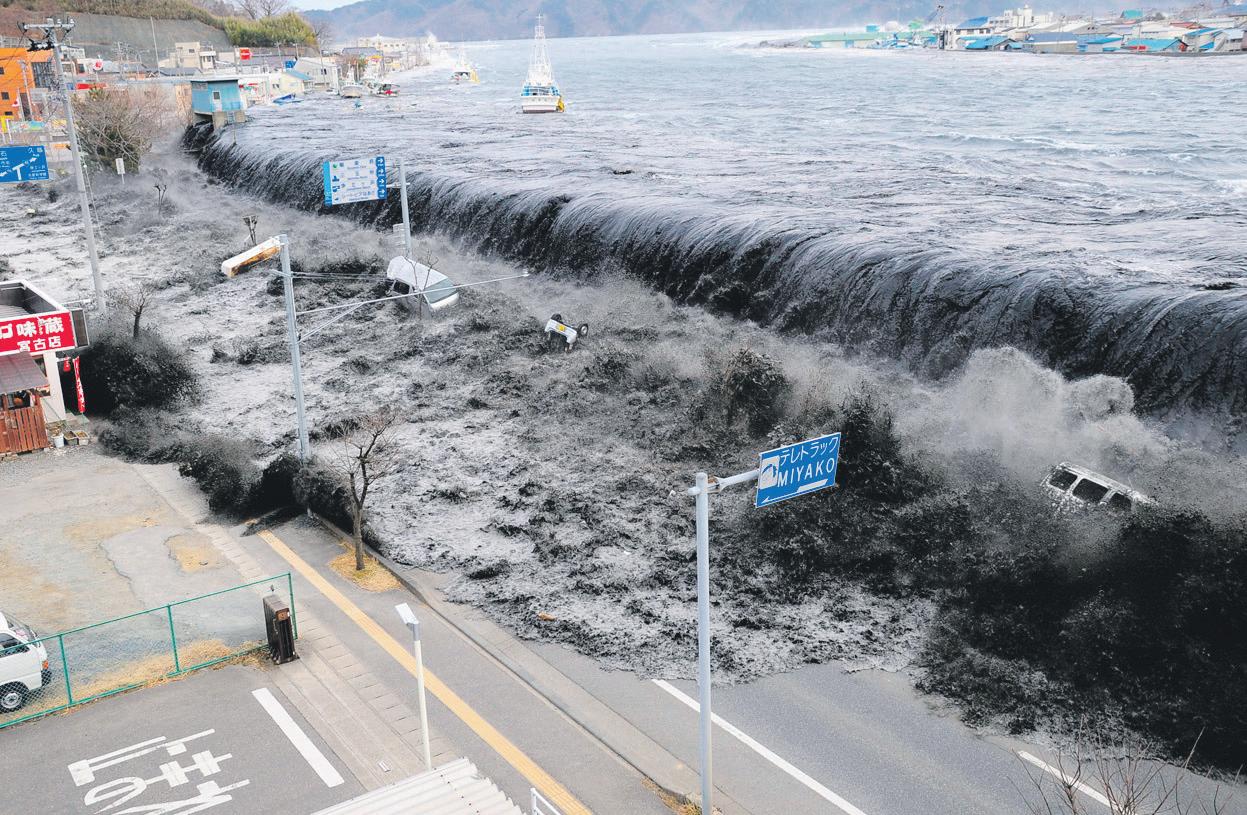
US President Barack Obama’s trip to Australia was an unprecedented success, much to the relief of Ms. Gillard, who registered an increase in popularity ratings. The US has come clean with its strategic shift in foreign policy, wooing countries in the Asia Pacific to counterbalance China’s Big Brother attitude.
As he addressed the Parliament, President Obama’s charisma and sincerity came through with resounding effect, winning the hearts of parliamentarians and Australians. Yes, he might have made the same commitment to
countries across the world, but well, Obama is Obama.
Thumbs up for uranium
PM Julia Gillard has finally conceded that uranium sales to India would be a good thing for Australia. Despite dissent within the party, the decision is looked upon as a potential strengthening of Indo-Oz bonds.

In other news in Australia, book lovers mourned as Borders, the historic Australian book retailer closed down stores nationwide, signifying the ignominious end of yet another Aussie icon. However, some traditions die hard, as punters enjoyed the closest ever finish in the history of the Melbourne Cup, as Dunaden won the battle to the line edging out Red Cadeaux. And in a surprise move, Parliamentary Speaker Harry Jenkins quit, with his chair offered to Peter Slipper, an Opposition renegade. The move is being described as a coup to shore up Julia Gillard’s precarious minority government.
AT HOME IN INDIA
Anna Hazare rocks!
Activist Anna Hazare’s demand to incorporate the anti-corruption Jan Lokpal bill into parliamentary legislation attracted thousands of protestors, gaining momentum through Facebook and Twitter, attracting unprecedented media attention and even
endorsements from various spiritual and political personalities. Both houses of the Indian parliament have accepted the clauses of the Jan Lokpal Bill, but discussions continue. Hopefully the issue should be resolved by 2050!
India CWC champions
India regained the World Cup after 28 years, playing against Sri Lanka after a blazing series of wins. The Indian team was unstoppable in proving their mettle against tough competition. Mahendra Singh Dhoni slammed out the final six that won the historic match, sparking nationwide celebrations among Indians worldwide, some which still continue in India.
F1 GP success on Indian soil
In a first, India hosted its very first Grand Prix event at the Buddh International Circuit at Greater Noida, putting the country on the elitist list of motorsporting events. 95,000 people watched German Sebastian Vettel’s win on a superb track that posed a few challenges for the drivers. It was as much fun as the afterparty, featuring Lady Gaga, who delighted a thousand exclusive attendees with her antics.
Super scamming
Politicians Kanimozhi, a Rajya Sabha MP, P. Chidambaram, the current Minister of Home Affairs and A. Raja, Minister
of Communications and IT, have been accused of illegally undercharging mobile phone companies in their licenses of frequency allocations. The difference in shortfall is estimated at USD39 billion. The scam came to light with the Nira Radia tapes controversy, and a media battle on government inadequacies in conducting the investigation rages on.

In other news-making events from India, Kingfisher Airlines is still down in the dumps having posted phenomenal losses of over Rs. 6,500 crore. Bachchi Bachchan baby girl arrived safely, and the proud Bachchan family is ecstatic, as you can tell by the Twitter posts. Salman Khan is equally happy as his baby, Bodyguard has proved to be the highest box office grosser of the year. And the nation breathlessly awaits Sachin Tendulkar’s 100th 100.
REST IN PEACE
We bade farewell this year, among others, to Apple founder Steve Jobs, Hollywood actor Elizabeth Taylor, singer-songwriter Amy Winehouse, boxer Joe Frazier, and racing car drivers Marco Simoncelli and Dan Wheldon. India mourned the loss of spiritual leader Sathya Sai Baba, cricketer Tiger Pataudi, ghazal singer Jagjit Singh, legendary painter MF Husain and Bollywood actor Shammi Kapoor.

DECEMBER 2011 <> 29 INDIAN LINK
Souls,
BY CHITRA SUDARSHAN
As the holiday season draws nearer, we turn our attention to travel writing: first, to two extraordinary travelogues about the subcontinent, and second, to a thoughtprovoking one by an Indian-origin author. These books epitomise the best in travel writing; they provide not only an authentic and in-depth description and analysis of the places visited, but a way of discovering more about oneself during the process.
Pico Iyer was born in Britain of Indian parents, and has written some superb travel books – the kind that force us to think about the most fundamental of questions. His book The Global Soul has been described by one as ‘the book that launched the twenty first century’, because it embodies the spirit of this new century in many ways. In this book, Iyer goes to what he calls ‘inbetween’ places such as airports, malls, and similar venues and introduces the new 21st century citizen who has multiple passports, lives in several countries (does that ring a bell with our readers?), all of which can prompt the question in him (or her), “Who am I”? It is a book for discerning readers.

William Dalrymple’s Nine Lives is perhaps a mirror image of The Global Soul. Whereas Iyer searches for that elusive 21st century, holder of multiple-identities citizen in 21st century places, Dalrymple, a ScotsEnglishman, does something quite the opposite, and goes in search of the spirit and the culture at the heart of India. Whereas Pico Iyer hardly acknowledges his Indian antecedents and focuses on that restless, and sometimes uprooted, individual with blurred identities, Dalrymple seems to hanker after the ancient and the exotic in India, a country which has been his home for 25 years! He is the founder and co-chair of the now famous Jaipur Literary Festival held every January.
In Nine Lives, Dalrymple describes the lives of nine different spiritualists from traditions ranging from a self-abnegating Jain nun who develops an intense friendship with a sister num; a Sufi singer doing a dhammal, the Sufi dance; a temple prostitute, daughter of Yellamma, who hopes to farm a piece of land she has bought; a naked Naga sadhu with an MBA; then there is a Buddhist monk who sets aside his vows to fight against the Chinese during the invasion of Tibet; two reciters or singers of epic oral works in their village of Pabusar, near Bikaner. Dalrymple lets them speak in their own voices here – and for the most part, keeps himself in the background. In the process of describing these varied lives, Dalrymple weaves into them the very tapestry of Indian culture and spirit, and gives us a taste of the “divine madness” that has survived the radical modernisation of India in recent times.
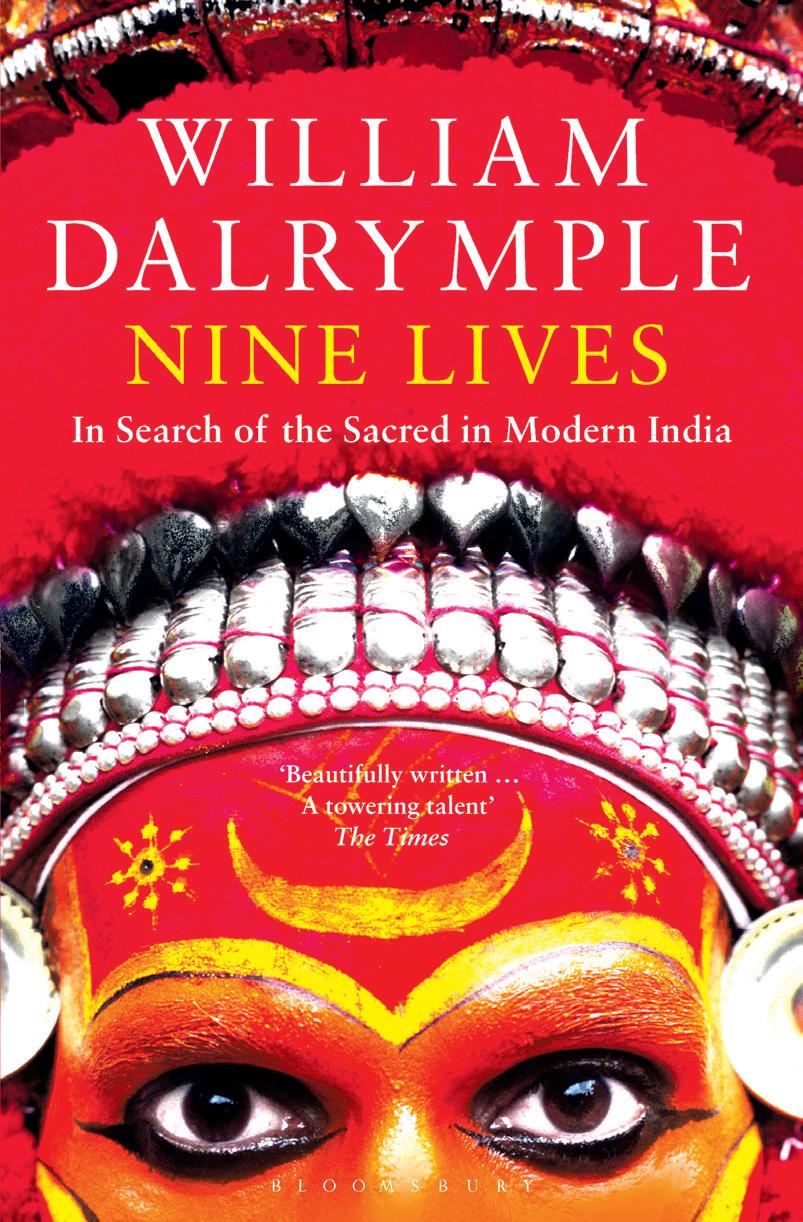
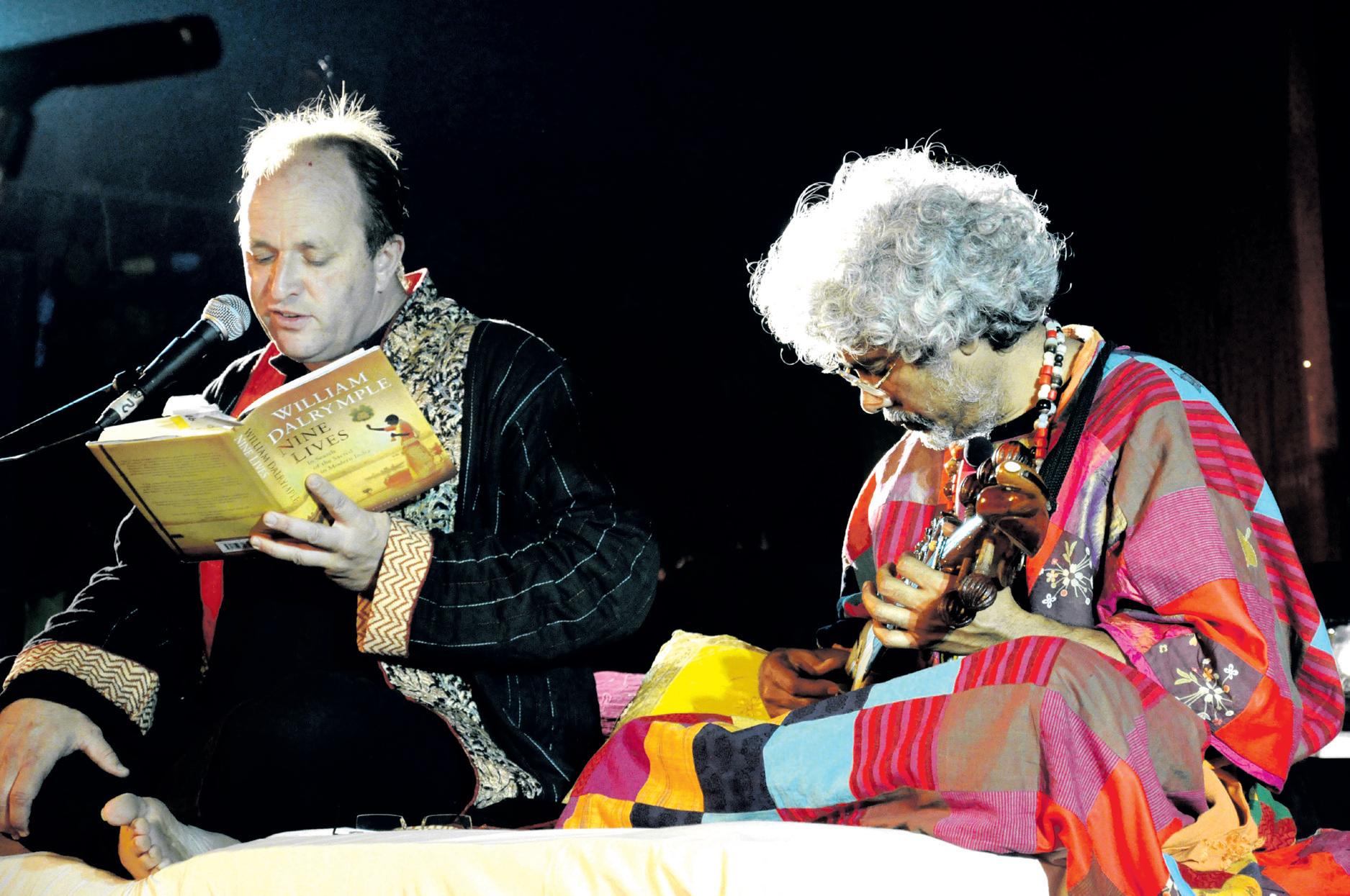
Alice Albinia’s Empires of the Indus: Story of a River, (John Murray, 2011) recounts the journey of this great body of water which begins in mountains of Tibet and flows through the deserts of Sindh, and into the ocean near Karachi in Pakistan. Albinia’s journey though, begins in Karachi, and she works her way upstream across the heart of today’s Pakistan, to the mountains and into
lives & empires
Three authors delve into the modern, cultural and historical aspects of India, offering a rich variety of perspectives
Whereas Iyer searches for that elusive 21st century, holder of multipleidentities citizen in 21st century places, Dalrymple, a ScotsEnglishman, does something quite the opposite, and goes in search of the spirit and the culture at the heart of India.

The Indus, near which some of the earliest cities were built; about which the earliest Rig Vedic Sanskrit hymns were written, was the mother of rivers, the ‘unconquered Sindhu’ beside which Islam’s first forays into the subcontinent began
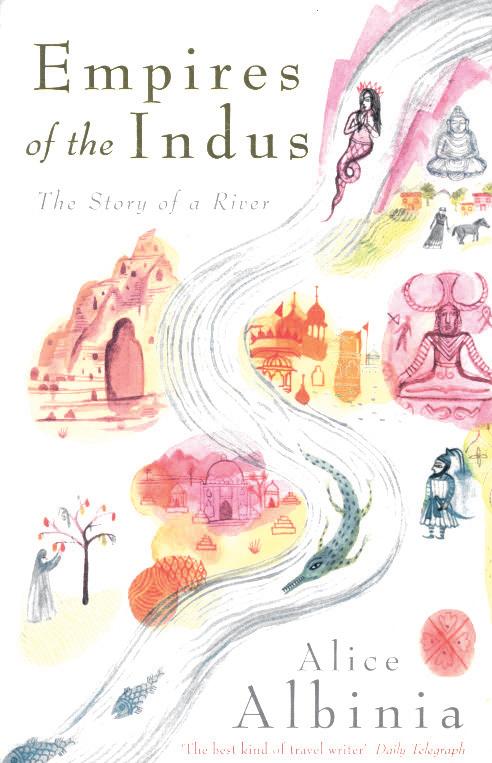
Tibet. The Indus valley has a continuous history of political, religious and literary ferment stretching back thousands of years; a history which Pakistanis share with Tibetans and Indians. The intertwining of those chronicles, memories and myths –that is the inheritance of the people who live in the Indus valley. The Indus, near which some of the earliest cities were built; about which the earliest Rig Vedic Sanskrit hymns were written, was the
mother of rivers, the ‘unconquered Sindhu’ beside which Islam’s first forays into the subcontinent began. Greek kings and Afghan Sultans waded across it with their armies; “Pakistan is only the most recent of the Indus valley’s political avatars”, she adds. What Albinia does is map those layered histories of the river and its surrounds, from the most ancient times to the present, and shows us that despite the militarised borders that divide the people along the river, their timeless inter-connectedness survives in so many ways. Nevertheless, she highlights a rather alarming fact: that this once-mighty river has diminished, and is only a shadow of its former self, that may well spell disaster for those who depend on it.
Albinia has had a long connection with the Indian subcontinent; after graduating in English Literature from Cambridge, she spent some years in Delhi working as a journalist and literary editor. Her parents and grandparents had visited India often, so she was no stranger to the country.

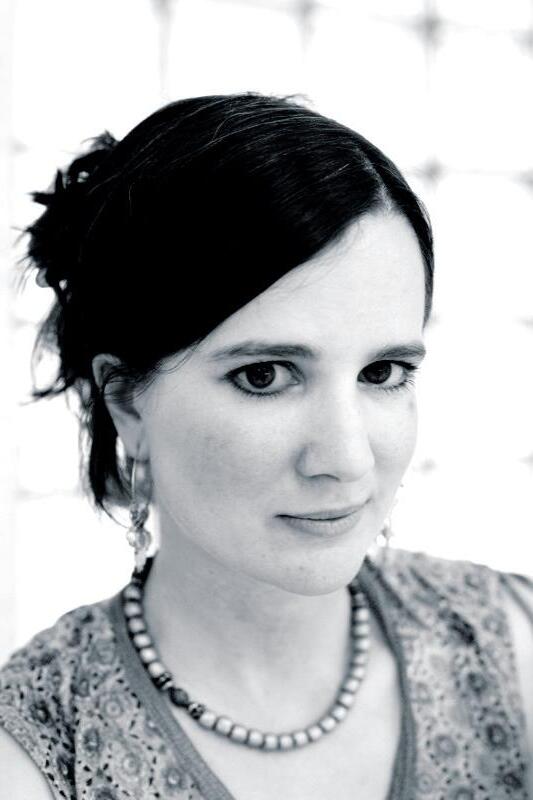
30 <> DECEMBER 2011 www.indianlink.com.au BOOKS
Pico Iyer
William Dalrymple
The recent Qantas fiasco has brought to light the fact that change is in the air, but will it be at the cost of patriotism?
BY ROY LANGE
Australia is many decades behind New Zealand in coming to terms with globalisation. This was very clearly evident when, with the grounding of Qantas, the country’s personalities shouted naked racist slogans against Asia.
The phrase of the aftermath was ‘Asianisation’. Mostly spluttered by the Transport Workers Union’s Tony Sheldon who shouted ‘stand by the workforce, the Australian brand of Qantas and not have it Asianised’. The erstwhile electronic store chain chap Dick Smith’s polemic rant was memorable: “When I get my private jet serviced in Dubai, it’s half the price of Australia because it’s all bloody Filipinos!”
These instinctively racist comments were a reaction to a long-standing dispute with Qantas management who are planning to greatly expand their outsourcing to Asia. The first dispute of this transition was in 2006 when Qantas outsourced a fair size of their IT to Tata Consultancy Services to the loss of 300 Australian jobs.

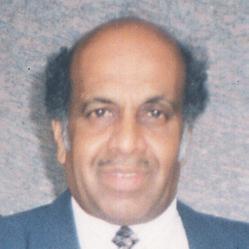
The end of flamboyance
that several jobs would be lost to future outsourcing. Could Tata be a manufacturing candidate? They would have to be, as they have saved Jaguar Land Rover. But that reminds us of the cultural challenges of outsourcing.
If you are a Top Gear fan you would have cringed at those pompous twits cringing at their country’s icons Land Rover and Jaguar being manufactured by an Indian company. Just like an Australian’s allergic reaction to the outsourcing of local services and launching into their best Peter Sellers Indian accent when they discuss telephonic customer service.
A global business cannot survive by being hijacked by a local workforce who insist on being paid inflated wages out of sheer nationalism and sentimentality.
While Europe, through past decades has been living a somewhat decadent lifestyle, the GFC has ushered in a new era of austerity
BY NOEL G DE SOUZA
These cultural challenges are compounded by Australians holding a deeply inherent belief that being overpaid is a God-given right. Especially employees of a company, such as Qantas, that is perceived as an Australian institution, rather than a business. A local ‘Mum and Pop’ milkbar, rather than a global business.
The old instincts of protectionism will never die and I am starting to believe that a return to hugely expensive protective tariffs cannot be discounted. The Western experiment with globalization has largely been a mixed bag.
Joyce, the CEO of Qantas, insists that if outsourcing is not disallowed by the Unions, Qantas will not only be half its fleet size by this time next year, they will ultimately perish. This is true. A global business cannot survive by being hijacked by a local workforce who insist on being paid inflated wages out of sheer nationalism and sentimentality. This hurts my unhinged lefty sentiments, but it is a cold fact.
Australians are outraged by the outsourcing of services for their airline, but only 18 per cent choose the airline to travel abroad because for 50 bucks less you get to travel on an airline with hostesses that don’t resemble scrum props and don’t have the charm of a country pub bouncer. For Asia does it better. And if it’s a few bucks cheaper, fair dinkum working Aussie families feel the flying kangaroo can go and get made into Russian sausages.
It’s no news that India is the world’s outsourcing capital. It is 60 per cent of the country’s GDP (only employing one percent of the population). Finding enormous success with a business model that could be paraphrased as ‘Half the price, twice the size’ they have cornered an elliptical market.
Indian aircraft engineering service will be candidates for further Qantas outsourcing contracts. They already have an enormous IT contract with the company. India could very well be the saviour of Australia’s greatest international brand, so will it be the saviour of the sacred Holden?
In the very same week as the unprecedented news blitz of outsourcing woes for Qantas, Holden announced
The current European crisis is a symptom of this. Europe, like Australia, has relocated its manufacturing base to the emerging nations and no matter how well you dress this fact in free trade communities like the Eurozone and the proposed APAC model, we have lost our means of production which is the fundamental foundation for the nurturing of wealth.
A return to those uncompetitive days is not impossible when you hear Australians’ hyper-allergic reaction to not only jobs that have been lost, but more often previously generous salaries and conditions being dramatically reduced.
But the Qantas shareholders don’t give two samosas. They voted overwhelmingly for Joyce’s plans because they want a dividend and they don’t care if that bonus is dressed in a sari and has an accent. Australian shareholders would make vegemite in a Kolkata hospice if it was cheaper and they thought they would get away with it.
I have mixed feelings. I see the way forward intellectually, but in my heart I am frightened for I see great hardship for Australasia being thrown from the nest and flying in a turbulent world. And if I am to be brutally honest, I too feel greatly attached to the undeserved privilege that we have enjoyed, but not acknowledged.
But I do greatly look forward to the global economy drowning out the racists that have surfaced in this dispute, and dragging them, kicking and whining, into an Asian century.
A positive start would be for Joyce to bide by his vision and outsource the entire Qantas management to Asia. The company’s experiment with outsourcing to Ireland is a strange failure, and no Indian CEO would ground his fleet voluntarily.
We are entering a new financial era in which austerities will prevail. This is particularly true of Europe. The era of flamboyance when indiscriminate borrowing and spending was encouraged is coming to an end. Flamboyance was colourfully, and some may say arrogantly, displayed by the Italian Prime Minister Silvio Berlusconi, who recently resigned. Parties in his Sardinian estate and elsewhere had the reputation of being orgies which he nicknamed “bungabunga” parties.
Spending and flamboyance has been excessive in Europe, both by governments and by individuals. They were supposedly keeping up with the fashion of the times. Official meetings were frequently known for their exuberance. This also applied to India. Witness the excessive Bollywood-style display put up for the closing ceremony of the Commonwealth Games; half the display would have been grand enough!
And individual Indians also tend to outdo everyone else in matters like building their residences and celebrating marriages. It might seem exaggerated, but Indians do seem to want to build their own Taj Mahals. During the period of easy money, an Indian family could build their own version of the Taj Mahal which meant a house large enough for at least two families to live in.
The legend of the Taj Mahal recounts how the Moghul Emperor Shah Jehan built the incomparable white and glistening Taj Mahal at very great expense, in memory of his beloved wife Mumtaz Mahal in Agra. After completing that monument, it is said that he had began to construct a black marble version of that imposing structure on the other side of the river as his own mausoleum; the base of which still exists. It was then, to prevent further expenditure, that his son Aurangzeb overthrew him.
The very wealthy industrialist Hinduja family have built an ornate and modern palace-like mansion overlooking Buckingham Palace, the very symbol of the British monarchy, in the heart of London. Reportedly costing the equivalent of $160 million, it has six floors. The four Hinduja brothers have a floor each to themselves.
Enough has been said and discussed about Antilla, Mukesh Ambani’s Mumbai home, that has today become the world’s most expensive residence.
Another palatial mansion, dubbed the “Taj-Mahal-on-the-Swan”, was being built by the Oswal family on the banks of the Swan river in Perth, but a plan to change their residence has led to the project being cancelled.
The new Global Financial Crisis (GFC)
began in Greece. Historically, Greece has long been eulogised by Europeans in a dreamy poetic way. The European common currency, the Euro, is symbolised by the Greek alphabet Epsilon which the European Commission states is “a reference to the cradle of European civilisation”; the two crossing parallel lines are said, “to ‘certify’ the stability of the euro.” Greece today unfortunately symbolises the great failure that the Euro now represents, and which threatens the very existence of the European Union.
The world, particularly Europe, kept borrowing and spending as if financial institutions were a “Magic Pudding”.
The Magic Pudding is an Australian children’s fairytale written and illustrated by renowned artist Norman Lindsay. No matter how much of the Magic Pudding is eaten, it magically restores itself, just like the finances of Europe being recapitalised by printing more money.
In the story, the Magic Pudding is owned by three companions who must defend it from thieves. One verse reads:
“A puddin’-thief, as I’ve heard tell, Quite lost to noble feeling, Spent all his days, and nights as well, In constant puddin’-stealing.”
Indeed, corporate and institutional plunder have been rife during and after the GFC. The Magic Pudding is not merely a children’s fairy tale. It is also readable as a parable for the adult world.
The world has now moved from flamboyance and entered into a phase of contraction. This affects us at all levels (national, regional and personal). Europe, the focus of the world’s current problems, will be lucky to get away with maintaining its current growth rates. But that does not seem likely. Individuals in Europe can be expected to suffer from a range of problems as governments rein in expenses.
Asia is in a rather different situation. India and China’s expected growth of 9 - 10% will have to be revised downwards. This is also true with the countries of South-East Asia. Europe is ageing, and one of its big expenses is pensions and healthcare for the aged. On the other hand, the East, South and South-East Asia’s youthful populations are growing. They need food, housing and education. Expectations have risen with the growth in the standards of living, and these cannot be reined in without widespread discontent.
India has been hit very quickly by the Eurozone crisis. India’s export growth has slipped from 82% in July 2011 to 10.8% in October 2011. Imports into India have simultaneously grown at a higher rate (21.7%) causing the largest monthly trade deficit ($19.6 billion) in four years.
The world realises that there is no Magic Pudding solution to the current Global Financial Crisis.
DECEMBER 2011 <> 31 INDIAN LINK
www.indianlink.com.au OPINION
OPINION
Monsoon

Wedding
An invitation to an Indian marriage ceremony brings to the fore keen observations on traditions, rituals and relatives.
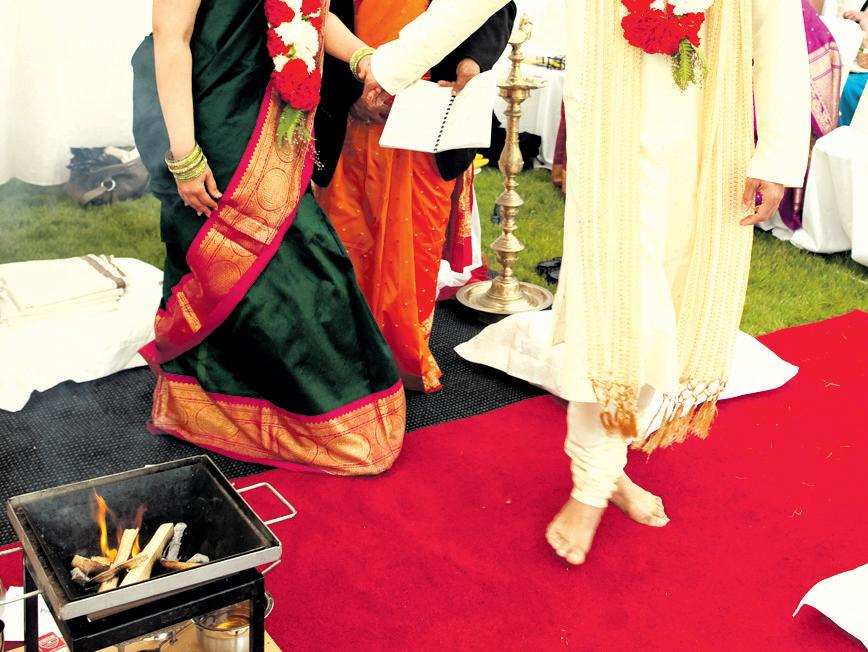 BY TIM BLIGHT
BY TIM BLIGHT

Another month, another festival in India. Diwali, the festival of lights, was everything as promised and more. As I stood on my rooftop and watched the Chennai skyline come to life, I thought about how lucky I was to have had the opportunity to experience this. Being in India for Diwali was on my list of ‘Things to do before I die’. Also on my bucket list was to go to an Indian wedding, something which I experienced just a week later. As we reach wedding season in India, most of the northern and western states are dry, but Chennai’s monsoonal dump arrived just in time for my friend’s nuptials! Fortunately, like a sign from the heavens, the skies cleared and sunshine graced the wedding day.
Indian weddings are famous around the world; known for being lavish, drawn-out affairs with a guest list numbering hundreds, sometimes thousands. As soon as I mentioned on Facebook that I was attending an Indian wedding, I received ‘likes’ from several people. Like watching the sunrise at the Taj Mahal, like owning a houseboat on the backwaters of Kerala, for many foreigners being invited to an Indian wedding earns bragging rights for at least couple of months afterwards! This wedding was a south Indian affair. I loved the brashness of it all – ‘Iswary Weds Venkatesh’ plastered across the front of the hall, announcing it to the world! The inside of the hall was decked out with cauldrons, incense, drapes, deities, food and enough flowers to make Karan Johar blush! The ceremony went on, food was served, more rituals performed, more food served. I was starting to like this! Interestingly, many of the people I spoke to had no idea of the significance of the rituals being performed. “Just enjoy!” I was told. Okay!
The Indian wedding ceremony has so many different facets, and so many different variations that often, apparently, even the couple don’t really know what’s going on or what is the significance of each aspect. Of course, there are somewhat standard elements, such as the ‘seven steps’ around the fire, although as I was to discover even this differs from state to state. In south Indian weddings each circle of the fire is separated when the couple sit down and recite yet more promises. It was only by the fifth lap/prayer round that I realized what they were doing – I was expecting a much brisker circumnavigation of the flame as I had seen in north Indian movies!
Compared to gora weddings (get it?), Indian weddings seem to be a remarkably casual affair in that practically anyone and everyone is welcome to turn up. Family, friends, friends’ friends, friends’ families, friends’ friends’ families… confused yet? No wonder the couple don’t know what’s going on half of the time! I also loved how, among the plethora of guests at the wedding, everyone chats like old buddies. Apart from politically-opposed family factions, people seem to join in and have a good time. No buttoned-down seating arrangements here! Conversation ranged from the philosophical –
like urban planning and the best place to settle down and raise a family – to the old Indian staples like how much things cost, and the way in which a particular family member rolls their chappati (even though the said family member probably doesn’t care). It’s easy to see how family arguments begin, and these provide fodder to programmes like Kyunki Saas Bhi Kabhi Bahu Thi, which is arguably as much a commentary on Indian society, as any of Deepa Mehta’s works.
Family issues exist everywhere, but Indian families appear to be able to express them in ways I could only dream of. It’s hard to know whether the scores of soap operas serve as an outlet or an inspiration to the millions who watch them. As a result, the word ‘tension’ seems to come up a lot here – it seems to be a catch-all phrase for the stress experienced by anyone who has ever worked, studied, driven, married, parented or dealt with their in-laws.
It’s a bit like the word ‘chemistry’, which seems to get used by the Indian media when talking about any male celebrity and any female celebrity who have ever laid eyes on each other. What is chemistry anyway? Is it what you have to pass in your HSC in order to study engineering? Or is it when a man takes a woman out to see Ra.One on Diwali instead of Damadamm? Is it being seen sharing a coffee at CCD before undisclosed goings-on in the back of an autorickshaw? Or is it, lo-and-behold, love?
My Indian wedding experience finished up with a cup of lime juice – or was that lemon? Apparently they’re the same thing over here! But yes, a cup of lime juice and a photo opportunity with the happy newlyweds. It’s often said that an Indian bride shouldn’t smile, however the bride, along with the groom at this wedding, were looking at each other with huge grins on their faces. They appeared thrilled, happy and above all in love. It must be ‘chemistry’.
Like watching the sunrise at the Taj Mahal, like owning a houseboat on the backwaters of Kerala, for many foreigners being invited to an Indian wedding earns bragging rights for at least couple of months afterwards!
It’s a bit like the word ‘chemistry’, which seems to get used by the Indian media when talking about any male celebrity and any female celebrity who have ever laid eyes on each other.
32 <> DECEMBER 2011 INDIAN LINK
Chennai’s Anna Salai by night
www.indianlink.com.au INDOPHILE

DECEMBER 2011 <> 33 INDIAN LINK
Beijing Nights
Connoisseurs of culture and cuisine will find this modern city with its ancient history and tradition, an irresistible treat
BY THOMAS E KING
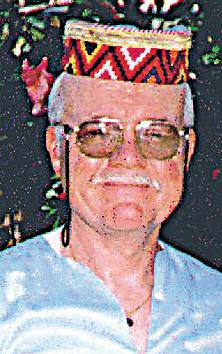
During the imperial past when Peking was according to the Chinese “at the centre of the world” and the Emperor was exalted as a living deity, day contrasted markedly with night. For instance, throughout his long day the divine ruler was engaged with nothing but ceremonial and administrative duties. After hours it was a completely different story as the pursuit of pleasure occupied the privileged one’s complete attention.
Cocooned in the 183-room walled royal enclosure amid splendid surroundings of silk and gold, the Emperor, while soothed by music and dance, would feast on rare delicacies served by a cortège of servants and think about a rapturous beauty awaiting in the nearby satin-lined boudoir. Meanwhile, outside the Forbidden City labouring masses huddling in dark, damp and drab huts ate meagre rations by candlelight and then crept into their beds dreading the long night ahead.
Today, the after dark scene for visitors to Beijing is somewhere in between these extremes. While the mega city is not the Orient’s number one nightspot there are still many unique-to-the-capital ways to spend the hours between sunset and sunrise.
dialogue or are familiar with the themes go anyway to enjoy the costumes, makeup, acting and musical accompaniment of night at the opera. Though this traditional entertainment is a mere 200 years old its elaborate themes are legendary as they deal with the creation of the world. Heroes are gods and emperors as well as faithful generals and hapless thieves. The king of the monkeys may well star along with the king of heaven in an opera that also features a melancholic courtesan, an unscrupulous government official and a damsel in distress.
Be prepared for an evening of Olympian proportions as the productions which are traditionally sung only by men may last more than six hours! There are few places in Beijing more appropriate to watch the animated spectacles than in the old neighborhood of Qianmen. This colourful area close to the Forbidden City and Tian’anmen Square is near the Qianmen subway station.
Romantics might …. opt instead for a chauffeured rickshaw ride along Chang’an Avenue, the widest street in the world, followed by a moonlit stroll through Tian’anmen Square and along the bank of the Forbidden City’s eastern moat.
Three entertaining activities are often closely associated with this ever popular destination:
Look for Qianmen Street and then set off to explore the lanes and side roads that lead from this historic thoroughfare. It was along Qianmen Street that the emperor was carried in an ornately decorated sedan chair from his palace to the Temple of Heaven during twice-yearly processions. Nowadays in this highly photogenic precinct you can visit such places as a 400-year-old pickle shop as well as an herbal medicine shop that opened in 1669 and an establishment where cotton cloth slippers have been made by hand for some 130 years.
By night make your way to the famous Liyuan Theatre, the Laoshe Teahouse or the Chang’an Theatre where Peking Opera, jingju in Chinese, is regularly staged. For
You may also like to attend a concert where
knobbing with the capital’s movers and shakers make you hungry it’s not far to walk to enjoy local taste sensations. In Qianmen try the lacquered-withmolasses duck at the circa 1864 Quanjude or the even older Bianyifang which opened in 1855. Don’t overdo it on duck, however, because large consumption of the special concoction of spices used in its preparation is often not agreeable with unaccustomed stomachs!
Three entertaining activities are often closely associated with this ever popular destination: eating tasty Beijing duck, watching superb acrobats and attending a performance of the Peking Opera.
1. Enjoy the grandeur of the Forbidden City during an evening stroll.
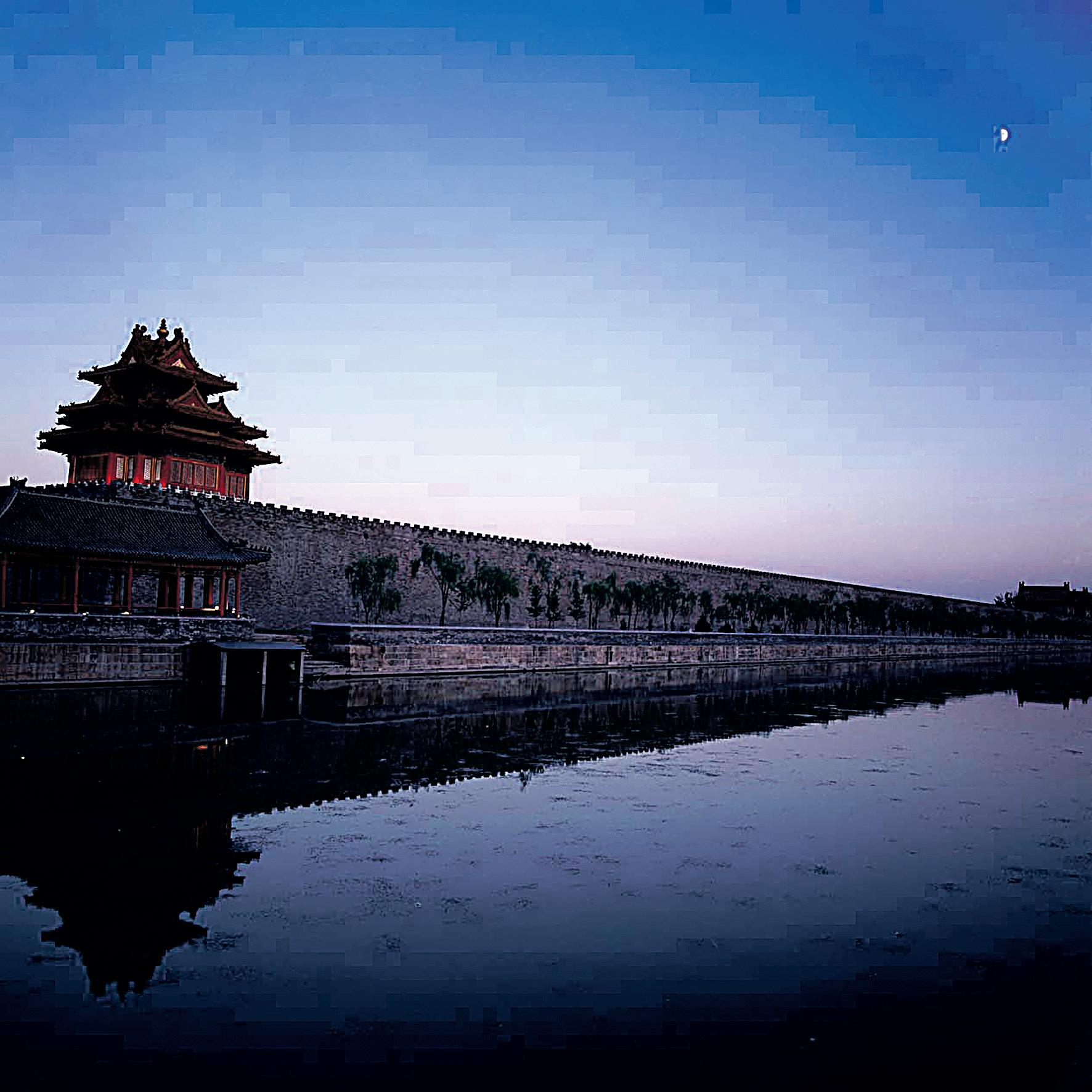
2. Peking Opera is a grand spectacle of costume, music and epic stories.

3. The Forbidden City is awesome no matter what time of day or year.
4. Time traditions are seen during a traditional tea ceremony.
5. Choose an evening’s entertainment from a wide range of exciting performances.
INDIAN LINK
TRAVEL
1 2
new discos, nightclubs, bars and cafes that have mushroomed in the city over the past decade or two. You can down your first cold pijiu at Public Space, Jazz Ya, Sanlitun, Magic Mushroom and Poacher’s.
Virtually all 4-star and 5-star hotels also have plush bars where more cold beverages are on tap. Some venues also boast of lush nightclubs, karaoke clubs and disco venues and even up market dinner shows. Other places where you can have a drink are to be found in the area circling Chaoyang Park, around the embassy district and in the Sanlitun area. Stretching from the Third Ring Road to the Workers Stadium and north to Dongzhimen this latter lively area is popular with expatriates as well as young Chinese who are doing their best to ensure
Beijing offers the greatest choice as well as guaranteed quality.
Perhaps the oldest of all of China’s highly refined arts and crafts is the making of filigree using precious gold, silver and copper threads. Specialized artists in Beijing have further developed the handicraft and these days now set pearls and precious stones in age-old designs.
Romantics might well want to jettison all these suggestions and opt instead for a chauffeured rickshaw ride along Chang’an Avenue, the widest street in the world, followed by a moonlit stroll through Tian’anmen Square and along the bank of the Forbidden City’s eastern moat. It’s an everlasting sentimental ‘souvenir’ of Beijing after hours.
China Southern Airlines has twice daily, four-class nonstop Airbus A330 services between Sydney and Guangzhou and Melbourne/Guangzhou. There are four flights a week linking Brisbane with China’s southern gateway and three connecting Perth and Guangzhou. After a brief stop in Guangzhou all flights promptly proceed on to Beijing. Guangzhou can be a stopover en route to India as the carrier has a daily service linking Guangzhou with New Delhi. See your travel agent or contact China Southern Airlines on 1 300 889 628. See www.flychinasouthern.com
TOURS
Helen Wong’s Tours has a 20-day Breathtaking China group tour priced from $5170 per person, twin share, including return air fares from Australia. The tour begins in Beijing (with a Peking duck dinner and a performance of The Legend of Kung Fu) followed by visits to Xian (Terracotta Warriors), Hangzhou, Tunxi, Huangshan, Shanghai, Wuyishan and Xiamen. Independent tours with extended free time in Beijing can also be easily arranged. For bookings, phone Helen Wong’s Tours on 1300 788328. E-mail hwtaus@helenwongstours.com and see www.helenwongstours.com



INFORMATION
The China National Tourist Office in Sydney, 11th Floor, 234 George Street, Sydney, NSW 2000, tel (02) 9252 9838, e-mail: sydney@cnta.gov.cn will send out a map of China and a brochure on Beijing. See www.cnto.org.au.
Lonely Planet’s China , a useful guide available in Australia, has a chapter devoted to the treasures of Beijing.
DECEMBER 2011 <> 35 INDIAN LINK www.indianlink.com.au
3 4 5
How healthy is your
salad?
2. Croutons
Croutons are usually made from white processed bread and add nothing but carbohydrates to a salad. These may also be loaded in hydrogenated fats as they are usually deep-fried and would add calories to your salad.
3. Fried meats
Deep fried meats add unhealthy fats and calories. ‘Crispy’ or ‘breaded’ is also another way of saying ‘fried’. So if you see any salad on the menu with a ‘breaded’ or ‘crispy’ option, it is best avoided. This is especially the case with chicken or seafood coated in breadcrumbs and deep-fried. Adding a piece of grilled chicken breast to the salad might add protein, but adding a piece of fried chicken will add more fats than proteins. Avoid fried meats like chicken strips or battered and fried shrimp.
4. Salad dressings
Is your colourful, attractive, nutritious salad loaded with salad dressing? It is sometimes surprising as to the amount of fats and sugars contained in salad dressings. And generally the fat-reduced salad dressings have more sugars than regular salad dressings. Secondly, since many vegetables are fat soluble, taking away the fat from the dressing means fewer of the salad nutrients will be absorbed into your body. Most bottled salad dressings are very high in sodium too.
In fact, you can make your own very healthy salad dressing quickly by just combining some olive oil, lemon juice and garlic, or a little olive oil, balsamic vinegar and Dijon mustard. Tomato salsas also make great salad toppers.
A lot of restaurants and takeaways mint money these days just by selling calories tucked away in attractive looking salads to innocent consumers.
BY GEETA KHURANA

With the mercury on the rise, the desire is up for cold foods and salads, especially when you want to lose those extra kilos piled on in winter which do not go well with swimsuits and summer dresses.
Salads are the synonym of healthy eating; but that is not always true. It is not difficult to turn a perfectly healthy salad into a disaster full of calories, sodium and fats. Just because it has a little green, and is served looking attractive with tomatoes and olives, does not mean it is packed with nutrition. You would be better off eating puris, paranthas or even a Big Whopper as compared to some high calorie salads! In fact, a lot of restaurants and takeaways mint money these days just by selling calories tucked away in attractive looking salads to innocent consumers. So how do you recognize an unhealthy salad?
Let’s look at a few high calorie additions to innocent looking greens.

1. Processed meats
Processed meats such as salami, bacon bits and ham do add flavour to your salad, but these also contain harmful sodium nitrites in the form of preservatives and will also add a hefty dose of

saturated fat to your salad. Bacon in particular contains lots of fat and sodium, some sodium nitrate preservative and therefore should be avoided in a healthy salad. Try to opt for lower fat meats such as chicken and turkey. Instead, add hard-boiled eggs, tuna, lean beef, sardines or salmon for those extra proteins. Chick peas, kidney beans and moong sprouts are also good alternatives to meats, and are good sources of proteins and fibre.
5. Cheese
Cheese is also very popular in salads. Cheese, when used in moderation, is perfectly fine because it adds calcium and protein. Too much cheese can lead to many extra calories. Also, most of the cheese used in salads is processed and therefore it adds the extra preservatives. Low fat Fetta or Parmesan are better than processed cheese.
6.
Greens
Iceberg lettuce is nice, green and crunchy, but does not have a lot of nutritional value. Try to use more of the variety of darker greens such as spinach, Arugula, watercress, kale and mustard leaves. The darker greens are loaded with cancerfighting compounds or phytonutrients.
7.
Candied or flavoured nuts
Some salads come with candied nuts that add a lot of unnecessary sugar. There are also flavoured packaged nuts sold specifically as salad toppers, which contain sugar, artificial flavours, and even hydrogenated oils. As a healthy alternative, choose a small amount of plain, raw nuts to add crunch to your salad. For some healthy sweetness, try raisins, dried cranberries, grapes or chopped pear, apple or strawberries.
Plan wisely and you can avoid turning a nutritious salad into an unplanned indulgence. Try to be more creative in making homemade salads and enjoy these in the summer.
You can make your own very healthy salad dressing quickly by just combining some olive oil, lemon juice and garlic, or a little olive oil, balsamic vinegar and Dijon mustard.
36 <> DECEMBER 2011 INDIAN LINK
A bunch of fresh, raw veggies attractively dressed can be the perfect summer treat, but not if it makes you pile on the calories
WELLNESS www.indianlink.com.au

DECEMBER 2011 <> 37 INDIAN LINK
It’s just not
The sentencing of three Pakistani players for match-fixing has sent out a strong message to those who seek to abuse this noble game
cricket!
BY RITAM MITRA
“The image and integrity of what was once a game, but is now a business, is damaged in the eyes of all, including the many youngsters who regarded three of you as heroes and would have given their eye teeth to play at the levels and with the skill that you had. You procured the bowling of 3 no-balls for money, to the detriment of your national cricket team, with the object of enabling others to cheat at gambling. Now, whenever people look back on a surprising event in a game or a surprising result or whenever in the future there are surprising events or results, followers of the game who have paid good money to watch it live or to watch it on TV, in the shape of licence money or TV subscriptions, will be led to wonder whether there has been a fix and whether what they have been watching is a genuine contest between bat and ball. What ought to be honest sporting competition may not be such at all.”
Justice Cook’s sentencing remarks are perhaps the most appropriate and revealing amongst the virtual tsunami of commentary that has come to the fore regarding the sensational, scarcely believable, yet devastatingly confronting spotfixing debacle which has left the cricketing world in a state of disarray. In early November, three Pakistani players - Mohammad Amir, Mohammad Asif and Salman Butt, as well as the British-Pakistani player-agent, Mazhar Majeed, were each sentenced to jail terms for conspiracy to cheat at gambling and conspiracy to accept corrupt payments. Amir received 6 months in a juvenile facility; Asif will go to jail for one year; Butt will be incarcerated for 30 months, while Mazhar Majeed received a 32 month sentence.
Caught out
The story unfolded in August of last year, through a remarkable sting operation conducted by the now defunct tabloid magazine, News of the World. The publication’s reporters established contact with Majeed who was suspected of match-fixing at the time, and procured the now infamous video evidence showing Majeed counting the corrupt money, making, amongst other things, two ultimately correct predictions regarding two no-balls that would be delivered by Asif and Amir the next day. The commentators called Amir’s no-ball “an enormous no-ball, a good half a metre over the line”. Asif’s no-ball was not as noticeable, but nevertheless came at the time predicted by Majeed.
The fact that only the captain controls which bowler is bowling at a specific time meant that Salman Butt was implicitly caught out by the operation too; the now infamous photo shows Salman Butt, fielding at mid-off, looking not at the batsman as he should have been while the bowler was delivering the ball, but closely at Amir’s right foot and its complete disregard for the popping crease.
Varied reactions
The players were all banned from the game by the International Cricket Council (ICC), following the investigation. Amir received a five-year ban, Butt ten years, of which five are suspended, and
In early November, three Pakistani players - Mohammad Amir, Mohammad Asif and Salman Butt, as well as the BritishPakistani playeragent, Mazhar Majeed, were each sentenced to jail terms for conspiracy to cheat at gambling and conspiracy to accept corrupt payments.
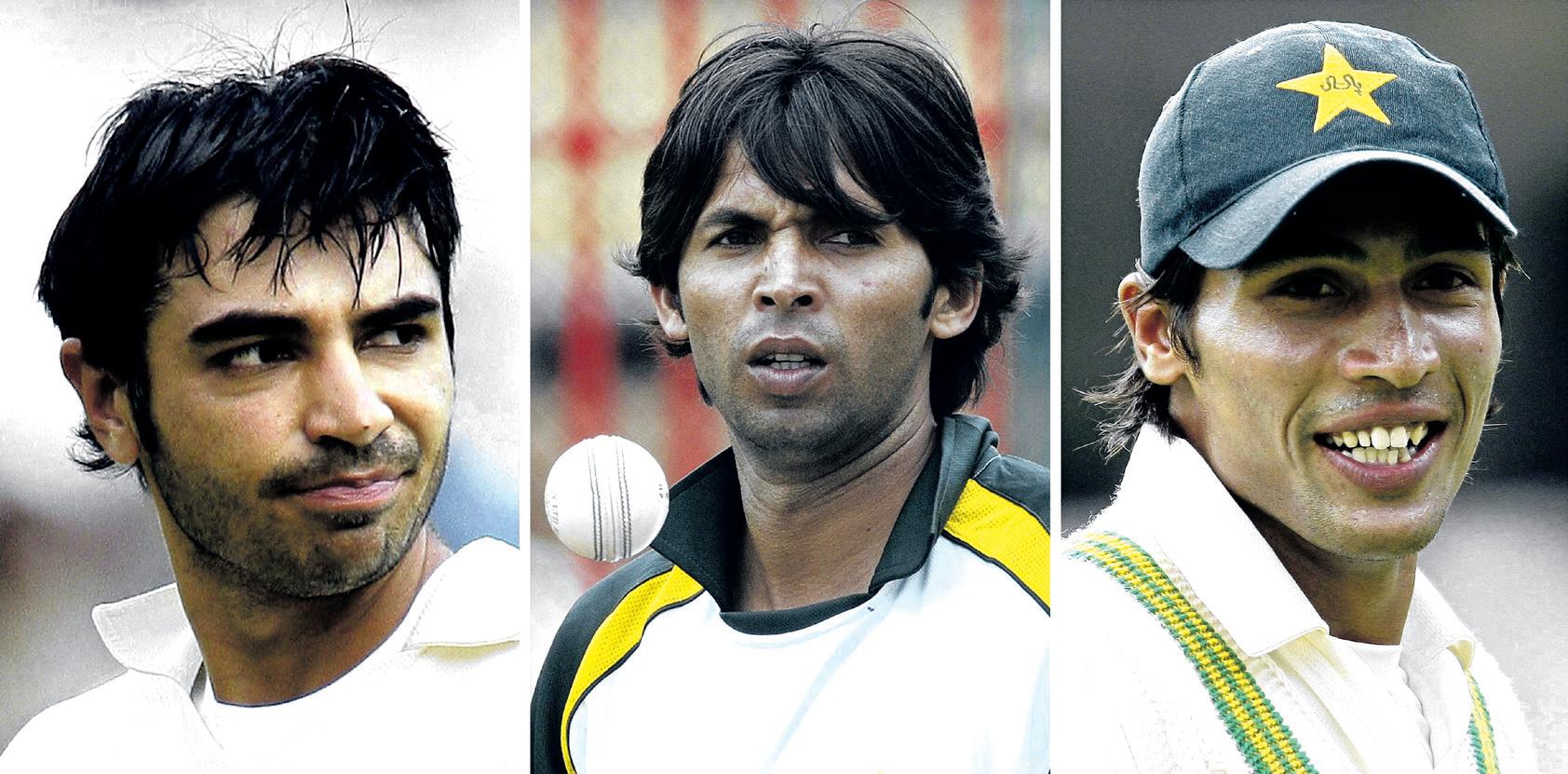
Asif was banned for seven years with two years suspended. A startling event, in hindsight, is the unabated indignation expressed by Wajid Shamsul Hasan, the Pakistani High Commissioner to the United Kingdom, who claimed that the players had been “set up”, and that they were innocent of the charges. Indeed, all three players initially pleaded not guilty to the ICC tribunal; Amir and Majeed later entered guilty pleas ahead of the criminal trial, and this shortened their sentences somewhat. The steadfast support extended to the players, though, was tempered by the surprised and disappointed reactions following their convictions. Imran Khan and Aamer Sohail, two Pakistani legends, amongst others, were especially hurt, with Khan labelling it a “sad day for Pakistan cricket”, and Aamer Sohail labelling the charges “shameful”, adding that “this is what happens when you don’t react quickly enough to fight corruption”.
Confrontations and accusations
The trial itself was a very ugly affair; Asif and Butt’s lawyers were at loggerheads with each other during the trial – understandable, given that each player’s defence was to dissociate themselves from the other, and from Majeed. Majeed himself boasted of connections with Roger Federer and Brad Pitt, and seemed utterly proud of his network of contacts. Revelations were made of Butt’s lavish lifestyle, including his collection of luxury watches; Asif accused Butt of abusing him in order to make him bowl the no-ball; meanwhile, the prosecution continued an uncompromising attack on the defendants, at one stage telling Butt, “You are lying your head off to the jury, aren’t you, Mr Butt?”
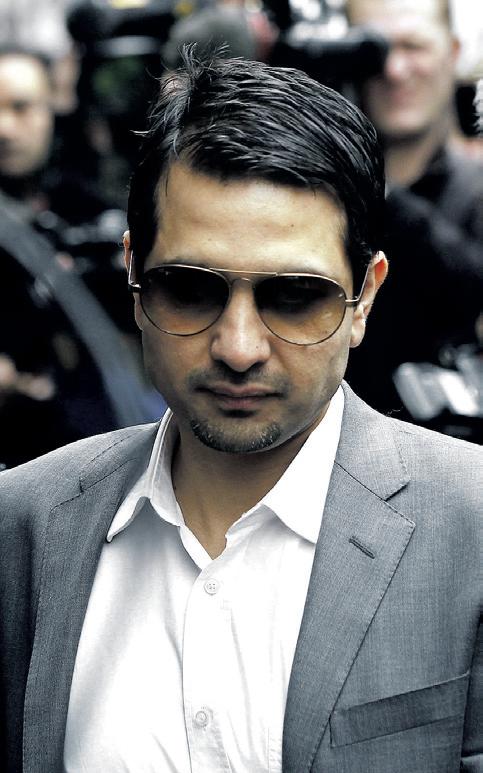
The sentences handed down to the players have been, for the most part, widely well-received. Although Amir’s was for some somewhat harsh, given his age and guilty plea, he was officially recognised as an easily impressionable young victim from an uneducated and impoverished background, and did in fact receive a reduction in sentence. However, it is starting to become a more common trend for players to speak out against corruption; and this perhaps suggests that it would be somewhat naïve to consider the Lord’s test to feature the only dishonest events that have taken place on the cricket field in the last decade.
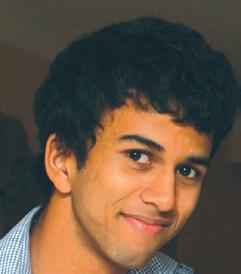
The world reacts
Andrew Strauss, the English Test Captain, is very outspoken, saying, “I still think the ICC could be doing a lot more than they are doing. Unfortunately, the anti-corruption unit is a pretty toothless tiger.” Meanwhile, Michael
Vaughan still believes that, “There are more out there and more can be done to try and catch more than just the three we’ve seen in court over the last few weeks.”
It is, after all, a very sobering thought to any potential spot- or match-fixers, that being caught does not just mean a ban from the game anymore; the players are risking their very freedom. As was put forward by Butt’s lawyer prior to Justice Cooke’s sentencing statement, Butt will be well into his 30s by the time the bans are lifted. He will be virtually unemployable, and will have spent most of his money on his own legal costs, as well as those of the prosecution which he was ordered to pay. Already, there has been a push for spot-fixing to become illegal in Australia by the next year.
Letting down a nation
Justice Cooke’s sentencing argument further reads: “In Pakistan, where cricket is the national sport, the ordinary follower of the national team feels betrayed by your activities, as do your fellow countrymen in this country. You Butt, Asif and Amir have let down all your supporters and all followers of the game, whether suborned by you, Majeed, or more than willing coconspirators.” The emphasis placed on morality during Cooke’s judgments and sentencing consideration highlights his view that this type of conduct has no place in a civilised society. Pakistan has surely had enough of those who dishonour its name, and the nation will have breathed a huge sigh of collective relief after Pakistan’s series win against Sri Lanka at Sharjah. Even though they are now without three of their former first-choice players, including the best and most potent bowling combination in the world, Pakistan can now move on and try and rebuild from the rubble that is the heartbreak of millions of Pakistani fans.
So, as the players serve their sentences, it is perhaps time to recognise just how big a landmark this decision is in cricket’s rich and colourful history. Originally known as a gentleman’s game, players are required to sign a “Spirit of the Game” clause before being allowed to play cricket. From today, cricket could move forward and corruption could be well and truly driven out of the system if enough work is done at the grassroots level. However, if cricket continues to remain stagnant and inexplicably behind the times as it is today, eradicating spotfixing will be too tall a task - the change must happen now. The game deserves better - it’s just not cricket!
38 <> DECEMBER 2011 INDIAN LINK SPORT www.indianlink.com.au
The emphasis placed on morality during Cooke’s judgments and sentencing consideration highlights his view that this type of conduct has no place in a civilised society.
Salman Butt, Mohammad Amir and Mohammad Asif
Mazhar Majeed
Matches don ’t need fixing,
cricket does!
Once hailed as a gentleman’s game, various factors have contributed towards tarnishing the sport to an alarming degree
BY MALLI IYER
Whilst most other sports are grappling with cheating through the use of performance enhancing drugs, cricket at the international level is obsessed with match fixing allegations and its latest variant known as ‘spot fixing’. The cricket loving public is beginning to wonder if their favourite sport will ever return to its glory days of wholesome entertainment, where professional cricket players and administrators all over the world uphold its reputation as a “gentleman’s game”.
Corruption at the core
A number of recent developments in cricket are unpalatable – match fixing in connivance with illegal bookmakers, ball tampering (or biting, a la Shahid Afridi), using abusive language and audible expletives on the field, racist taunts and openly dissenting the umpire’s decisions have all become commonplace. It is evident that the game of cricket has not measured up to the general expectation of fairness and good old sporting spirit. Big money and sponsorships appear to bring with them a corrupting influence and dirty politics. Political leaders like Sharad Pawar and John Howard want a share of the action, even though neither has played any competitive cricket. Lalit Modi was hailed as breath of fresh air to cricket, but was recently sidelined and accused of corruption and mismanagement of the Indian Premier League (IPL).
Even terrorism has left its ugly mark, causing Pakistan to lose all its own cricket venues and move its game to safer venues in the Gulf. The advent of new technology, neutral umpires, multiple camera angles, heavy security and police presence have changed the face of the game,
although it is debatable whether it has made the game any fairer in the way it is conducted.
Not a new phenomenon
Many people believe that cricket’s reputation is tarnished by the recent punishment and prison terms handed out to three Pakistani players and a bookmaker. They would be surprised to know that the first known victim of gambling in cricket was Ted Pooley, a first choice wicket keeper for England who languished in a prison in New Zealand in 1877 after he was arrested for wagering money in a game of cricket with a railway engineer called Ralph Donkin, in pursuit of making a fast buck. Ted Pooley was a highly respected cricket player (but an inveterate gambler) and was chosen to tour Australia and New Zealand with James Lillywhite’s England tour in 1876-77. He missed out on playing the first ever game at Melbourne between England and Australia. Betting was a feature and part of cricket in those days, and the odds were published by local newspapers.
The price of cheating
More recently, several reputed players have been punished, suspended or banned for matchfixing or receiving monies from bookies – the late Hansie Cronje (South Africa), Salim Malik (Pakistan), Marlon Samuels (West Indies), Mohammad Azharuddin and Ajay Jadeja (India) were all highly talented and proven players, until they were caught. Australian players like Mark Waugh and Shane Warne admitted to giving information to illegal bookies in 1995, but were only given warnings by the cricket administrators. Several others have been alleged to have involvements with bookies, namely Herschelle Gibbs, Wasim Akram, Kamran Akmal and Nicky Boje, but have escaped due to insufficient proof. Pakistani cricketers seem to incur the wrath of the authorities everywhere, and a point has been reached where Pakistan

cricket is held guilty until it proves its innocence. This is due to glaring inconsistencies showing them up as a brilliant bunch at one time, and underperforming the next. It is to be noted that well-known betting agencies like Ladbrokes and Betfair have collaborated with cricketing authorities in England and Australia, and betting odds are already announced to television audiences by the sportscasters. The Indian government is also understood to be examining ways to establish links with underground betting agencies to legitimise gambling and in the process, get their cut. Cricket authorities do not have the locus standii to hand out summary punishments, but the Courts have generally supported these institutions and their findings have been accepted as prime evidence in trials. Discerning cricket observers would appreciate that there is a very fine dividing line between legal and illegal bets which is essentially a corrupting influence on players. The lure of “getting rich quick” is undoubtedly an attraction to most international players since their career span of peak cricketing prowess usually averages between 10-15 years, after which they have to eke out a living which offers no guarantees.
Racist taunts and sledging have also become an integral part of the game. Cricketing authorities have issued stern warnings and fines on players when they openly dissent against umpiring decisions, or make remarks on field which bring disrepute to the game. However, they are quite inconsistent when it comes to handing out punitive decisions. The same goes for match referees who are seen to be biased in favour of certain players.
There is not an iota of doubt that the game of cricket will have to change to move with the changing times, but the brains trust of international cricket has to ensure a modicum of respectability to competitions, whether they play the fast and furious 20-over game or the more sedate 5-day test matches.
ROOMS FOR RENT
The advent of new technology, neutral umpires, multiple camera angles, heavy security and police presence have changed the face of the game, although it is debatable whether it has made the game any fairer in the way it is conducted.
We are a professional Indian family with 2 kids (8 years and 6 years). We have up to two bedrooms available in our luxurious house for rent / boarding for a suitable single (male or female).
• Room is furnished upstairs bedroom with bed, mattress, desk, chair, dresser
• Room has attached private toilet / shower / washbasin
• Room has attached spacious walk-in-wardrobe and storage area
• We will allow shared use of kitchen, fridge, washing machine, TV, DVD
• House is close to park, shopping centre, bus stop
• Room has heating and cooling
• Food (vegetarian and non-vegetarian) will be provided
• Rent $750 per month including food and reasonable use of electricity, gas,water If interested, call or leave message on: 0423 001 508
DECEMBER 2011 <> 39 INDIAN LINK
Pakistani cricketers seem to incur the wrath of the authorities everywhere, and a point has been reached where Pakistan cricket is held guilty until it proves its innocence
www.indianlink.com.au STAGE











40 <> DECEMBER 2011 INDIAN LINK 319 Stephenson Road Select Insurance (Australia) Pty Ltd Authorised Representatives NAS Brokers - AFSL 233 750 www.selectinsure.com.au Suite 16, L 14, 530 Little Collins Street Melbourne 3000 Ph: 1300 921 998 Mobile: 0425 308 313 Email: vijay.raj@selectinsure.com.au Wondering how to reduce your insurance premium? Don’t pay too much for your insurance. Save money with Select Insurance. Select Insurance offers insurance services for: • Business • Retail • Restaurants • Landlord • Security • IT • Professional Indemnity and Public Liability • 24/7 Australia wide – we are there for you • Leading insurance companies – Zurich, CGU, Allianz, GIO, AIG, QBE and more CALL SELECT INSURANCE 1300 921 998 Vijay Raj BE, MBA, ADFP JP
Master of words
BY TRACEY HOLMES
Masterful.
Tortured.
The words are many, their impact inadequate. Describing Peter Roebuck needs the genius of Shakespeare or Mozart, the colour of Van Gogh. In some ways, to be the best requires a tortured soul. The despair gives an insight that eludes others. To then have the brilliance to create understanding in others simply highlights even more the solitary world he inhabited. Roebuck was not a ‘sports’ writer or broadcaster. Anyone who thinks so is missing the most important part of his work. Peter had a rare ability to pick out the beating heart of a cricket match and use its momentary significance to describe the world we live in.
The poles of poverty and affluence in India, the impossible choice between violence or corruption in Pakistan, the underlying tide of racism in Australia, not seen by most Australians but perceived by many others…this is what Roebuck saw in the way players played.
His words were well chosen. They carried hidden depth. Yet as his broadcasting with the ABC showed, he didn’t ponder over their selection, they were immediate and perfect. Roebuck was a master of words.
In the same way that Tendulkar tirelessly practiced stroke after stroke to perfect the cricket shot, or Federer the tennis return, Roebuck spent many hours in his solitary life perfecting his craft.
His followers worldwide tuned in for him, searched the web for his writings and after each day’s play, eagerly awaited his analysis. Yet who amongst us knew him?
A Wisden Cricketer of the Year in 1988, captain of Somerset, author, commentator and a private man whose mastery of words can only come from one who spends many hours debating in his own mind, fighting with opposing thoughts, searching for the clearest path through, finding the essence of ideas.
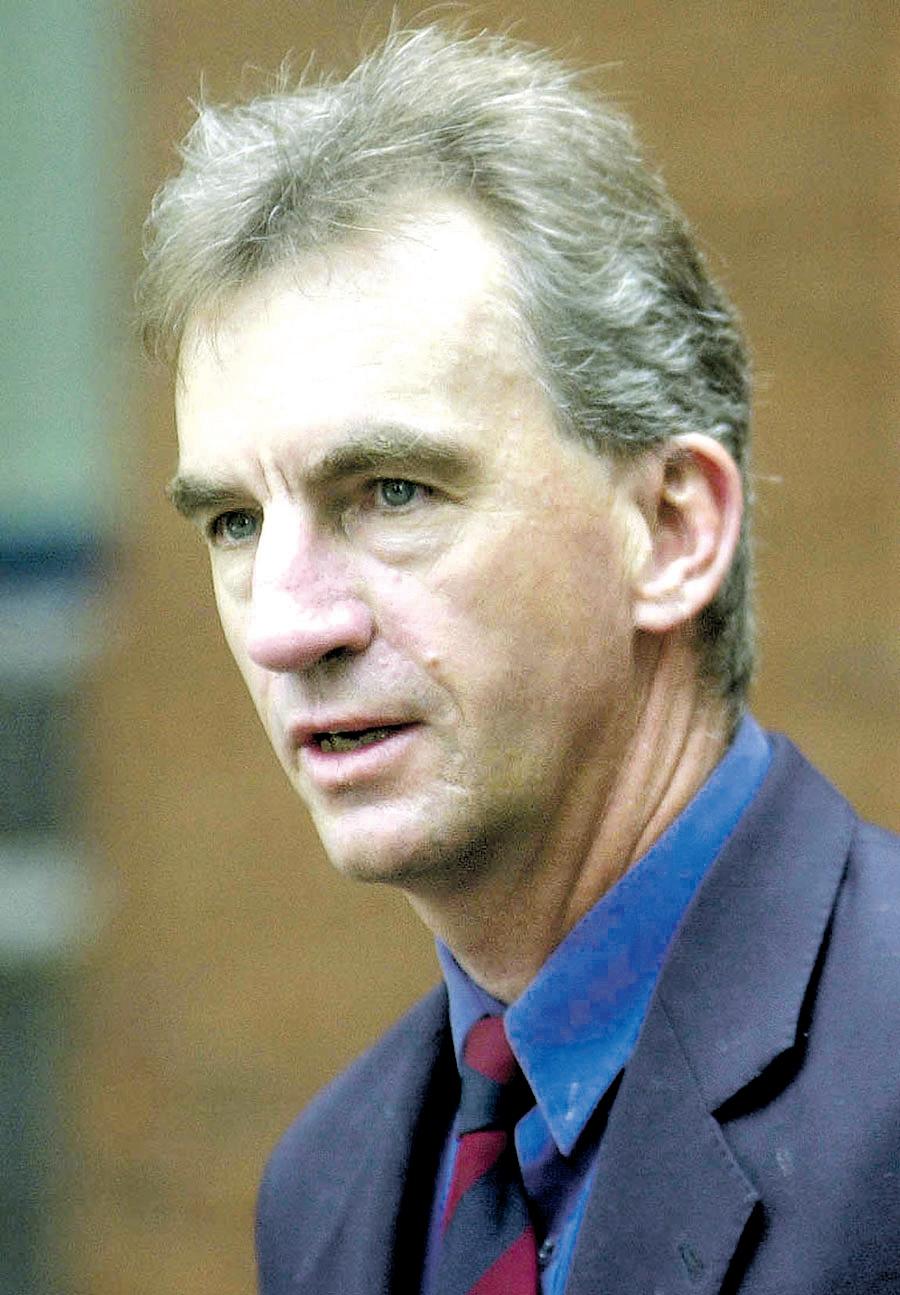
Peter Roebuck had residences in England,
The biggest fan of the game
BY RITAM MITRA
Cricket followers around the world are in mourning after the sport’s premier journalist, writer and above all else, fan, passed away in tragic circumstances that can only be described as apt, given the private and somewhat lonely life he led. Peter Roebuck’s fall from the sixth floor of a hotel room in Cape Town on November 12 brought to an end the chapter of a man who, sometimes controversially, challenged the way we viewed cricket, yet could not care less who he upset in his pursuit of sharing his views.
Selfless and easy-going
My first experience with Roebuck perhaps summed up the type of character he was.
As the 5th Test match of the 2010-11 Ashes was about to begin at the Sydney Cricket Ground, I stood in a corner of the media box. Childhood heroes walked around me and beside me, and being a good 15 years younger than anyone else there, I was naturally completely overawed by the situation. Unsure
of what to do, I stood nervously sipping my water until a gentleman in a straw hat walked up to me, stuck out his hand and said, “Hi, what’s your name? Come have a seat with me.” This was Roebuck, and he would eventually go out of his way several times throughout the entire Test to make sure I was comfortable.
His modesty and humility surprised me, given the somewhat chaotic atmosphere that otherwise transpired in the box. Although I did not always agree with Roebuck’s views (who did?), I quickly found him to be a very selfless figure. In the busy, frenetic world of sports journalism and cricket coverage, Roebuck was a relaxed and laid-back soul who would rather enjoy a coffee and an intelligent, prolonged chat about the cricket than having to sit in front of his laptop or make calls on his phone. It is well documented that Roebuck was not adept with technology; however, he taught himself as well as he could, and I often caught him on his Facebook page as the match lulled.
An inspired writer
Although he captained Somerset and scored over 17,000 first class runs, Roebuck was always going to be remembered first
Australia and South Africa, but was at home nowhere. What he sought outwardly could only be found inwardly so he took his own personal journey with him, on cricket tour after cricket tour. Delighting us with his descriptions, his insights and his deep understanding of the game and the men who played it.
His website carries links to his writings for the Sydney Morning Herald, The Age and ESPN cricinfo. His stories reveal his intellect and insight, but more telling is the link to ‘extended family’. A photo gallery of the people he was most proud of in life. Not his blood relatives, but his chosen family.

Young men whom in other circumstances might only have been a statistic. Violent backgrounds, some orphaned, most in poverty. In them Peter found an outlet for the most basic human craving outside food, clothing and shelter, that is, to love and be loved. He paid for their schooling, sent them to university, was there when they graduated and created opportunities that destiny tried to deny them. Like a proud dad, Peter stands between their beaming faces. Young men who now have a future where previously none existed. Peter helped give them that.
Yes, Peter had issues. We all have issues. Yet his remarkable intellect allowed him to take complex human and societal issues and boil them down to a description of a cricket match. That was Peter’s over riding passion. Reflecting us to ourselves so in some way we could all make better sense of the world and our place in it.
and foremost as a writer. He started with a provocative diary, It Never Rains, which he kept of his 1983 county season with Somerset. The book announced him as an extremely elegant writer, although he was hardly elegant at the crease as a doughty opening batsman. He was quickly seen as a writing force to be reckoned with, and taking Law at Cambridge perhaps highlighted that he was too introspective, inquisitive and too intelligent to make more of his career in the game itself.
As considerate a gentleman I found him to be, it is ironic that Roebuck was known to be inconsiderate to anyone when it came to his writing; his topics of contention included the political environment razing Zimbabwean cricket to the ground, the corruption issues in South Africa, the problems with civil unrest in Sri Lanka and perhaps his most famous piece, the call for the sacking of then Australian captain Ricky Ponting, after the Harbhajan Singh and Andrew Symonds incident at the SCG in 2008. People were scathing in their criticism of Roebuck, and some of the comments directed at him were nothing short of spiteful.
Outspoken and opinionated
However, the fact remained that Roebuck published his opinions because he believed them, and did not care what others made of them; he was, more than any other writer in the media box, his own man. The more conservative newspapers would always be apprehensive of what Roebuck would write,
As for many of his avid readers and listeners around the world, no cricket match will ever mean quite so much for me again without Peter’s analysis.
Like a cake without icing, so is cricket without Peter Roebuck.
May he rest in peace.
Tracey Holmes is one of the world’s most experienced and respected broadcasters with more than 20 years’ working experience in Australia, Hong Kong and Beijing. An Australian television and radio presenter, specialising largely in sport, she began working as a journalist at the Australian Broadcasting Corporation in 1990, and was the first female host of its sports programme Grandstand. In 2011, Holmes joined China’s English-language news channel CCTV News as a sports news anchor. Peter Roebuck was a regular guest of Tracey on her radio shows around the world and frequently corresponded with him about life in general.
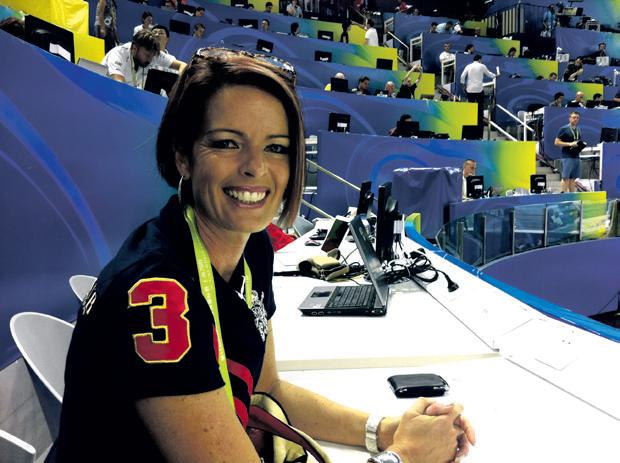
Peter had a rare ability to pick out the beating heart of a cricket match and use its momentary significance to describe the world we live in.
because they could never afford to print views that weren’t of the majority. Indeed, in one of his recent emails to me, Roebuck said, “Glad not working for News Corp by the waytheir humbug about free press exposed once and for all!” after the debacles surrounding Murdoch’s assets this year, including the collapse of the News of the World tabloid.
That, for me, spoke volumes of a man who was paid for his views. It would be easy, as most writers do, to please the majority and not ever speak ill of those who are sipping their tea and nibbling their biscuits in the highest of places. Cricketers may say they don’t read the papers, but every single international cricketer will remember what some individual writer once said about them, perhaps in the vain hope that they can one day say, “I told you so!” Peter Roebuck wrote for Peter Roebuck – he did not conform to views, he made his own up. In a society where connections are everything and fake personalities are rife, Roebuck was every bit the clear-cut character. However, in a more private sphere, few can claim to know him extremely well – and those who do are not surprised at the manner of his passing.
Whatever may emerge in future about his private life, as is the wont of society, Peter Roebuck was a revolutionary cricket writer. Few wrote about cricket as elegantly as he did, and fewer still have done so with such a blatant disregard for authority. But he would rather be remembered as the biggest fan of the game; no one has ever loved cricket as much as Peter Roebuck did.
DECEMBER 2011 <> 41 INDIAN LINK
The unexpected demise of Peter Roebuck, the cricketing doyen of sports journalism, leaves a lacuna in not just the game, but the hearts of countless fans and followers
A fitting tribute to a great sports journalist who was his own man, aired his own views and lived an intensely private life by his own rules
Peter Roebuck (1956-2011)
www.indianlink.com.au TRIBUTE


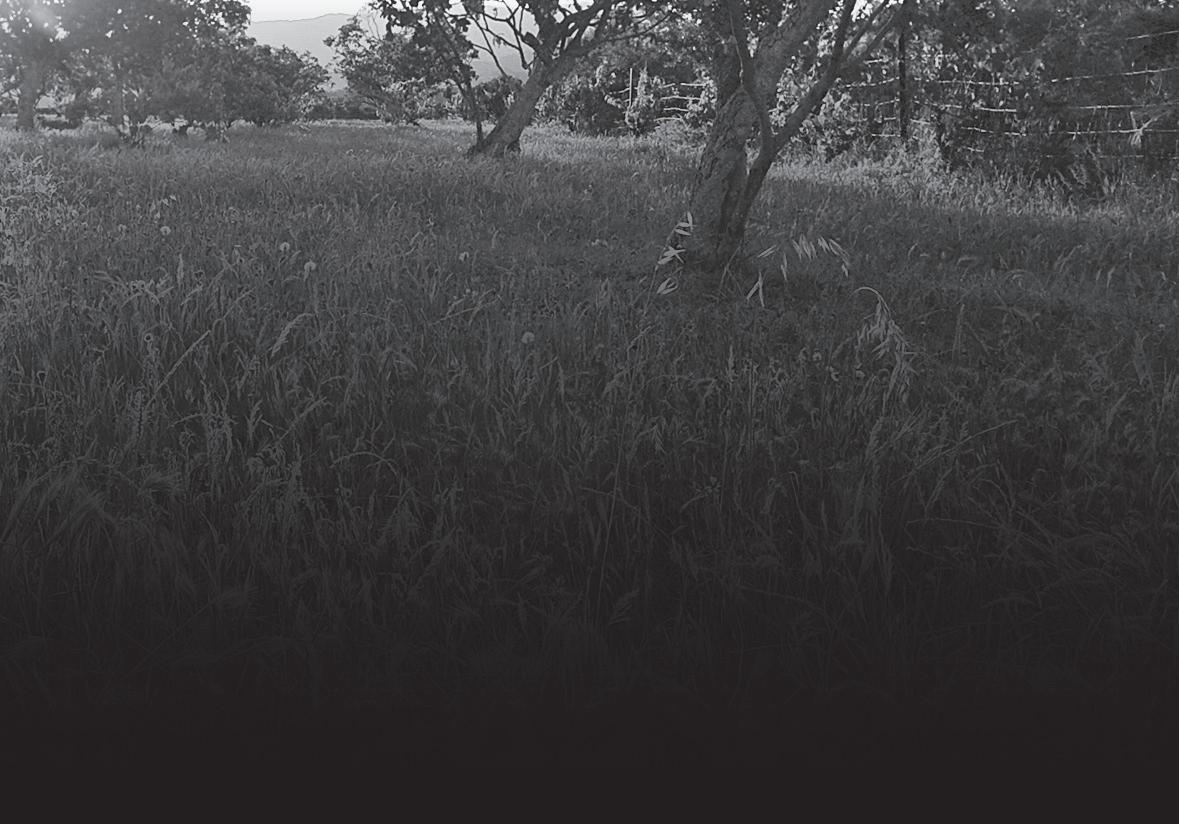




42 <> DECEMBER 2011 INDIAN LINK 1,000 hectare regional park ... 1,000 reasons to choose Bridge Inn Road Sales Office open 11-6pm 7 days. Regional Park “ “ While best endeavours have been used to provide information in this advertisement that is true and accurate, Oliver Hume Real Estate Group and related entities accept no responsibility and disclaim all liability in respect to any errors or inaccuracies it may contain. Prospective purchasers should make their own inquiries to verify the information contained herein. Call 9684 8119 or visit fairviewmernda.com.au Proudly marketed by Proudly developed by
ñ Gurpreet Bedi Dharitri 2300 (Dhana) Based on Lot 422 Kingview Place Package includes: • Fixed Site Costs • Carpets and Tiles • Concrete Driveway and Path • Light Fittings • 20mm Stone Benchtops to Kitchen • Window Furnishings • 30 Year Structural Guarantee • 18 Week Guaranteed Build Time 3 2 2 VASTU HOUSE & LAND FROM $398,800
I recently purchased a block of land on the Fairview Estate in Mernda. I think it is a great place to raise my family. We will be surrounded by park land and close to shops, schools and only minutes away from trains. My wife and I looked for a long time before we found Fairview and we are so glad that we waited, as we both feel that this is the place for us.


DECEMBER 2011 <> 43 INDIAN LINK
Moving on
Dealing with heartbreak can be an intense experience, but despite the roller coaster of emotion, it’s important to stay focussed and move on.
BY MINAL KHONA
The break-up of a relationship is always hard. Whether one parts amicably or there is always some baggage, several post-mortems and innumerable tears. At least for women, though some men do take a break-up really badly. Only their conditioning makes them suppress their emotions or drown their sorrow in work or alcohol.

Yet, it is imperative to pick up the pieces and try to move on, letting time do the rest of the healing.
After all, pepping yourself up and looking good can make you feel good about life again.
Spring-clean
A lot of us are the sentimental kinds, and if a woman is the one who’s been dumped, she tends to hold on to memories and mementoes, photographs and gifts, and get nostalgic about them. Though research shows that women recover faster, they are also the more emotional ones likely to hold on to memories. Well, the best thing to do is ruthlessly spring-clean. Chuck out all photographs of you and your ex, and if you have been gifted something expensive which you wish to hold on to, keep it in a place where you won’t see it daily. That way, after you are done recovering, you will unemotionally enjoy that gift without dissolving into tears. Of course, if you are holding on to something expensive out of vindictiveness and not returning it even though you have been asked to, it will not bring you joy.
Guys, if you don’t want another breakup, remember to chuck away all your exgirlfriend’s gifts and mushy love letters, or the next woman in your life will be throwing a hissy fit if she finds any of these lying around. Even if you don’t feel a thing for your ex and are not in touch with her, this scenario can blow up in your face.
When my marriage broke up, I chucked every single picture I had of myself and my ex-husband. I only held on to objects I had bought myself and it helped me heal faster because there was no knick-knack that reminded me of him.

Get gorgeous
Usually when a relationship ends, men go into Devdas mode, while women have crying bouts, eating binges and unending depression. The last thing on one’s mind is grooming and looking good. Men don’t shave, smoke and drink, brood endlessly and only open up to their closest buddies. Women will cry and let off steam with most of their close friends till they are over the crying and cannot bear to hear themselves
go on about the ex. Or if they meet someone else!
However, the important thing to remember is that no matter how tempting the urge to let yourself go, it is vital you look after yourself. So, if you have binged through your sorrow with food, stop! Get back into an exercise routine and lose the excess pounds. The endorphins that are released by the brain when you exercise will help you feel happy again.
Ditto for the guys, only don’t overdo the workouts, especially if you have not been working out for a while.
A change of hairstyle also helps, so whether you have long hair or short, get a new haircut, some highlights or a massage. Pamper yourself to feel good about you again.
Wardrobe makeover
Throw out old clothes or any that the ex might have given you, unless it is an expensive garment that you don’t want to relinquish. I have known women who have given away brand new, expensive, branded clothing in disgust after a break up with an unfaithful ex. A change in the way you dress will also help. So buy colours you don’t usually wear, experiment with different styles of clothing and get yourself a new wardrobe.
This works for guys and girls. A friend gave away new shirts, still in their packaging after his marriage broke up, as he wanted no reminder of his ex.
Change your status
With all these social networking sites letting you tell your life’s story by the minute to the world at large, ensure you change your relationship status on FB or any other site. Remove pictures of the two of
you together and let all your friends know you are not attached any more. This is to prevent awkward questions from someone who may not know you are single again. If a person of the opposite gender who you know has the hots for you, check them out. Don’t use them because you are on the rebound as that would be unfair, but do go for a coffee and see how you feel. Some people are willing to take it nice and slow so you never know, someone you have known for a long time may just be the right person for you.
Give yourself space
The universe has its own laws and until your mind and heart are empty, a new person will not be able to come into your life to fill that space. So learn to let go and get God! No matter whose fault the break-up was, tell yourself it was for the best, that the Big Guy in the sky knows what he’s doing, and that someone better will come along. Make yourself happy in small ways, pamper yourself, go for a walk on the beach, spend time with pets and plants, let time heal you. Avoid getting bitter about the past and whether you are sad, angry or calm, embrace every feeling and don’t suppress anything. Avoid getting addicted to any substance or habit, and be grateful for the small things in life. An attitude of gratitude helps one to be happy. And the moment you send out positive vibes into the universe, someone special will walk into your life.
If you are going through a broken relationship, keep these tips in mind as with Christmas around the corner, dealing with break-ups becomes much harder and you could feel lonelier than usual. Just be good and kind to yourself and let the universe do the rest.
No matter whose fault the break-up was, tell yourself it was for the best, that the Big Guy in the sky knows what he’s doing, and that someone better will come along.
44 <> DECEMBER 2011 INDIAN LINK www.indianlink.com.au RELATIONSHIPS
Chuck out all photographs of you and your ex, and if you have been gifted something expensive which you wish to hold on to, keep it in a place where you won’t see it daily.
Photo: www.thecollegecrush.com
To fear
BY ASHITA VADHER

Last month we explored beliefs and the part they play in our lives. Beliefs are the fuel for our fears, and being fearful is a natural feeling that occurs within us.
When fear is your friend
Fear is an emotional response to an actual threat that lives in the present, a fundamental survival mechanism that has served us well throughout human history.
Imagine you are walking along a dimly lit path and you spot a gang of drunken youths coming towards you. If you believe that you may be in immediate danger, fear tells you to get to a safer place so you cross the road, change direction or seek refuge in a nearby restaurant. Your fear will prompt the action to keep safe.
Once our ancestors saw a few friends and relatives devoured by tigers, fearing tigers became a default response. Nowadays we react in much the same way when faced with a car veering toward us or if someone is wielding a knife at us.
F.E.A.R mimics fear
We all feel fear when approaching something completely new in our lives. Think about all of the milestones in your life and how you felt at the time: your first day at school, the first time on an aeroplane, starting a new job or when you first met your life partner. These may well
or not to fear
have created the feeling of fear within you. Yet you still went ahead and pushed through your comfort zone.
So fear isn’t the problem - F.E.A.R is what keeps us from moving forward and prevents us from reaching our potential.
F.E.A.R. is an acronym for ‘False Evidence Appearing Real’. There’s no true threat of immediate physical danger, no threat of a loss of someone or something dear to us. F.E.A.R perpetuates anxiety which is like having your worry button jammed on the ON position. It is our limiting beliefs that cause F.E.A.R. For example, saying, “I’m too old to learn something new”. The limiting belief here is, “I’m too old”. Their F.E.A.R could be based on an event where they have struggled to grasp a new concept and have lost confidence in themselves. Would this make it difficult for them to move forward?


Absolutely!
F.E.A.R. is an illusion; something we fabricate in our own minds and pretend is real. It’s a story we tell ourselves that keeps us from being, doing and having what we really want.
People often think that fear prevents them from moving forward in life. It’s a simple mistake to make. It’s actually F.E.A.R that’s responsible for this. It can create the same emotions within the body such as a sharp rise in heart rate, an adrenalin rush and shallow breathing.
The brain thinks that F.E.A.R keeps us safe from danger, but it actually keeps us from achieving our potential by leading to procrastination.
F.E.A.R derails success more often
Deal with your F.E.A.R.
F.E.A.R can appear very real and can hold us back from what we want to accomplish. The moment we realise that it’s ‘all in our head’ and that we’ve imagined what is not real, we are able to move forward.
Are past failures real evidence that justify fear of future failure? Not in the least because, unless you keep doing the exact same thing over and over and expecting different results (one definition of insanity), you have no real evidence that your next approach will fail.
Learning from past failures should instead, provide evidence that the odds for success are now better than ever.
There are some who have never failed because they’ve never tried. They have zero real evidence of anything, so their chance of living the life they dream of is close to zero too.
Embrace your journey into the unknown
When you take risks without dwelling on specific outcomes, you will begin to start winning the game of life. Relish the journey. Who knows? You may end up somewhere even better than you’d initially hoped for. No matter what, each journey will teach you what you need to know in preparation for the next one.
“Do the thing you fear and the death of fear is certain!”, says Dr Norman Vincent Peale in his book The Power of Positive Thinking.
F.E.A.R holds us hostage in our comfort zones. By having the courage to understand and challenge it, we have the power to transcend it and push beyond the boundaries of all possibility.
The next time you find yourself frozen with F.E.A.R and unable to move forward, be aware that this is something you have created in your mind. It isn’t real. What is real is that you have reached the edge of your comfort zone. Reaching out beyond it may make your heart pound, make you short of breath and may compel you to run in the opposite direction!
Instead, acknowledge that it’s okay to feel this way. You’re about to learn something new and different. Know that this feeling is a signal for growth and step forward with courage towards the life you could only dream about before.
DECEMBER 2011 <> 45 INDIAN LINK
www.indianlink.com.au LIFECOACH
That is indeed the question as we distinguish between true fear and the false feeling which could dominate and restrict our potential
So fear isn’t the problem - F.E.A.R is what keeps us from moving forward and prevents us from reaching our potential
By having the courage to understand and challenge (F.E.A.R), we have the power to transcend it and push beyond the boundaries of all possibility
conundrum
As a newly arrived migrant finding the right job can become an ordeal, but here are a few tips to help you along the right path
BY JUZER PENDI
Year after year, thousands of migrants leave the portals of their home country to come to Australia. Their dream of entering a western country finally fulfilled, they feel that living here will now give them the resources to quench their career aspirations as well as personal goals. But it is only when they start looking for employment that they realize that the qualifications/ experience/skills acquired back home leave a lot to be desired and do not carry the same relevance as was the case in their country of origin. They slowly realize that there exists a sea of difference between the Australian employers and their bosses back home.
Do your research
One of the most common statements that one hears is, “Mate, you do not have any local experience” or, “You are over-qualified”. So how does one counter such statements? One way would be to start working on a voluntary basis to get the local experience/reference, or be prepared to initially work at a lower level than that of your existing skill set. For instance, a person who has worked in a managerial/ executive/supervisory position back home might have to start work as an operator or a process worker before proving one’s skills. Here in Australia, one has to prepare a resume that matches the employer’s requirements. For instance, an individual applying for the position of a process worker need not project all his/ her academic accomplishments. Thus, it is imperative to research the position thoroughly before applying for the job. This could help one avoid having to hear the same repeated comments relating to being over-qualified or over-experienced, and would probably gain a better response from prospective employers.
Gain local experience
Another problem that confronts new migrants is the lack of local references. Most employers

MATRIMONIALS
SEEKING BRIDES
Alliance invited for 30-year-old well-settled Hindu boy. Fair, handsome, 5’9”, computer engineer, working in Sydney, Australian PR. Looking for well-educated, working girl with family values in Australia. Contact 0418 160 054, or email sktipu786@gmail.com
Seeking suitable Australian resident girl for 29 years 6 ft tall, handsome, Gupta boy, well educated, MBA (Marketing)/ Hotel Management, Specialization in food production. Presently working as Senior Quality Analyst, IBM India. Only son of senior government executive. Boy settling in Sydney for business, family in Sydney, early marriage, serious proposals only. risrrrgupta@yahoo.com. au 0434 550 109.
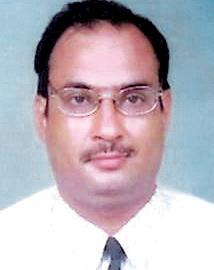
from Australia are unwilling to accept references from one’s country of origin, and rely only on local references. This is why, when embarking on a career in Australia, doing casual work from employment agencies can prove to be very helpful and serves as a vital reference source. There are plenty of agencies such as Manpower placements etc., who are willing to hire workmen for casual jobs. Working with such companies enables one to start earning to meet day-to-day expenses.
Plan your CV
We have to appreciate the fact that one’s resume is the first point of contact with a prospective employer. In fact even in professional jobs, accept that even if as an employee you have a lot of academic qualifications and experience, the employer is not liable to pay you a higher salary, as may be the case back home. Ideally a candidate’s CV should indicate the last 10 years of experience, as this may be most relevant for an employer.
Many migrants find jobs in call centres as well as in customer service by joining Woolworths, Coles etc. For any kind of job, one’s interpersonal skills as well as communication skills are important. These kinds of jobs go a long away in improving the individual’s communication skills and their overall presentation. Another area that many migrants find very handy in getting casual jobs with ease is security. Getting a security license is good, even after one is reasonably settled in a job and especially if you need some extra money. In fact people who have lost their regular jobs have now made a career in security, as it offers a good source of income.
may be advisable to take up courses from TAFE and other colleges which will go a long way in improving the career prospects of the candidates. IELTS coaching can be obtained from institutes such as the UTS as well as from private tutors who advertise.
This is why, when embarking on a career in Australia, doing casual work from employment agencies can prove to be very helpful and serves as a vital reference source.
Local
qualifications help Remember, academic qualifications and experience may not have the same weightage as back home. Upgrading one’s qualifications to Australian standards is extremely important. For medical professionals such as doctors, dentists and pharmacists, qualifications need to be upgraded based on the requirements of the council or the board. Higher scores in exams like the IELTS have now been stipulated, following
SEEKING GROOMS
Seeking suitable alliance for Ramgarhia Sikh, 30 year old, 5’2”, very beautiful girl, born and raised in New Delhi with Indian values, from a very well settled family in India. Eldest sister married and well settled in Sydney. Highly qualified with a couple of masters degrees, completed CA from ICWAI and working with a top prestigious firm in New Delhi. Seeking professional, well-educated match with good family background. Early marriage. Caste no bar.
Contact: 0403 421 720 or email: kitty.80@live.com
35years, 5’7” post graduate diploma in advertising, holding PR visa and currently working in Sydney. Looking for well-educated boy from well-settled and educated family with liberal and supportive values. She loves to socialize and wishes to be working professionally
Unfortunately many migrants end up in a profession that is completely different from their original one, sometimes even choosing a profession that could have been unheard of in their earlier career pathway. However, one’s perseverance and ability to fight the situation counts for a lot. Balancing between continuing one’s education and employment becomes a tough ordeal. Many migrants end up driving taxis for the rest of their lives and sometimes the money made is too tempting for them to give up this profession. However, if a migrant is mentally tough and willing to go that extra mile, they will succeed. And these ones who succeed go a long way in their careers.
So don’t give up hope easily and strive for what you believe in.
with healthy balance between family and work. Please email profile and photo to smk3005@hotmail.com
Seeking suitable groom for doctor 36 years/ 165 cm. Punjabi parents but brought up in south India. PR, working in Sydney for 5 years. Moderate values. Caste no bar. Contact: 0469645127 or cham1948@gmail.com
Seeking a suitable match for Goyal girl, fair, 27/5’3”, Anshik manglik, Delhibased girl from cultured, well-educated family, MA in English DU, working as an editor with a publishing house. Contact 275601560/9999132788, or email subodhgupta1939@gmail.com
Seeking professional qualified match for 31 year old affectionate, homely, Punjabi
Unfortunately many migrants end up in a profession that is completely different from their original one, sometimes even choosing a profession that could have been unheard of in their earlier career pathway
girl. Highly educated with double MBA, couple of masters degrees from Delhi, India. Working at higher management position in big MNC in New Delhi. Father Director of Engg. College in India. Eldest sister married and well settled in Sydney. Looking for boys aged around mid 30s . Caste no bar .Interested send bio data along with recent photograph to email kitty.80@live.com
Seeking a suitable match for 5’ 7”, slim, vegetarian. Hindu Punjabi khatri girl. Born May 1979 UK (citizen), Australia (permanent resident). Father retired, mother working parttime in govt job, one brother (all in UK) and one sister (married and settled in Australia). Currently Pharmacist in UK (but would prefer to settle down in Australia).
Contact redvanilla101@hotmail.com
46 <> DECEMBER 2011 INDIAN LINK
www.indianlink.com.au NEW AUSTRALIANS
Career
Ezeego1 – your one-stop online travel shop
Ezeego1, India’s biggest online travel bazaar, is now up and running in Australia. Backed by Cox & Kings, the world’s longest established travel company, ezeego1.com.au makes it easy to organise your entire holiday in one place, including flights, accommodation and touring packages. Travellers can use ezeego1.com.au to find the cheapest flights within Australia and around the globe. The innovative central booking system scans a vast array of low-cost and full-service carriers and lets you compare prices across airlines with a single click. So whether it’s a weekend break in Brisbane or a trip home to Hyderabad, ezeego1 has a great-value airfare for you.
Ezeego1 customers can choose from over 500,000 hotels around the world, including more than 5000 in India. Ezeego1’s accommodation ranges from cheap and cheerful hostels to ultra-luxury resorts, all at extremely competitive prices. Each property in the ezeego1 hotel database includes an in-depth description with photos and a list of nearby attractions, making it easy to find the perfect accommodation for your needs.
If you’re looking for a hassle-free holiday, ezeego1 can help. The website offers a huge selection of holiday packages and tours in India and around the world. Historical tours, beach breaks, romantic getaways and fun-filled family adventures – ezeego1 caters for everyone and can even customise a holiday to meet your needs, budget and special interests.
India’s immense diversity makes it the perfect place to travel at any time of year. One of ezeego1’s most popular Indian destinations is Kerala, where you can visit wildlife sanctuaries and tea estates, marvel at Chinese fishing nets and historic Jewish communities, soak up the sun on superb beaches or enjoy a cruise through the tranquil backwaters on your own private houseboat.
Colourful Rajasthan is the perfect place to experience the splendour of India’s royal past. Ezeego1’s holiday tours in Rajasthan let visitors explore spectacular forts and palaces, witness the region’s fascinating folk dances or head into the dunes on an unforgettable desert safari. For a taste of the best that Northern India has to offer, take a look at ezeego1’s famous Golden Triangle package. This enchanting journey takes in Delhi’s historical highlights, the pink city of Jaipur and Agra’s breathtaking Taj Mahal.
Need some help with your booking? Ezeego1’s knowledgeable staff are available to assist at all times. You can chat online with a destination expert at ezeego1.com.au or call the customer service centre 24 hours a day, 7 days a week. Ezeego1 staff members speak a wide variety of languages including Hindi, Marathi and Gujarati.
Of course, ezeego1’s first-rate service doesn’t stop once you step on the plane. If you have any problems at all on your journey, you can simply text ‘SOS’ to ezeego1’s emergency contact number. Within 15 minutes, a customer service executive will call you back anywhere in the world to assist you.

Ezeego1 –your onestop online travel shop
DECEMBER 2011 <> 47 INDIAN LINK
Start browsing ezeego1’s range of discounted travel today at www.ezeego1.com.au or give their customer assistance team a call on 1300 836 765.
Cool Christmas
BY CANDICE HENRIQUES
Living here in Australia, Christmas is usually sunny and bright, half the globe away from the concept of a traditional ‘white’ one, epitomized through movies, books and living in the northern hemisphere. I like the idea of sunshine during the festival season, as the whole country slows down to relax with beer and barbies. So this year for a change, instead of making our Christmas buffet as traditional as it was back home with vindaloo, spicy curries and rich pulaos, I’m looking at a nice, relaxed Aussie Christmas. After all, it’s been a tough year. Here are some recipes that are light and easy to compliment the sunshine, quick and fresh to prepare and most importantly, delicious! They’ll make your X’mas buffet a summer wonderland of goodwill and cheer.
This Christmas spread will perfectly compliment your tray of home-made rich fruit cake and sweets. And just to add that additional touch of tradition, I think I will add vindaloo, after all!
Watermelon Salad
½ kg seedless watermelon
½ cup flaked toasted almonds
75 gms fresh fetta crumbed
¼ cup mint leaves
For the dressing
1 tbsp balsamic vinegar
1 tbsp red wine vinegar
2 tbsp extra virgin olive oil
Salt and freshly ground pepper to taste
Cut the watermelon into even cubes and place in a large bowl. Crumb or cube the fresh fetta cheese and add it to the mix.
Add the flaked toasted almonds and mint leaves and mix gently. Refrigerate. Just before serving, drain out any watermelon juice from the bowl. Next, mix the dressing ingredients thoroughly and pour over the salad, taking care to mix gently. Add salt and pepper according to your taste.
Remember to add the dressing just before serving, or the salad may become too watery.
Couscous charm
250 mls vegetable stock
175 gms couscous
1 red onion, thinly sliced
½ cup coriander, coarsely chopped
½ cup parsley leaves, coarsely chopped
250 gms diced and deseeded tomatoes
3 tbsp lemon juice
4 tbsp olive oil
Salt, fresh ground pepper to taste
Heat the vegetable stock until warm, then stir in the couscous until fully mixed. Turn off the fire, leave to stand for 30 minutes. Fluff with fork, then leave to cool. In a large bowl, mix the sliced onion, chopped herb, diced tomato, lemon juice and olive oil. Stir in the cooled couscous, mixing thoroughly. Add salt and freshly ground pepper seasoning according to your taste just before serving, mixing thoroughly. Instead of couscous, you can also prepare this dish using bulgar wheat.
Cheerful Christmas cookies
50gms butter
1/3 cup sugar
2 whole egg yolks
1 tsp vanilla extract
Zest of half a lemon
Zest of half an orange
½ tsp lemon juice
2 cups all purpose flour
For the decoration
Candied cherries (red and green), cut in half
Grated or rough crushed cashew nuts (or any other of your choice)
Green/red food colouring
1 egg white, well beaten
Sift the flour and keep aside. Cream butter and sugar together till fluffy. Next, add the egg yolks, vanilla extract, zests of orange and lemon peels and lemon juice, mixing until well combined. Add flour slowly to the mix, until it forms a soft dough mix. Place this dough in a ziplock bag, and refrigerate for an hour or until firm. Preheat the oven to 200 degrees (180 for fan-forced), and roll the dough into small, even sized balls. Divide these into four portions, place halved red and green candied cherries on the top of the dough, gently pressing to flatten down. Set on cookie tray lined with baking paper. For the rest of the portions, dip the top half of the uncooked dough balls first into the beaten egg white, then into the green food colouring, and into the crushed nuts. Gently flatten down each onto the baking tray. Repeat the same procedure with red food colouring.
Bake the cookies for about 20 minutes or just before they begin to brown. Remove from the oven, cool on a wire rack and they are ready to serve. You can tell when cookies are done by checking the underside which should be a golden brown. To make the cookies more interesting, use Xmas-shaped cookie cutters.
Chicken ragout
350 gms chicken breast, cut into 1” strips
1 large onion, finely sliced
1 medium tomato
3 garlic cloves, finely minced
1 tbsp grated ginger
2 green chillies, slit horizontally
1 cup mushrooms, finely sliced
½ each bell peppers (green, yellow, red, orange), finely sliced
4 tbsp olive oil
6-8 whole peppercorns
1 tbsp soy sauce
1/3 cup roughly chopped coriander
Salt to taste
Heat the oil in a large kadhai or frying pan, add peppercorns and fry for a minute. Next, add ginger, garlic, slit green chillies and fry for a minute. Add finely sliced onions and tomato, and fry for about two minutes, until the onion softens and becomes aromatic. Add the chicken breast to the mix and fry for about five minutes or until the chicken is fully cooked. Next, add sliced mushrooms and bell peppers and stir fry on high heat for two minutes. Finally, add soy sauce, taking care to mix well. Add salt, taking care to taste the dish, as some soy sauces are quite salty. Further cook for 2-3 minutes, until well mixed; garnish with chopped coriander and serve hot.
This dish works well as a filling for wraps, so serve with either chappatis, paratha, pita, Lebanese bread or burritos.
Salmon sunshine
250 gms tinned or fresh salmon
2 roma tomatoes, cubed
2 large red onions
½ cup mixed fresh herbs (parsley, rosemary, thyme)
1 large pinch Italian herbs
1 tbsp olive oil
For the dressing
1 tbsp balsamic vinegar
1 tbsp red wine vinegar
2 tbsp extra virgin olive oil
Salt & pepper to taste
Cut the red onions into cubes, sprinkle with the Italian herbs and bake in a moderately hot oven for 10-15 minutes. Remove and set aside to cool. In a large bowl, place the fresh herbs and cubed tomatoes. Add the salmon, broken into smaller pieces. Next, add the baked onion pieces. Mix the dressing ingredients together and pour over the salad, taking care to mix well. Serve fresh.
Quick quiche
300 gms potatoes
1 tbsp olive oil
1 sheet puff pastry, thawed

2 extra tsps olive oil
1 small onion, finely cut
2 small cloves garlic, finely cut
3 rindless bacon rashers
80 mls milk
80 mls cream
2 eggs
25 gms grated mozzarella cheese
Peel and coarsely chop the potatoes and place them with 1 tbsp olive oil in a baking dish. Roast uncovered for 30 minutes in a moderately hot oven until browned lightly and cooked thoroughly. Cut puff pastry into four squares, pressing each into four shallow quiche pans or baking dishes. Place all on oven tray and bake for about 10 minutes. In a separate pan, heat two
tsps olive oil and sauté the onion and garlic for 2-3 minutes. Cut the bacon finely, add to the pan and cook well until the bacon is crisp. Drain on an absorbent kitchen paper towel to remove excess oil. Divide potato mix among pastry shells, topping with the bacon mix. Combine milk, cream, eggs and cheese in a separate dish and add this mix to each of the dishes. Bake uncovered for 30 minutes or until the quiche filling sets. Remove carefully and serve hot or cold.
Mango mousse finale
300 mls fresh mango pulp
1 mango skinned and deseeded 200 mls cream
1 tbsp gelatine
2 tbsp warm water
½ cup castor sugar

2 eggs, whites only
Sprigs of mint for decoration
To make mango pulp, blend the flesh of two medium sized mangos into a smooth pulp. Add the sugar to this pulp and keep aside. Add the gelatine to the warm water and stir till fully dissolved. After cooling, add this to the mango pulp mix. Chill in the fridge. Next, whip the cream until thickened, and fold into the semi-solid chilled mango pulp mix. Add the chopped mango. Beat the egg whites until they are stiff and form peaks, then fold into the mi. Place portions of the mix into dessert bowls and leave in the fridge to set. Serve chilled, with a sprig of mint.
To make an adult version of mango mousse, add 3-4 tbsp of white rum or vodka to the mix.
48 <> DECEMBER 2011 INDIAN LINK
www.indianlink.com.au
When in Oz, do as the Aussies do, especially when it comes to the festive season!
FOOD
You Tarot ‘n’ You
predictions
ARIES March 21 - April 19
As the year comes to an end you are feeling a lack of energy and enthusiasm. The cards are also indicating some burdens surrounding you at this time. You are doing a lot of thinking and worrying. Mid December is a good time to get everything done and new challenges taken on. Love will cause some anxiety. Money is being shown as coming in but there will be some unexpected outgoings. Try and keep yourself away from any petty arguments.
TAURUS April 20 - May 20
Tarot indicates some stress around relationships. You are also feeling that your efforts and hard work are not being justly rewarded. Take care with your health and financial matters as you seem to be spending a little more than you should be. Money owed to you should be returned this month. However, it is a good time to plan ahead with ideas you have been putting off for some time now. Take care at sport, you may suffer an injury.
GEMINI May 21 - June 20
The cards indicate a time of positive changes in your love life and all relationships. Be careful of flirting and getting into a situation that you do not want. You have some upsets in your current partnership that need to be addressed. There are new opportunities around work and career. Financially you are being a little more careful then you have been in the past and trying hard to save money and not buy unnecessary items. Take care of your back.
CANCER June 21 - July 22
You have been doing a lot of thinking about life and which direction you want to go in. Be aware that stress is indicated up to mid December. Work will be demanding. Try not to lose your temper with colleagues who are not always cooperative. If you have children you may find that there will be some unexpected problems but nothing that you will not be able to sort out. There may be some eye problems - be cautious healthwise.

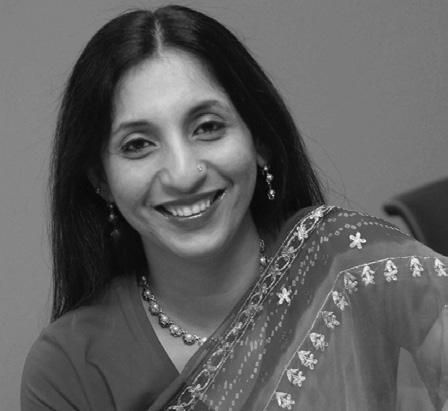
LEO July 23 - August 22
Wow, what an exciting time is coming up for you - you will feel unsure which way to turn, there’s so much going on! Be careful of petty arguments with family members and keep control of your emotions and temper. You have made some financial commitments that need to be addressed. This is a positive time of changes and decisions around you. You may be thinking of purchasing a new car. As well, love is in the air for you!
VIRGO August 23 - September 22


This month sees you on the path of self development. You will feel like withdrawing from friends and family to introspect. Do so by all means. You are thinking about an old lover and the cards indicate a time of decisions. You may even think of moving house. Your energy is high so use it wisely and concentrate on what you really want to achieve in life. Things are changing around you, now it is time to make firm decisions.
LIBRA September 23 - October 22
Tarot foresees some major changes in your life and circumstances. You have been putting off some decisions but need to take a look at your life and turn things around. You hold the key now. The cards are also indicating a time of growth and promotion at work. If you are looking for work this is a great time to find suitable employment. Love is not your priority, making money and stability are. Travel is also on the cards.






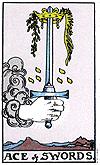



SCORPIO October 23 - November 21
You have been putting a lot of energy into your family and building relationships. Things have not been easy on the work front but you have been making good progress. There may be a strong desire to change your current job but think about speaking to your superiors first. Financially there will be some good news regarding a small business you are planning to start with a friend. Take your egos into consideration. This will be a good money earner.

SAGITTARIUS November 22 - December 21
Feeling a bit demotivated? Want to bury your head in the sand? Don’t worry, it will pass. Opportunity lurks around the corner. Tarot suggests there’s a possibility of a new job, in a management or larger role than before. Financially, you have been trying to save but you have overspent on your special someone and are now feeling a little upset at their non-appreciation. Perhaps it’s time to look after your own needs first, and that includes your health.


CAPRICORN December 22 - January 19
This month sees you feeling energetic, and your enthusiasm is growing with regard to plans to start working on new ideas and projects. The cards suggest that your love life is not giving you what you want right now. Health will be up and down but you need to make sure that you keep yourself free from stressful situations. Take care. There are travel plans – perhaps even a change of city or country. This is a time of major changes.
AQUARIUS January 20 - February 18
You are doing well at work and Tarot says you will be impressing all the right people. There are some small problems with family and relationships but you will sort things out favourably. You need to act with diplomacy and tact right now. A child may cause concern and you will have to be firm to effect behaviour change. There could be news of a pregnancy or a wedding in your circle. A long lost friend may contact you.
PISCES February 19 - March 20
This month sees you looking at mediation and spirituality in a more serious way. You are feeling very peaceful and want to make changes in your life. The cards are also indicating that you are going through a time of great highs and work will also be on the up. If there is a legal battle around you rest assured that things will come to a mutual agreement soon. Look after your body too – keep up that exercise and watch your diet.
DECEMBER 2011 <> 49 INDIAN LINK
STARSFORETELL
By NANCY JADE www.nancysood.com
Tarot predictions for February 2010 Tarot ‘n’
www.indianlink.com.au
Tarot
for DECEMBER 2011 Tarot
BUZZThe
Freida Pinto’s prowess as an international actress seems to be reaching new heights. Recently

Michael Winterbottom, director of Trishna, an adaption of Thomas Hardy’s novel Tess of the d’Ubervilles, said he would have “begged” the Indian actress to play the lead role in his movie.
“Luckily she agreed to do it,” the acclaimed filmmaker said. He explaining that he chose Rajasthan for the shooting of Trishna as the plot of Thomas Hardy’s novel set in 19th century England was based on a rapidly-developing landscape. The film was screened at the 42nd International Film Festival of India (IFFI) in Panaji, Goa and will be released globally by mid next year. Winterbottom has directed films like the Angelina Jolie-starrer The Mighty Heart and the Kate Winslet starring period film Jude, so with Trishna, Freida moves up into the big league. Well done Freida, make us proud!
Bollywood’s golden era on small screen

For script writer-lyricist Javed Akhtar, it’s a fantastic opportunity, and one that’s just up his street. He has been commissioned to chronicle the life and times of some of Bollywood’s greatest luminaries, from Raj Kapoor, Nargis, Kishore Kumar to Majrooh Sultanpuri, Bimal Roy and Vijay Anand. Thirteen of Bollywood’s golden era actors will feature in a new TV show called Classic Legends.
Akhtar will take viewers on a guided journey through the success stories of these stars, featuring some of their most iconic movies and music, a role about which he is understandably upbeat. “These are the people who I admired when I was in school and college,” Akhtar said recently. And when you idolise someone, you want to find out more about them. I used to do just that as a young fan”.
“As it is, I like talking to people about people, and here, for this show, I was being paid to do that. What better opportunity could I get?” he quipped.
Other icons whose life story will be depicted include R.D. Burman, Ashok Kumar, Sahir Ludhiyanvi, Mehboob Khan, Madhubala, Guru Dutt and Shammi Kapoor.
The 66-year-old writer said with passion, “Indian cinema has a wonderful heritage. It would be really sad if people forget it.
Freida is Trishna
ABHILASHA
of Noyce’s retrospective. He also wielded the megaphone for popular films like Angelina Jolie starring Salt, The Bone Collector and Val Kilmer’s The Saint. Now we can’t guarantee the enthusiasm of Australian and Pakistani film financers, but all Noyce needs is one of Bollywood’s big guns to hear his plea, and his dream will become a blockbuster reality.
Big B’s at it again
Megastar Amitabh Bachchan is known for his charitable works, and the latest venture will be a charity concert to raise funds to help the families of police officials killed while serving the country. Bachchan, who lent his baritone voice for the album Sounds of Peace, is planning a charity concert.
“There will be a concert in a couple of months and all those that contributed to the album Sounds of Peace shall perform for the charity,” the 69-year-old posted on micro-blogging site Twitter. The actor lent his baritone voice for the album, launched by music composer Aadesh Srivastava on the third anniversary of the 26/11. Sounds of Peace is an initiative that talks about peace and co-existence of all communities. Akon, Ustad Rashid Khan and Wyclef Jean, all lent their voices for the album.
“It is quite remarkable that Aadesh has been able to convince stalwarts such as Akon and VanCleef and the London Philharmonic Orchestra to lend support and talent and creativity to this music concept,” Big B posted on his blog bigb. bigadda.com.
And these are stories of 13 people who started from almost nothing and gained so much success through the years.” He avers that the stories show hope and optimism, and convey that anything can be achieved in life with willpower and persistence.
Akhtar, father of new-age filmmakers Farhan and Zoya, feels people must not forget that they will be remembered for their success only till their success lasts, but what will keep them alive is their work like the 13 legends whose lives he will document.
Akhtar will also weave in his personal experiences with most of these icons to make the narrative more interesting and engaging. A true tribute indeed to the cream of Hindi cinema.
Let’s make a cricket movie!
…says Australian film great Phil Noyce, a
self admitted cricket buff and renowned director. “The world has suffered from fewer films being made on cricket,” stated Noyce, adding that he’s keen to make an India-Pakistan-Australia co-produced cricket film “if the money permits.”
Noyce has been honoured with a retrospective at the 42nd International Film Festival of India (IFFI).
“We need to make more movies on cricket. The shine of the ball, the texture of the pitch, the swing, the strokes, all need to be captured in films,” Noyce said, well-aware of the global appeal such a coproduced movie would have as all three teams are known for their intra-team rivalry.
Noyce is best known for a bouquet of films including The Quiet American, Clear and Present Danger, Dead Calm, Newsfront and Back Roads, which also form a part
“The charity shall be for all those police families that lost loved ones, who have no means of existence - ignored and forgotten. Men from the forces, who sacrificed their lives so we could live peacefully. Tremendous courage and duty towards
GUESS WHO
INDIAN LINK
ENTERTAINMENT (Find the answer under Caption Contest)
SENGUPTA brings us up-to-date on what’s hot and happening in Bollywood
?
star just
well-known in the south as in Bollywood
Eighties’
as
50 <> DECEMBER 2011
their vocation,” he said.
“...And our thoughts and prayers go for all those families of the force who gave up their lives so we could live in peace,” he posted.
It can only be the Big B – bless him!
A big hand to ‘Bombaat Balan’
When Vidya Balan found that she had been rechristened ‘Bombaat Balan’ by her fans after her role as Silk in The Dirty Picture, she thought it was quite funny. But now that the moniker has become so popular, she’s grown used to it, confided the actress in an interview.

For most fans, the idea of watching Vidya in the smooth, sexy avatar was a bit of a shock, particularly after her graceful and classy roles in Parineeta and Paa. However, playing a sex symbol in Milan Luthria’s film wasn’t a cakewalk. “Silk has been an extremely demanding, exhausting, tiring and yet very fulfilling and exhilarating role for me to have played,” admitted Vidya, 32, who plays an actress of the 1980s and 1990s in The Dirty Picture which releases in the first week of December.

“Films in those times were full of masala and entertainment. Songs and dance used to start at any point in the film amidst pots, colours and oranges. I have done all that in this film, so all my wishes are fulfilled,” she added.
Vidya will be seen romancing Naseeruddin Shah, Emraan Hashmi and Tusshar Kapoor in the movie, and that’s quite a list! And despite having played a woman who oozes sensuality and mouths expletives in Ishqiya more glamourous role in Heyy Babyy and Kismet Konnection, her fans liked her more in films like No One Killed Jessica
So we just have to wait and see how they’ll react to Bombaat Balan. Luckily there’s not long to go…
Bandra Bandstand to house Bollywood Walk of Fame

Bandra Bandstand is almost a tourist destination for visitors hoping to get a glimpse of Bollywood’s rich, famous and eccentric. Home to some of the biggest names in the industry, Bandstand has been a jogger’s delight, a hangout spot and a lovers’ point for years. But now it takes on a new and significant avatar as Bollywood’s Walk of Fame as the street will be adorned with the hand imprints of popular living legends like Amitabh Bachchan and Shah Rukh Khan – a desi imitation of Hollywood’s famous Walk of Fame.
Bandra is the home of a host of actors like Shah Rukh, Salman Khan, John Abraham, Shabana Azmi and Rekha, and by adding celebrity tiles at Bandstand Promenade, it is likely that the number of visitors will increase. The project has been planned for six months now, and is a tribute to actors who have contributed their significant bits to Bollywood. The Bollywood Walk of Fame will be ‘different’ from big sis Hollywood
as actors will have brass hand imprints instead of stars. When the imprint is ready to be placed on the street, the star will be invited to place it in the right place. It is hoped that about 60 tiles will be placed within the first year of the launch, which is due around January 2012.
Well, at least Mumbai will have an official reason to crow about being the home of Bollywood. And Bandra Bandstand will prove it!
Sonam is special, says Shahid
Fans are keeping their fingers crossed that romance may find its way back into actor Shahid Kapoor’s life, particularly since he came out in effusive praise for his Mausam co-star Sonam Kapoor, calling her “special”.
“I think Sonam is a wonderful looking girl and she looks very simple and innocent. This is the reason why dad (actordirector Pankaj Kapur) was keen to cast her in Mausam. In her upcoming film Players, she looks wonderful. I think she is always a special actress because I did Mausam with her which was special to me,” said Shahid recently. No wonder the buzz around Bollywood was that Shahid carries a torch for Sonam. The 30-year-old actor has been single since breaking up with Kareena Kapoor in 2007, and has been party to various link-up rumours, all of which sizzled out. Some reports even claim he is commitment phobic. But the actor responded, “No, I am not commitment phobic. I don’t react to most things.”
Shahid has hits like Vivah, Jab We Met and under his belt, but he has had only one release in 2011, showing a selective streak in his choice of movies. But he’s working in Kunal Kapoor’s film Teri Meri along with Priyanka Chopra and Prachi Desai, so we should see more of the youthful-looking actor. At least it’s a relief that he’s working with actresses other than

Comeback’s not easy, discovers Raveena
When Raveena Tandon decided to return to Bollywood after a sabbatical following marriage and kids, she didn’t quite envisage that it would be so difficult. The actress is finding it difficult to maintain a balance between her personal and professional life, so she considers her own limitations when selecting roles. Raveena will be making a full-fledged comeback in soon to be released Gin Liya Aasman, and is currently shooting in Pune. “Love to work again, keeps me alert and positive and functioning, but don’t know if I’m ready to give in to long hours. Difficult to balance sometimes, love my work, but I realise I have my limitations. Wanna be home more...luckily it’s my choice, and I can choose,” posted the 37-year-old on micro-blogging site Twitter. She misses her kids, but will have them joining her on weekends, added the actress.
Raveena married film distributor Anil Thadani in 2004 and they have two children - six-year-old daughter


Rasha, and three-year-old son Ranbir.
Directed by Rishi Deshpande and produced by Mudassar Aziz and Anil Bohra, Gin Liya Aasman is the story of a six-year-old boy whose father, a naval officer, has been missing since a plane crash. Raveena, who plays the boy’s mother, was touched by the storyline saying, “Very sweet story, deeply moved when I read it.” With her real-time experience, you can bet Raveena’s do a great job.
NATIONAL EDITION www.indianlink.com.au CAPTION CONTEST Answer to GUESS WHO? SmithaSilkasBalanVidya What’s the chitchat here between Shahid and Sonam? Send in your responses to info@indianlink.com.au and win a surprise prize Last issue Caption Contest winning entry Divya wins a double pass to TheDirtyPicture Salman: I will imitate your every gesture, Sunjay Bhai. Sunjay: Sun lo, bhailog, I’m still cool at 55. Divya Keshav (Hornsby Heights NSW) What’s the chitchat between Sunjay Dutt and Salman Khan?
JAVED AKHTAR
VIDYA
SHAHID KAPOOR
DECEMBER 2011 <> 51
RAVEENA
Cine Talk
Put your hands together for desi boys
Film: Desi Boyz
Written & Directed by:
Rohit Dhawan
Starring: Akshay Kumar, John Abraham, Deepika Padukone, Chitrangda Singh, Anupam Kher
Boys bonding is a great subject for comedies.
Tarun Mansukhani tried it in Dostana. Debutant director Rohit Dhawan gives a far more blithe and effervescent spin to that thing called friendship that makes us do all kinds of weird and wonderful things. Sometimes in tandem.
Desi Boyz is a very entertaining yarn about two guys in Britain taking on recession with a bit of naughty moonlighting as gigolos. Or, as brothel-chief Sanjay Dutt (who comes in to the strains of Nayak nahin khalnayak hoon main, a la Ra.One) describes it, Jerry (Akshay Kumar) and Nick (John Abraham) are in the business of making women smile.
Desi Boyz goes beyond the fair sex. It makes everyone smile most of the while. The editing (Nitin Rokade) is seamless, bringing together the four principal actors’ individual charms
into a collective space without crowding the canvas. To their credit every principal actor, and that includes Anupam Kher (playing Deepika Padukone’s zany dad) and Omi Vaidya (as her wimpy fiancé), seems to get into the film’s vivacious frothy mood without letting the dark underbelly of the film be squandered in frivolity.
Remarkably the film’s light crisp upper-crust secretes a hard sombre bedrock of truth about how tough life can get in a super-competitive society where keeping up appearances can also mean looking your best after being told you’ve just lost your job.
Devastation is no reason for cosmetic bankruptcy. Among this film’s many virtues of being an engaging rom-com is its unmistakable glamour. The four main actors have seldom looked so fetching. Is it the camera (N. Natarajan Subramnaniam), the lighting and the choreography, all first-rate, or is it something more? The sheer pleasure that the actors derive in getting into the mood of an intelligentlywritten comedy is palpable, almost every step along the way. You can’t miss the pride in playing a part in a parody that never plays dumb. The narration moves effortlessly even while negotiating the highly filmy episodes. There is a heart-wrenching orphaned little boy (Virej
Dasani, adorably cute) who needs a home with his bankrupt uncle (Akshay Kumar) badly. In movies of yore the heroines would perform mujras in kothas to preserve the sanctity of their family values. Here the boys strip and dance for their recession-hit lives.
Admirably Rohit Dhawan’s screenplay turns the men into sex objects with comic candour and without a trace of self-consciousness. Not that the women are any less attractive to the eye. Deepika Padukone has not much to do, and Chitrangda even less. The latter gets to play strip poker during exam revision with her ‘student’ Akshay Kumar.
It’s a brilliantly written scene full of tantalizing possibilities.
Desi Boyz has ample room for skin-show and cheesiness. It goes for the skin with elan and avoids the cheesy ramifications by simply turning away from double meanings (the director Rohit’s father David Dhawan’s forte). Yes, there’re phallic references and mischievous whispers but the overall impression is that of a class comic act, a sumptuously-mounted sex comedy, no pun, but plenty fun, intended.
The songs (Pritam) and the choreography remain true to the film’s entertainmentquotient. And the performances are a delight.
Deepika has just a couple of scenes to sink her teeth into. She’s a delight in the sequence where she tries to win John back from a Caucasian diversion in a pub. Chitrangda’s sexy teacher act echoing Sushmita Sen in Main Hoon Na, shows her taking full charge of the commercial language. She smoulders.
John Abraham has hardly ever been seen having so much fun. Though his dancing is still lumbering, this ranks as his most watchable performance since New York. And Anupam Kher as his father-in-law-to-be brings a queer blend of a 17-going-on-70 boy-man to his patriarch’s part. But the film finally belongs to Akshay Kumar, make no mistake about that. While other A-list stars from his generation have begun to look faded at the edges Akshay gets better with each film. Here, in this film, his comic timing is matched by his ability to hold up dramatic moments without letting them sink into over-sentimentality. This is arguably Akshay’s best performance in a comic role since Priyadarshan’s Hera Pheri
Put your hands together for Desi Boyz Smart, sassy, sexy and sparkling with dark audacious humour, the film brings us a striking director in Rohit Dhawan.
 Subhash K. Jha
Subhash K. Jha
52 <> DECEMBER 2011 INDIAN LINK
ENTERTAINMENT

DECEMBER 2011 <> 53 INDIAN LINK
The best present
ever!
A slip of the hand ends up clocking a great victory, and making Christmas a very merry one for over a billion people.
 BY LP AYER
BY LP AYER
Ice caps as far as the eye can see. A few thin cracks have appeared lately. It is the North Pole. The morning news bulletin announces the world’s largest Christmas pageant has just finished rolling along Adelaide’s streets. It’s time for work for the jolly old man, that takes him around the globe. He jumps out of the bed, dusts his trusted his baggy red suit and goes to the barn to raise the reindeers from their long slumber. He is surprised to notice Rudolph and co not as enthusiastic about this year’s southern sojourn.
On his iPod he listens to Radio Australia announcing the passing of the Carbon Tax bill hailed by the Greens’ Bob as the dawn of a new era; but Tony’s team tagging it as the start of the browning of Oz. Santa senses it is the scare of global warming that has put a chill in his pollutant-free sled-pullers. But there is a job to do; time and tide waits for no man and certainly not Yuletide that tiny tots dream about. He goes to collect the goodies but alas, the warehouse is empty and all the elves have gone. Dismayed but determined, he decides to shop elsewhere.
Setting in motion towards the south, Santa’s sleigh lands in France, looking for novelties. Not much joy there. But he is fascinated by the frenetic speed of French printing presses pouring out Euros. Having collected bags full, he steers the reindeer towards the Rhine, expecting new mechanical gadgets the Germans are known for. More disappointment is in store. Their gargantuan mints are churning out a lot more Euros to be dispatched out of Deutschland. Having known Greece’s slippery slide and realising that Papandreou’s people are near paupers and the new PM Papademos can’t sizzle the slowing economy, Mr Claus loads up a lot more bags to help the anguished Athenians buy presents for their children. Everywhere else in Europe, he hears
the same story. Most factories have closed and moved to China, which has become a manufacturing behemoth. Dodging bullets flying in all direction in the Middle East, he lowers his sled in Afghanistan but, not daring to land, drops carton-loads of Vegemite that he took home last year, to Australian diggers.
Gliding eastwards, he passes over Indian skies. Having heard that the land is now heralded as an emerging economy producing a variety of goods, he hopes to do heaps of shopping. Not finding any pace amidst the Nanos clogging up the roads, he at last lands his craft on the only available green patch, an IPL venue. Within nanoseconds he is hit for a six, chased out of the ground by two guys waving a large wooden implement that he later learns is a cricket bat. So he decides to buy one for future protection.
Flying up high he emulates the batsmen on the ground, swishing the bat in the air. Oops! He drops it and the bat lands on the roof of a new, swanky house. His enquiries to find out what other useful things he could buy fall on deaf ears since every youth has a cell phone or iPod plugged firmly in them.
The rest of the population is busy watching a cricket match between South Sudan, the latest country to be born and another unnamed country yet to be born; or a movie starring one of the many Khans. These are the two national pastimes, passions, hobbies –whatever they can be called. He scans the newspapers for discount purchases and all he sees is a string of scams – 2G, Adarsh and many more. Disappointed, he decides to move on to China, the current ‘nation of shop keepers’ - to quote Gandhi’s words.
Hopping over the Himalayas, he astutely notices dams being built across the big rivers originating from the Pamir glaciers,
and top class train tracks to Lhasa at such great heights. He nods his head, admiring the Chinese foresight to ensure water security and choke its southern neighbour in any possible future conflict. He manoeuvres his craft to land in the manufacturing Mecca, but struggles to find the land below, as it is covered with thick smog. Pollution is all-pervasive in PRC, a price paid for the proliferation of factories producing anything from pins to planes. The Chinese, proud of their numero uno position, don’t seem to mind. The only thing that matters is to live up to their Premier Hu Jintao’s statement at Bengaluru’s Infosys a few years ago that, “China is factory to the world, and India is the back office.” Good old Santa is taken aback to see all his elves among the thousands of local labourers working like bees, making and packing toys of every description.
They have all quietly moved here since their previous workshop closed. Sad but satisfied that his former helpers are gainfully engaged, he fills his sleigh with piles of plastic toys and sets off on his delivery round to Australia.
Coming down the chimney is no more an easy task as in yesteryears, since the new McMansions have got rid of such entry points. However, he lives up to his large image and completes the task in time. Having delivered goodies to gadget-hungry Aussie kids, he starts his return journey.
On reaching the North Pole the next day, while unreining the reindeers he hears a huge roar from a billion Indians hailing their hero Sachin who has just scoring his hundredth century at the Boxing Day match at the MCG. Does the jolly old man know the bat he dropped landed on Sachin’s new house bringing Christmas cheer to a billion people? It’s a record for him too!

Dodging bullets flying in all direction in the Middle East, he lowers his sled in Afghanistan but, not daring to land, drops carton-loads of Vegemite that he took home last year, to Australian diggers.
The only thing that matters is to live up to their Premier Hu Jintao’s statement at Bengaluru’s Infosys a few years ago that, “China is factory to the world, and India is the back office.”
54 <> DECEMBER 2011 INDIAN LINK BACKCHAT www.indianlink.com.au


56 <> DECEMBER 2011 INDIAN LINK



































 BY DARSHAK MEHTA
BY DARSHAK MEHTA




















 BY SUJITH KRISHNAN
BY SUJITH KRISHNAN





















































 BY TIM BLIGHT
BY TIM BLIGHT






































































 Subhash K. Jha
Subhash K. Jha

 BY LP AYER
BY LP AYER


